- Leaving New York City on the Hudson River
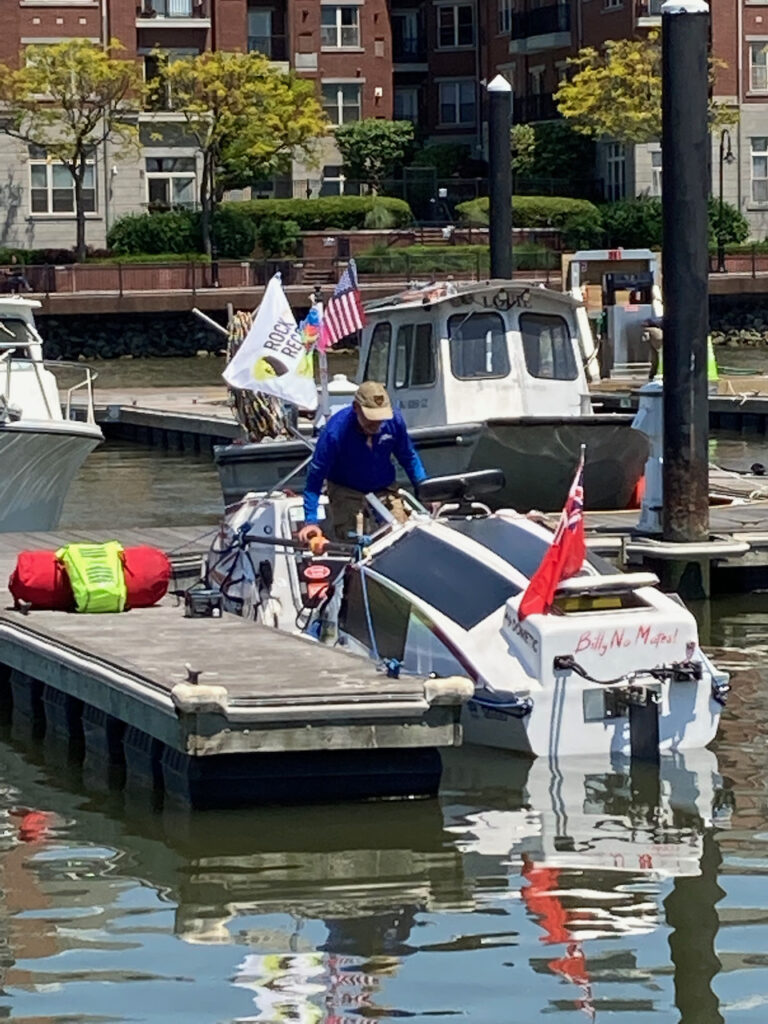
Check this out… he was in the marina across from our slip. We left before he did… The Great Loop is a day on Winnipesauki in comparison!
https://ny2uksolorow.co.uk/the-challenge/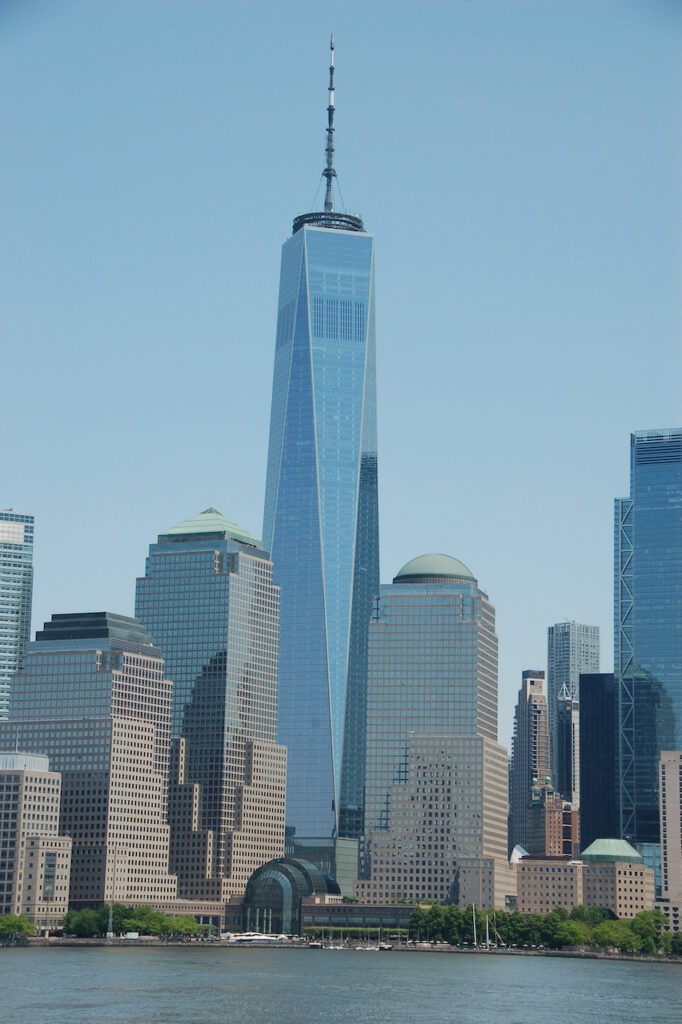
One last glance… 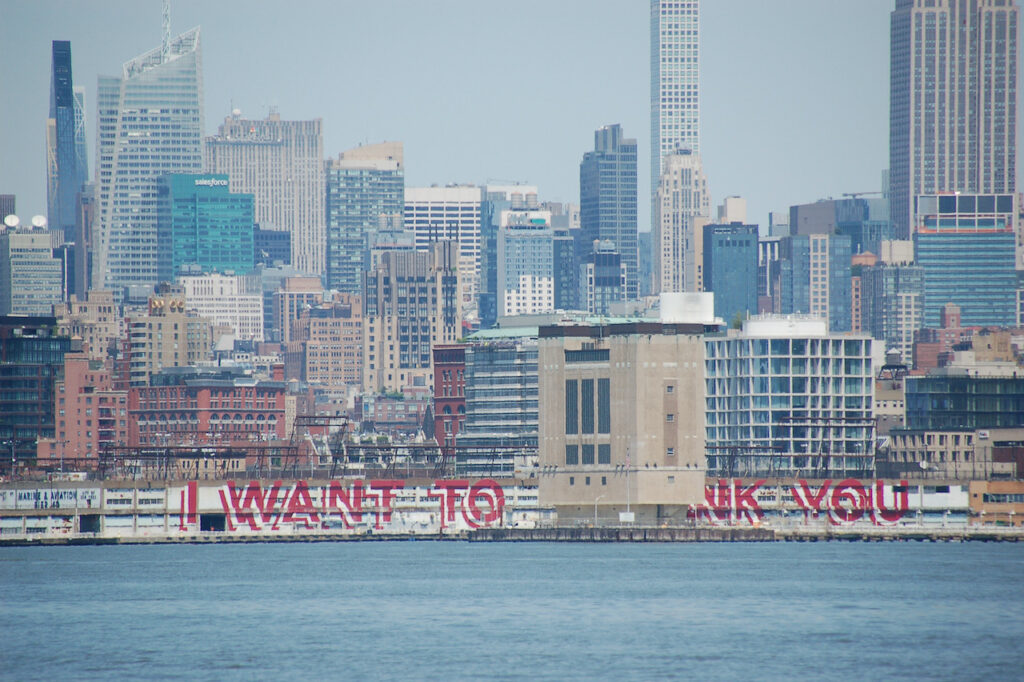
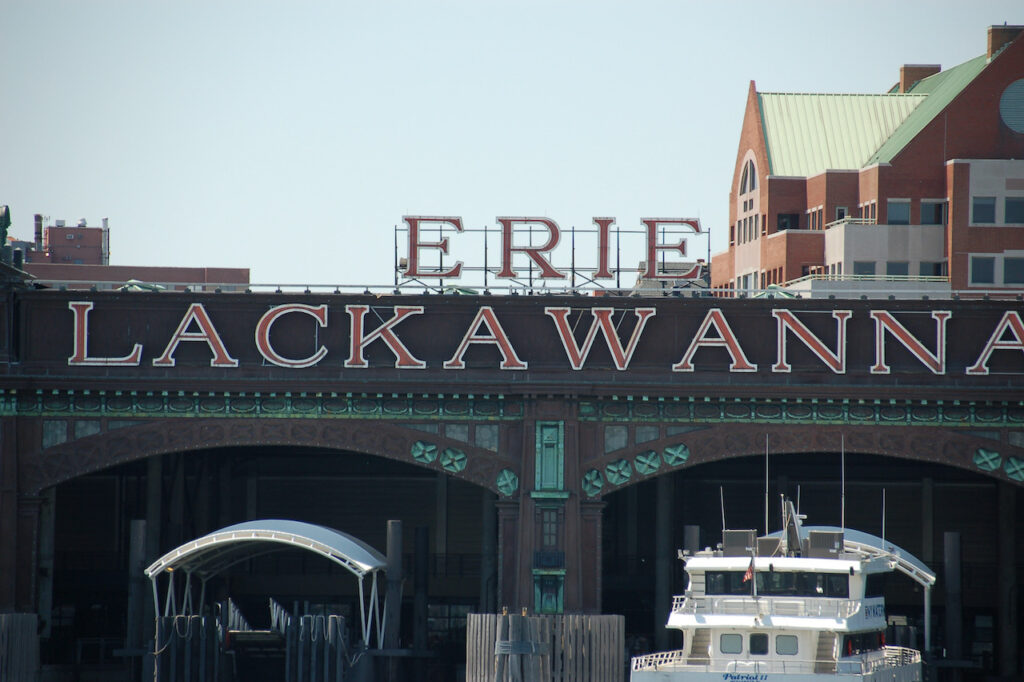
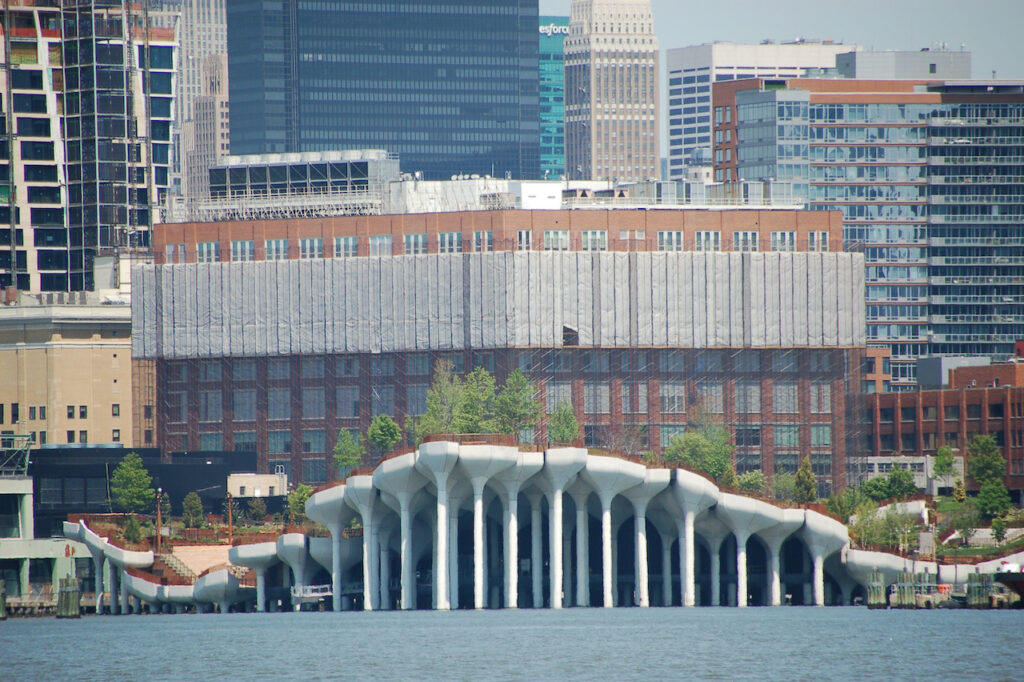
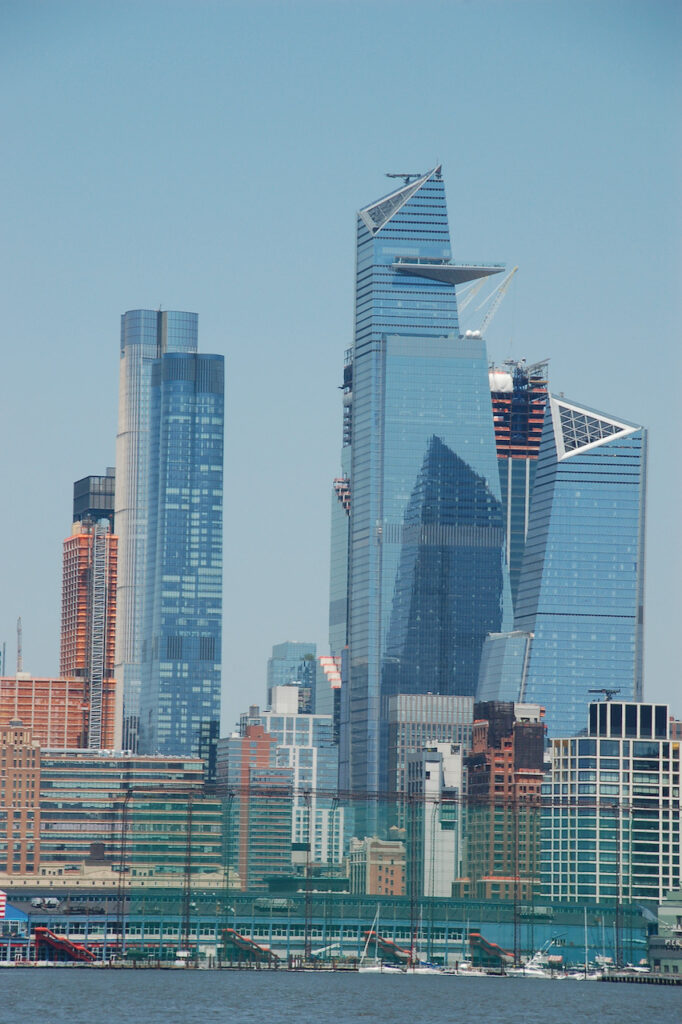
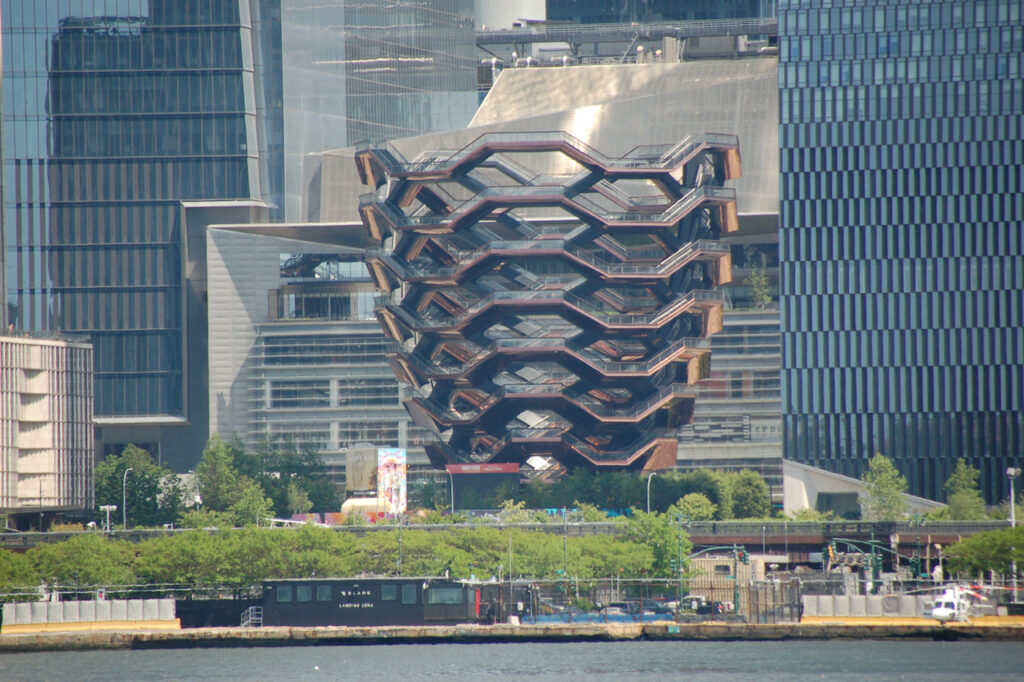
This is the “Vessel”. The scale of this structure is incredible… go visit it. 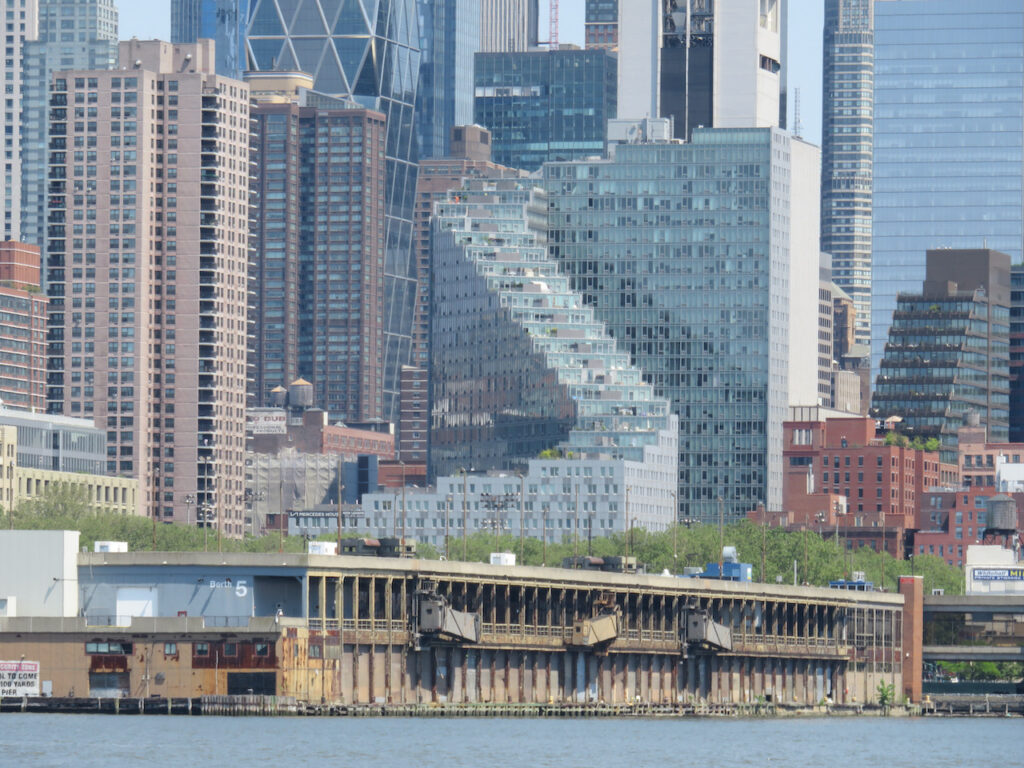
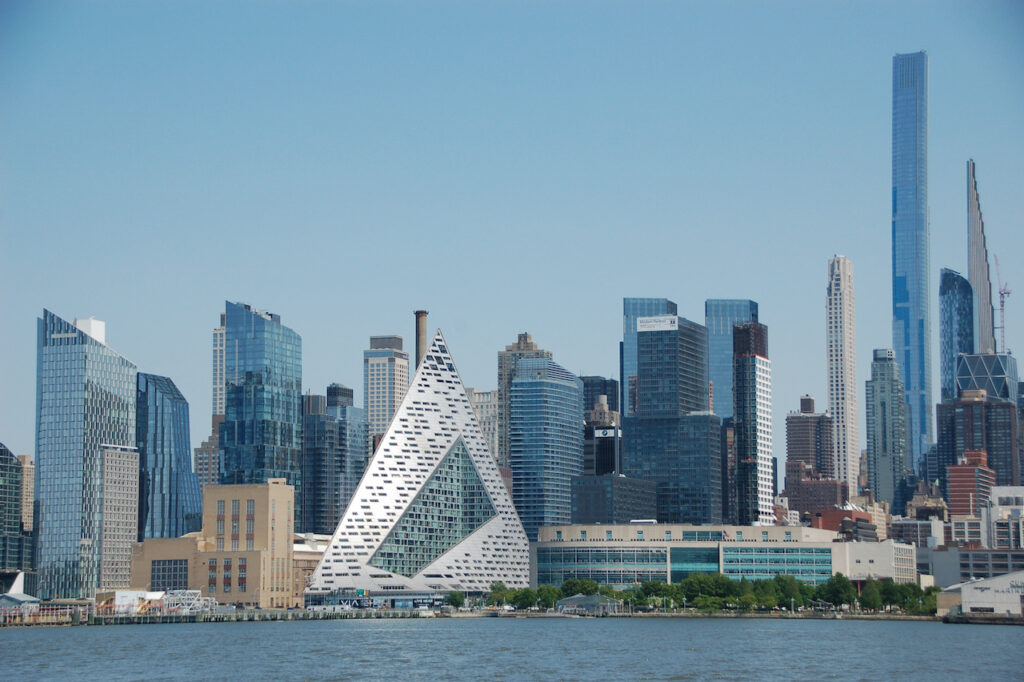

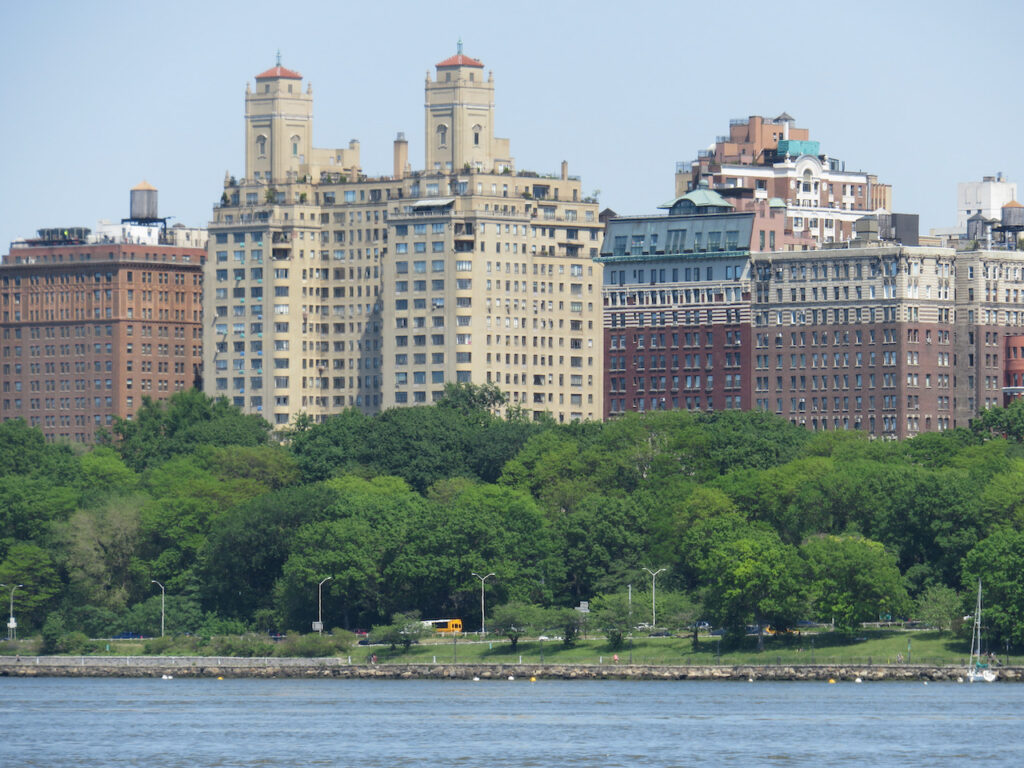
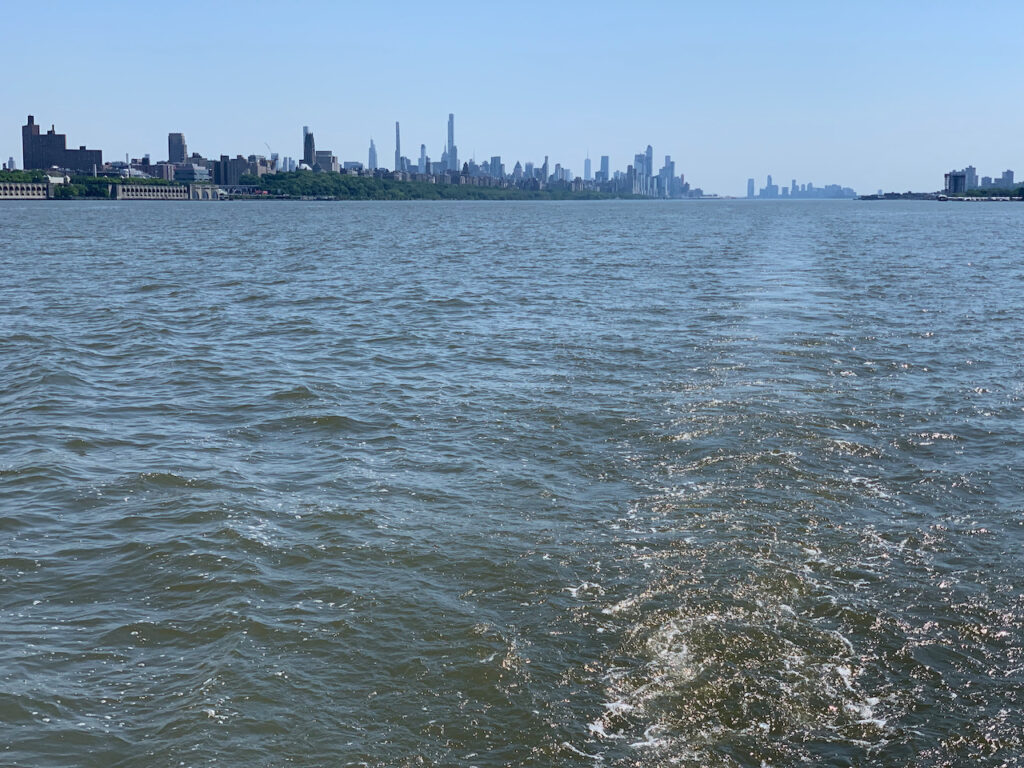
Good-bye, NYC - The Hudson River to Newburgh
Varied and spectacular…
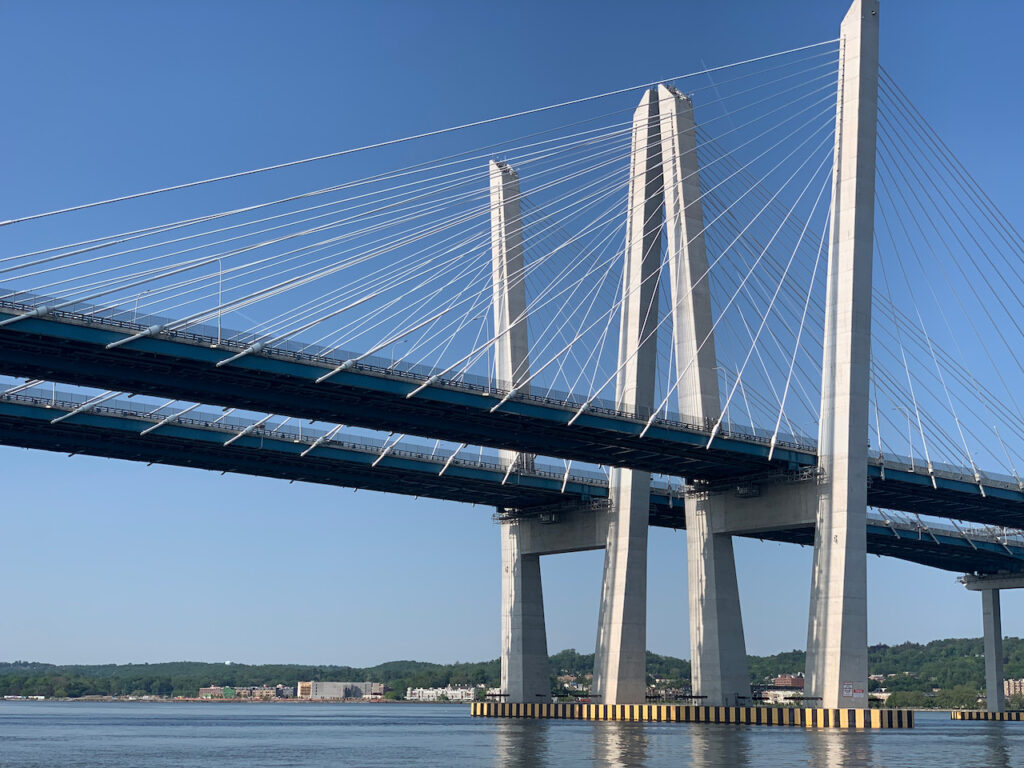
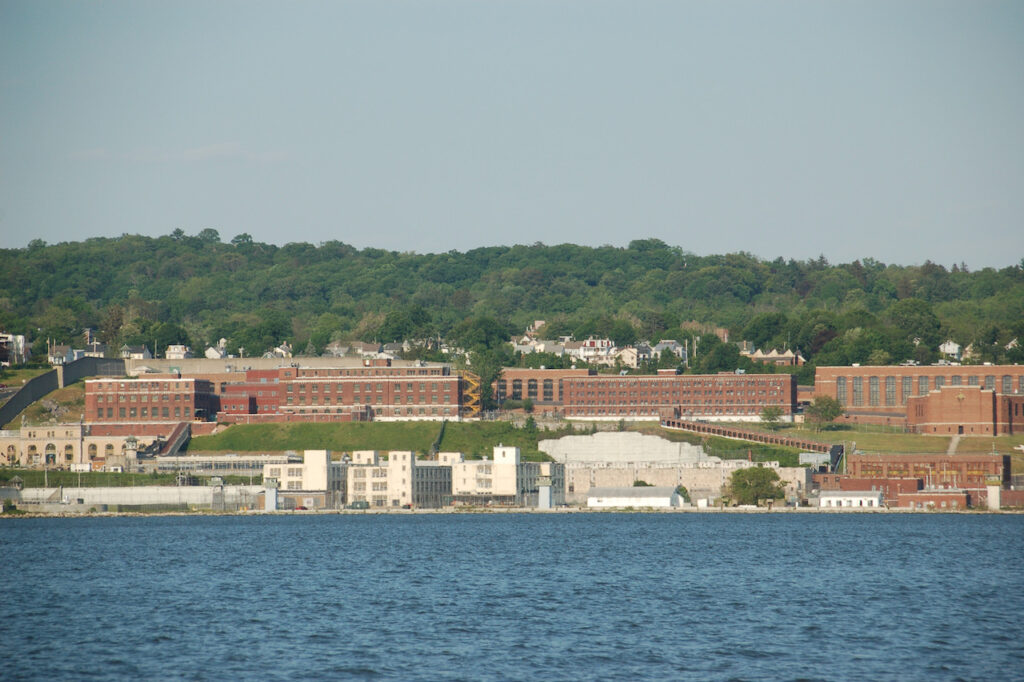
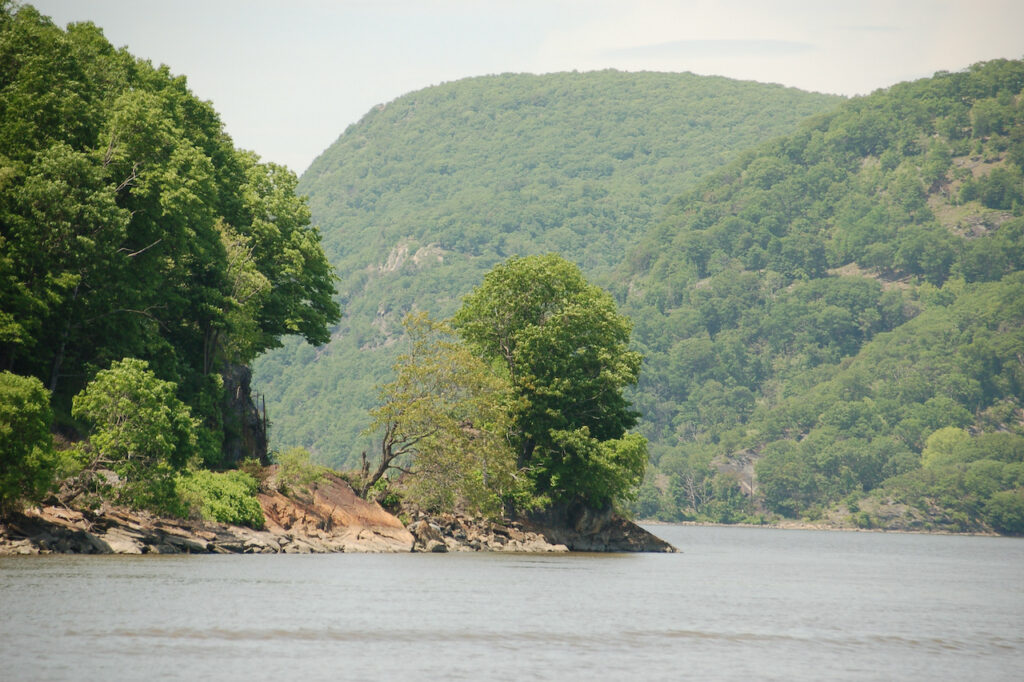
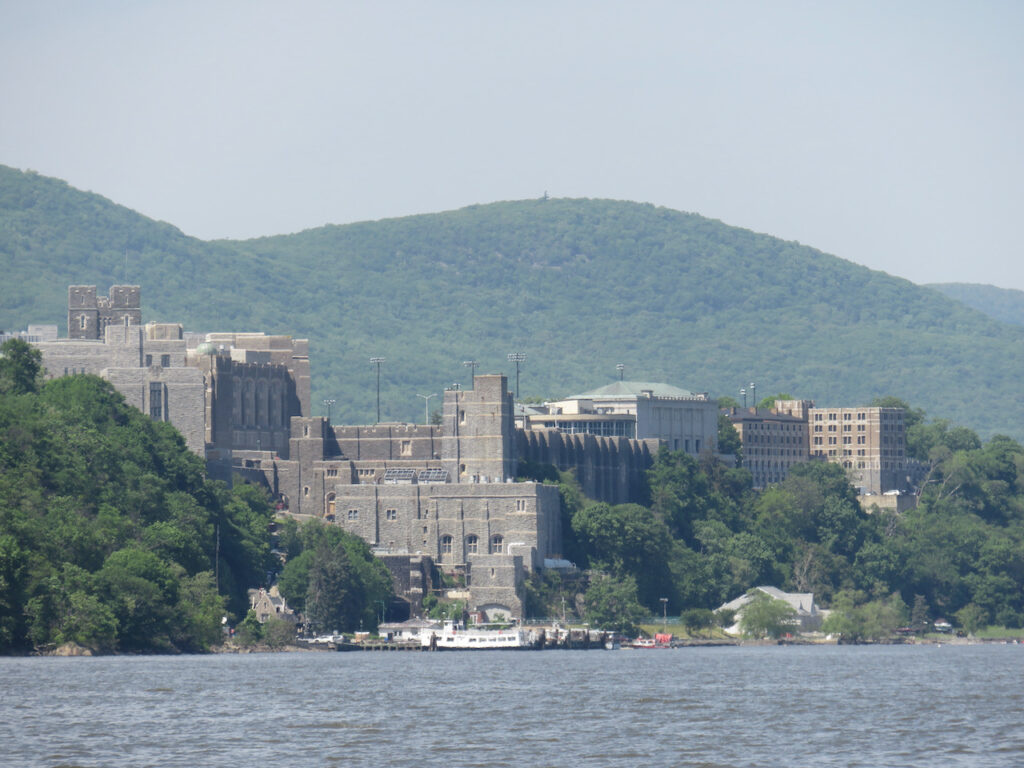
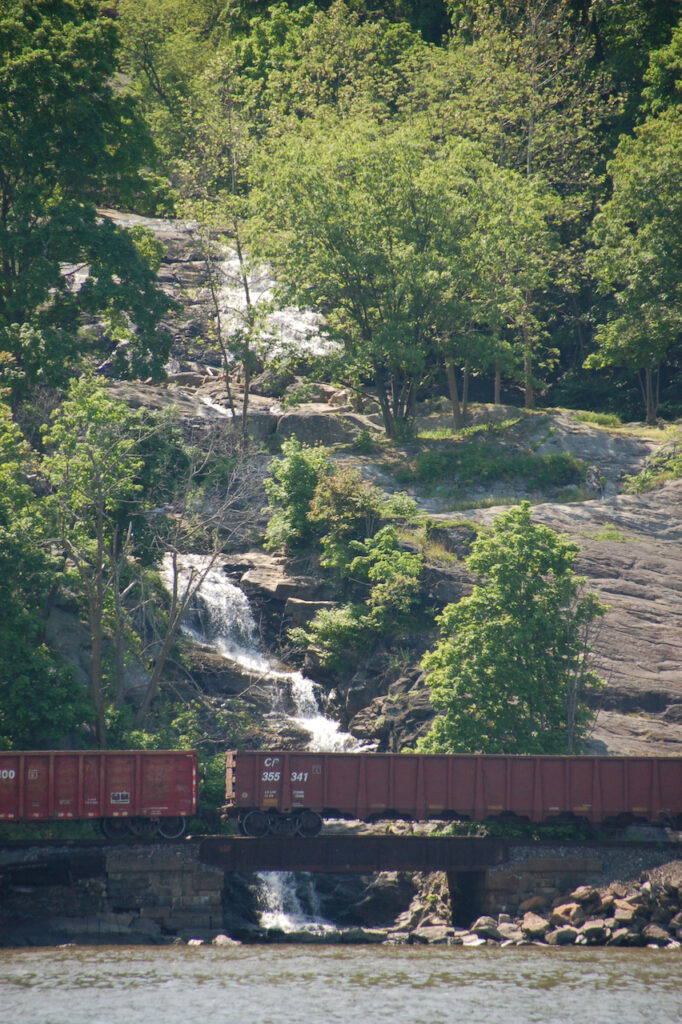

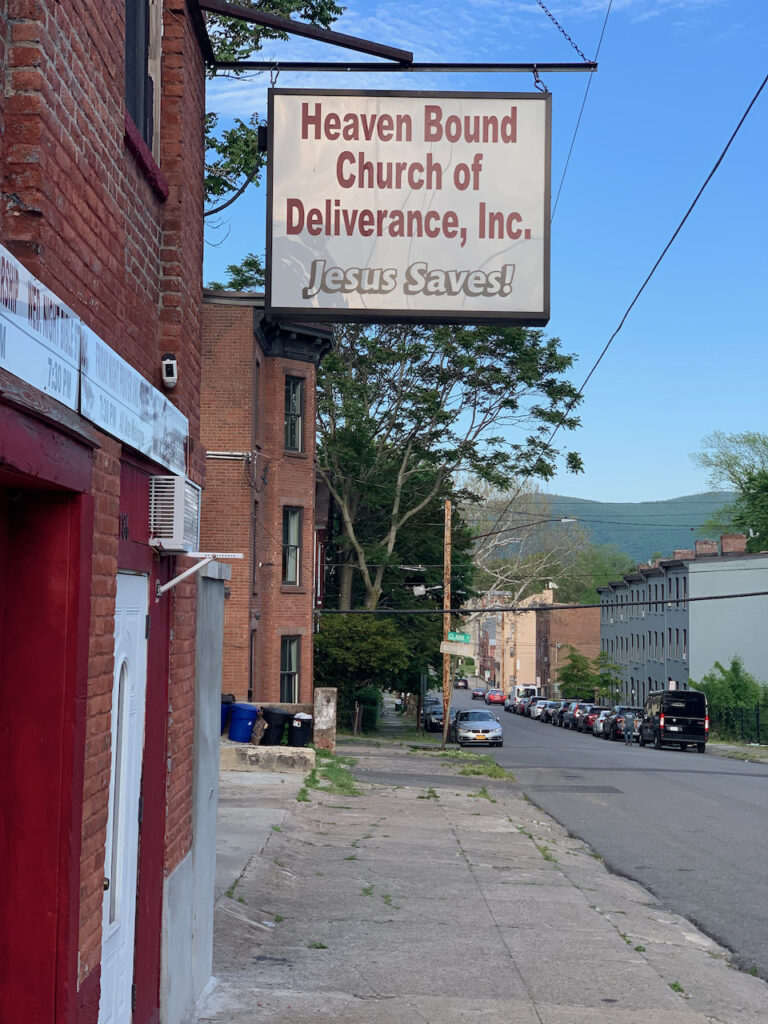
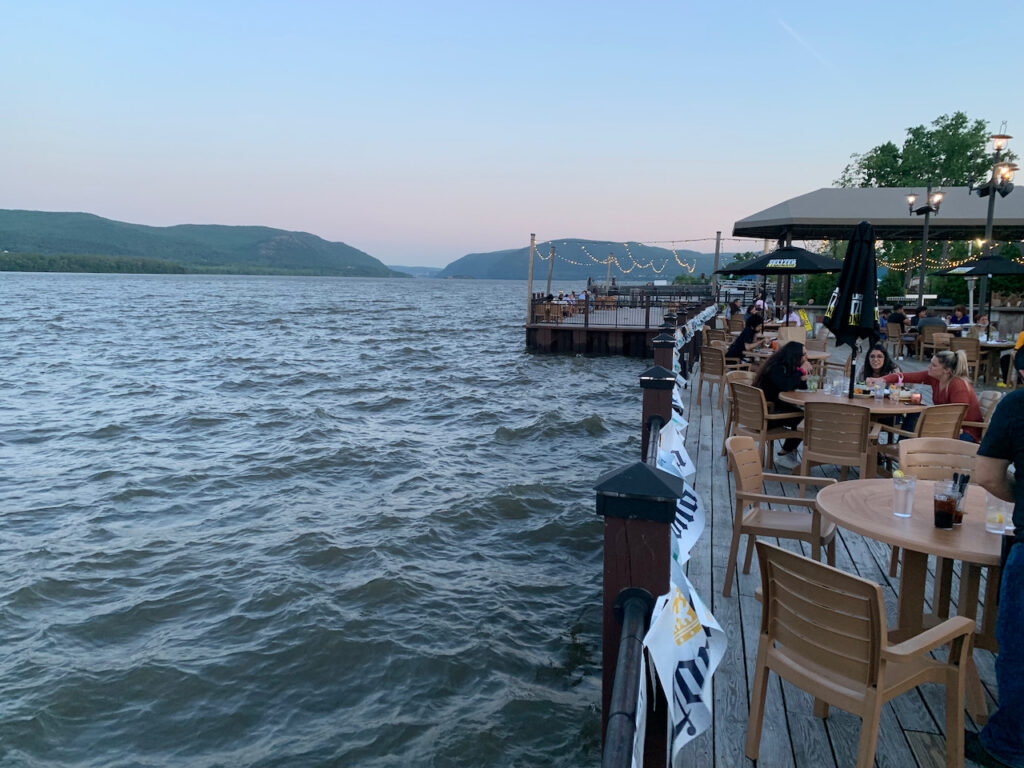
- Newburgh to Kingston
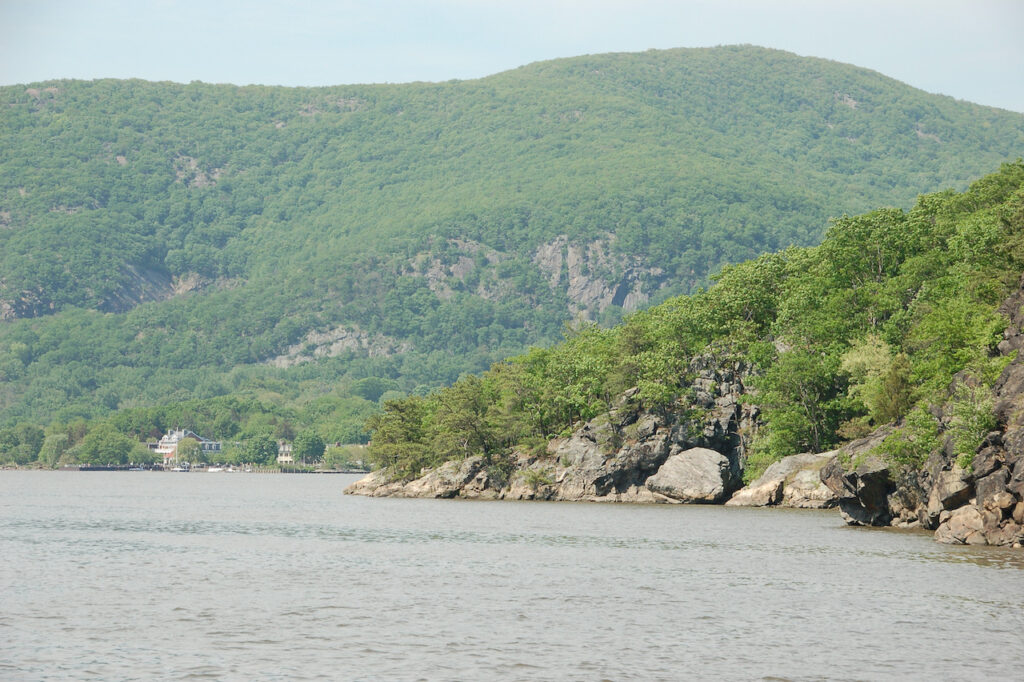
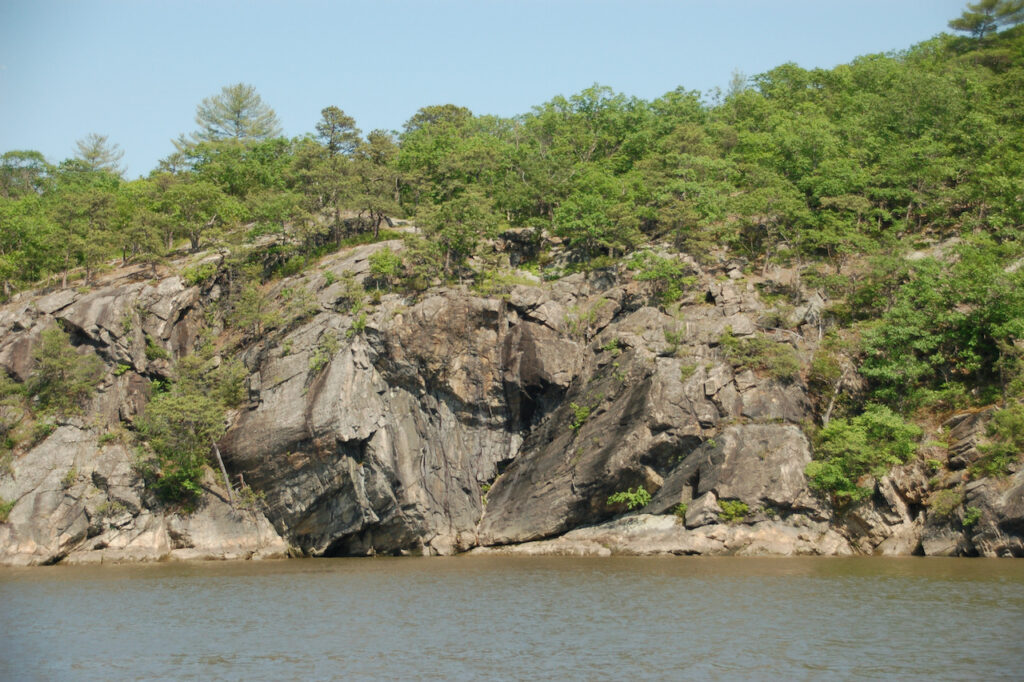
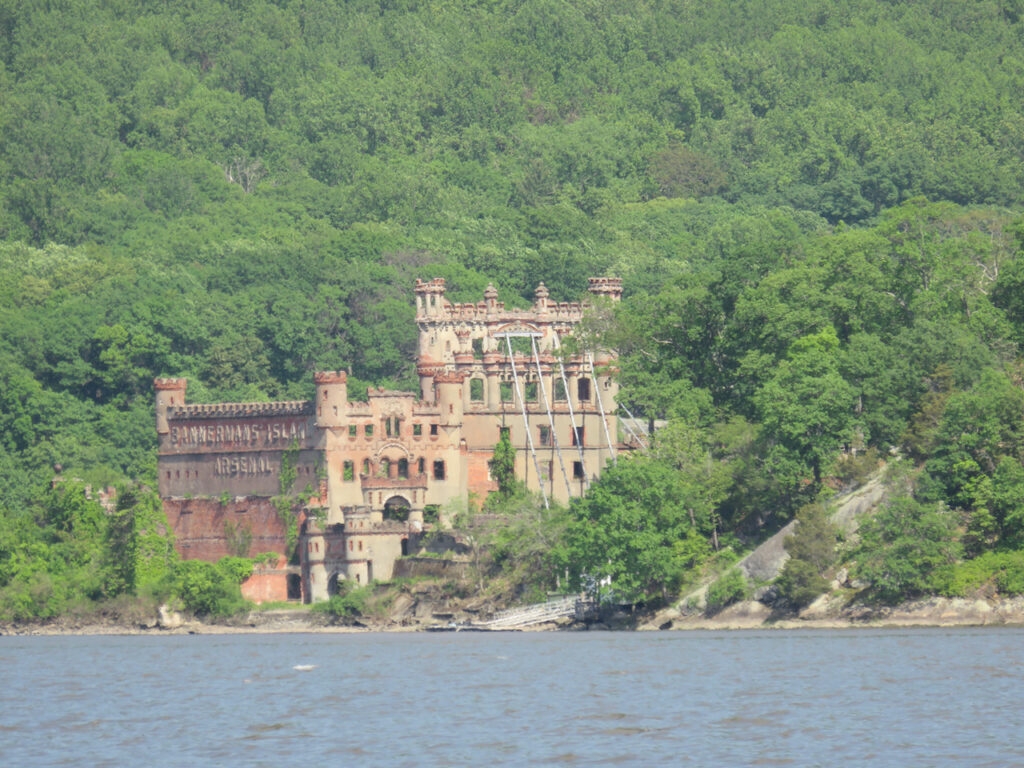
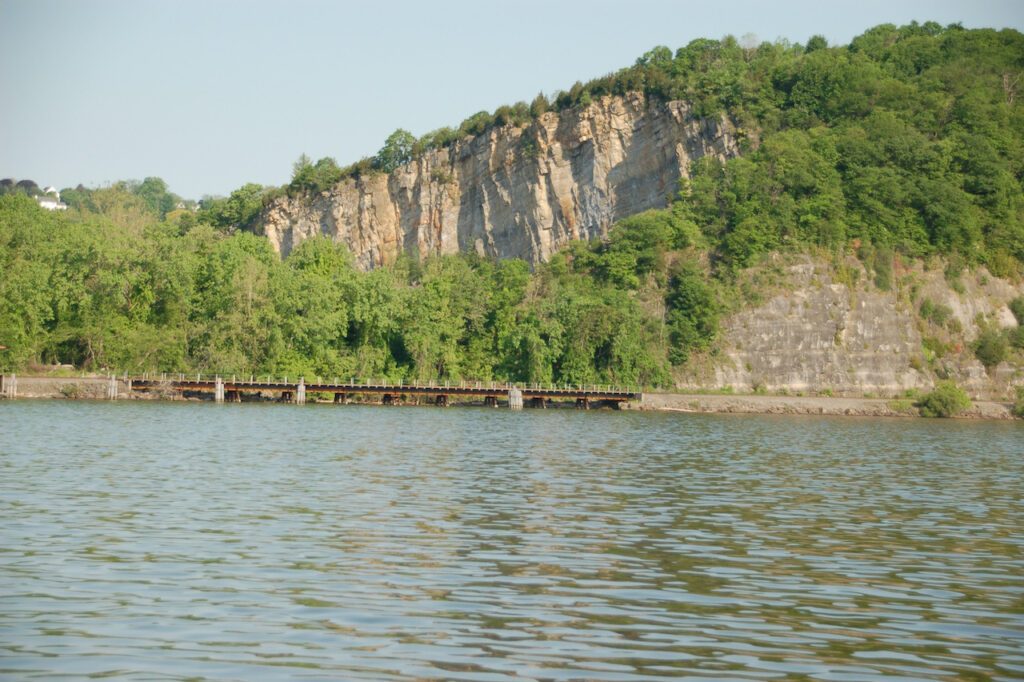

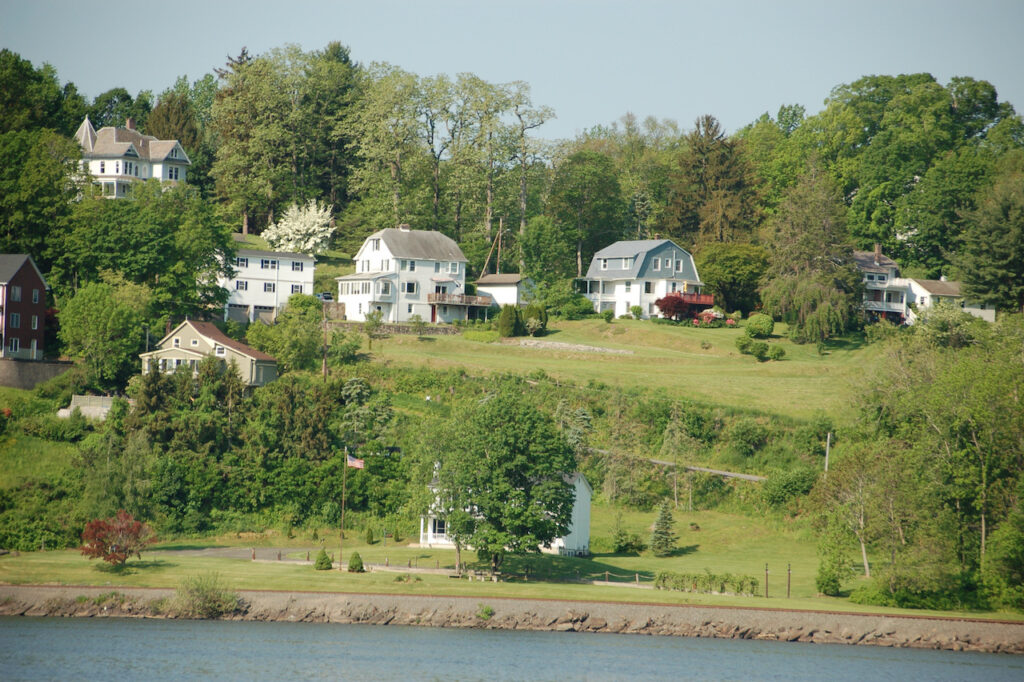

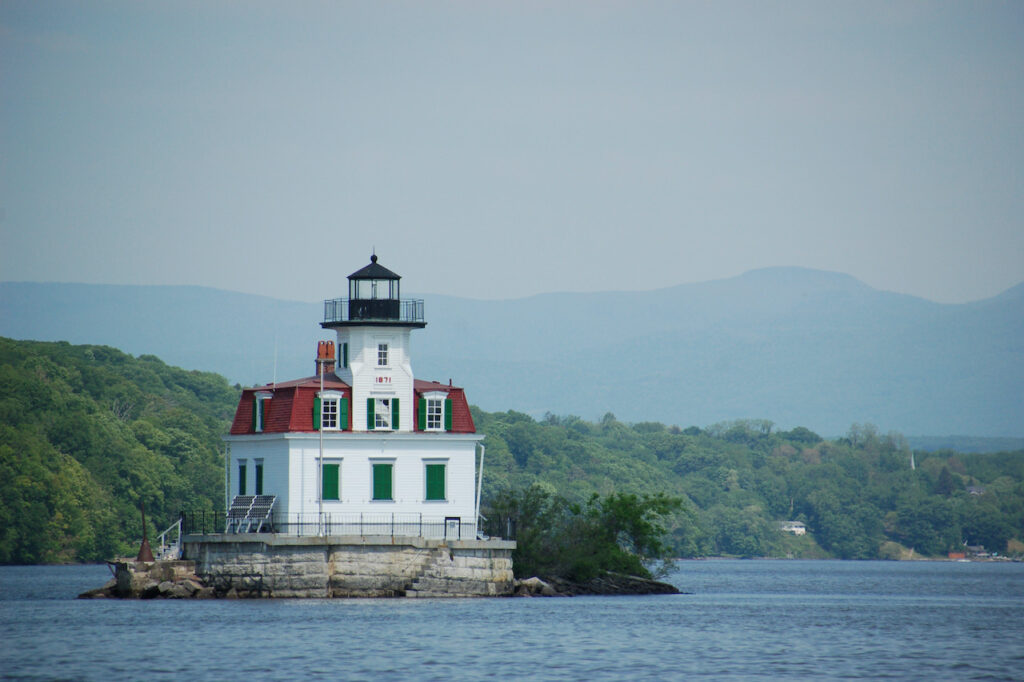
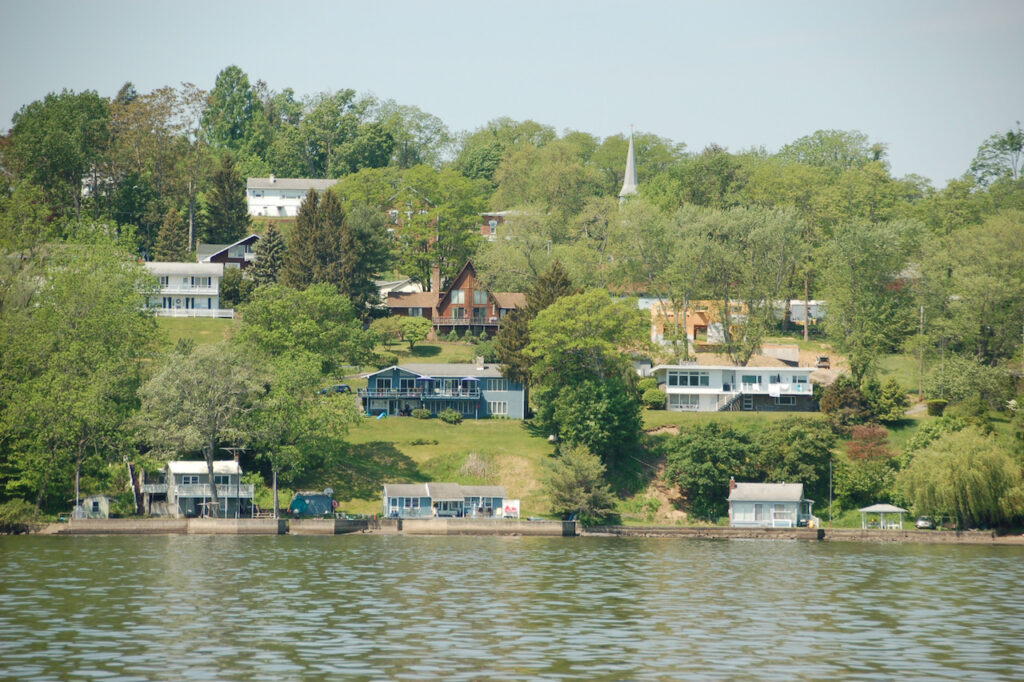
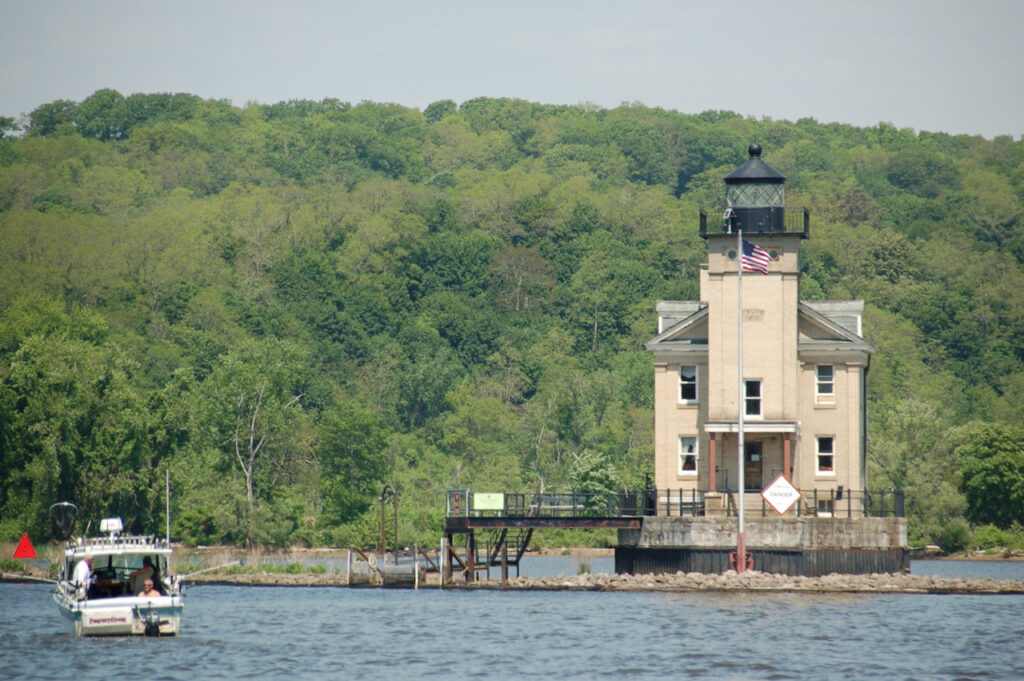
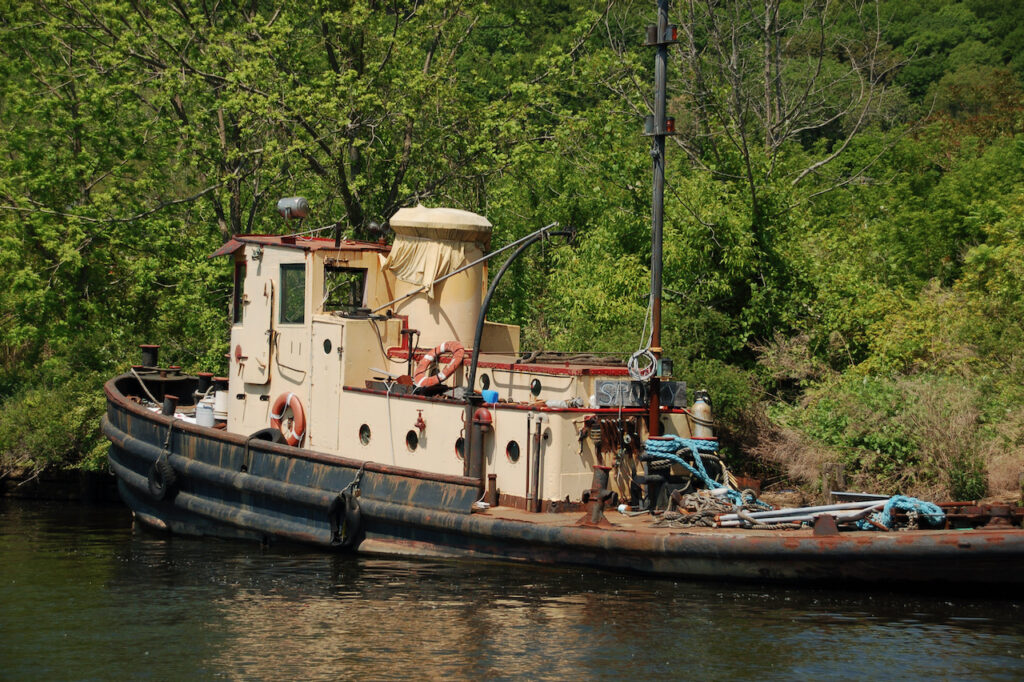
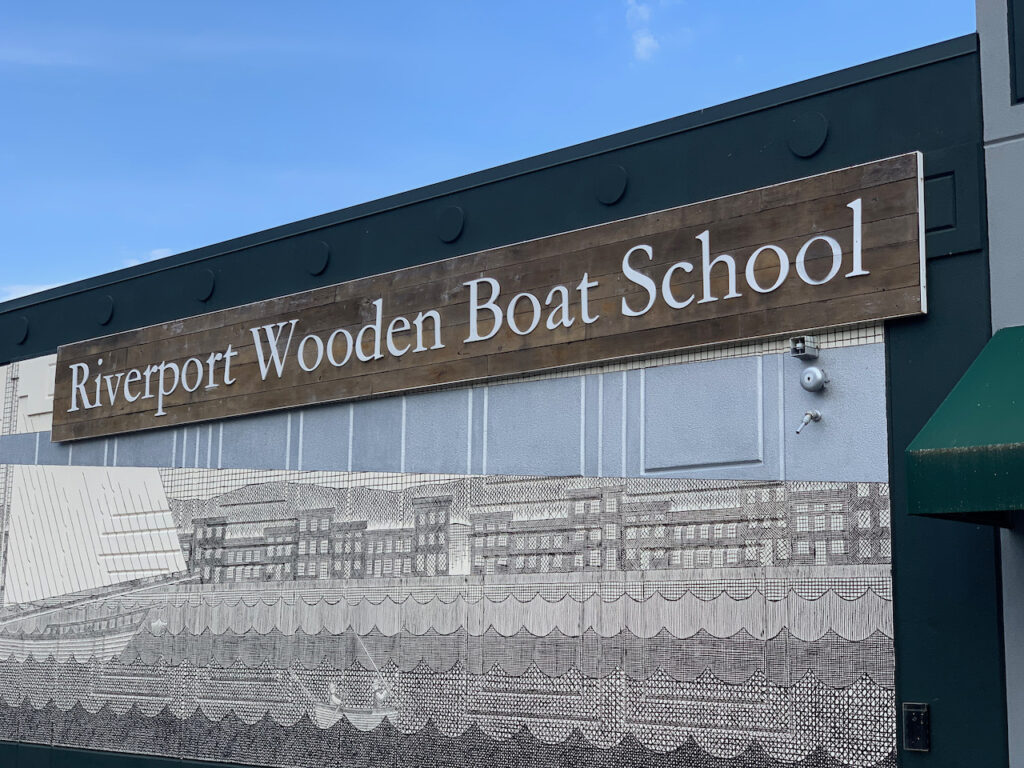
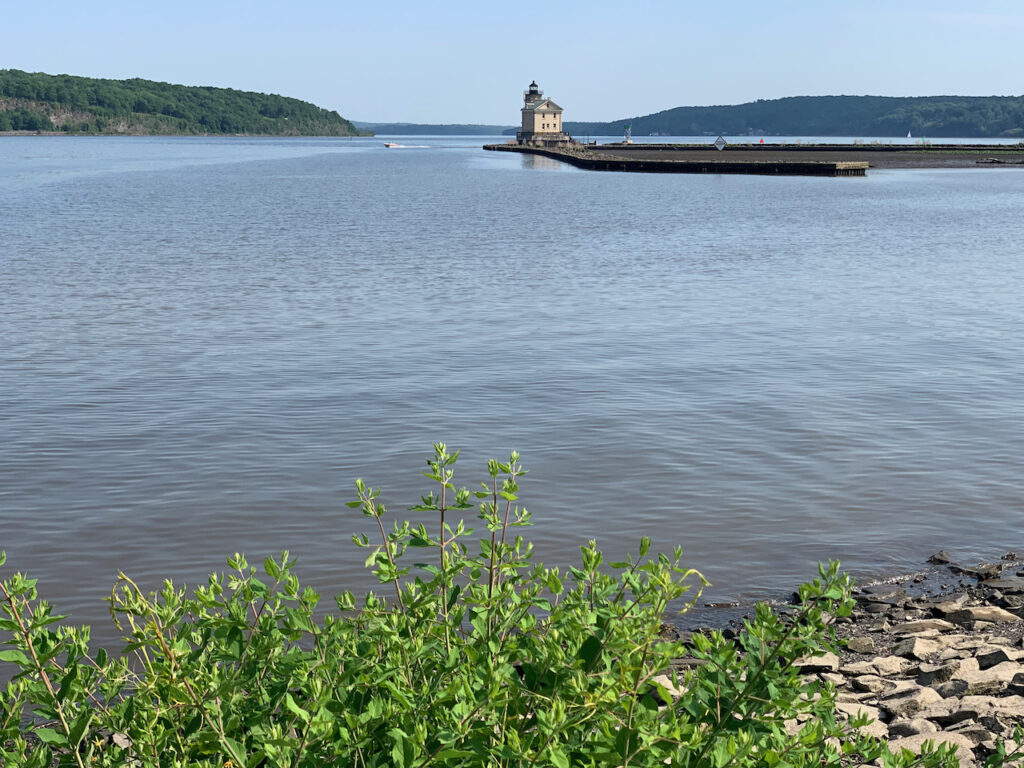
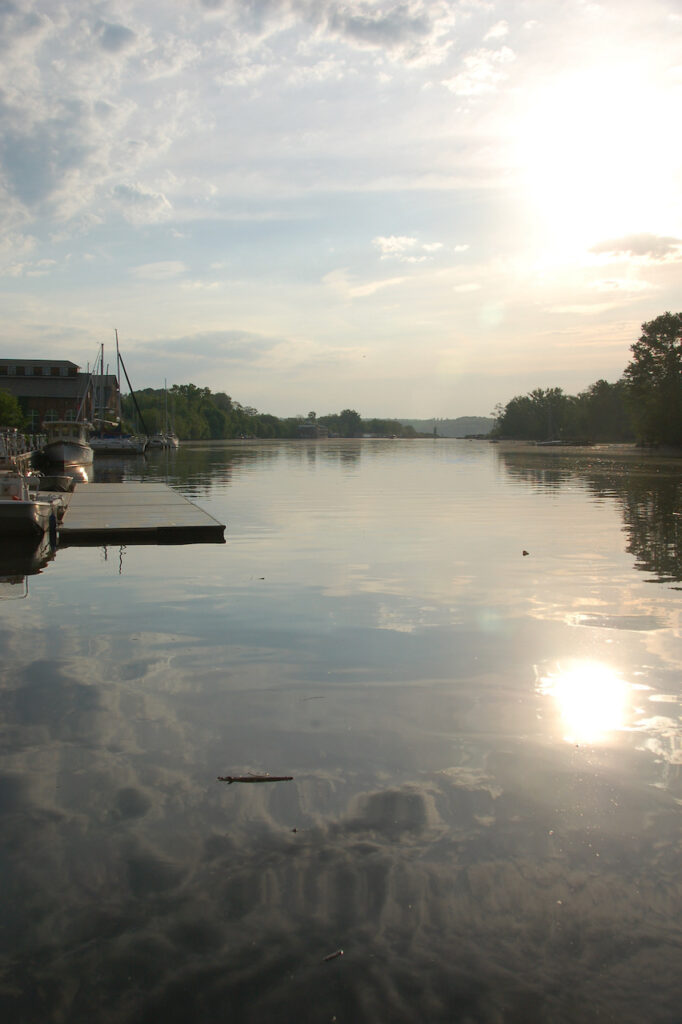

- A Short Day from Kingston to Duck Cove
After a 5:30A revelry for the crew races, Duck Cove was as far as we wanted to go. (Kingston won two of the races 👍) This part of the Hudson River valley is more lowland at the river which is nicely set off by the Catskills in the distance. There is also an eclectic mix of manicured lawns sweeping down to the river, what were probably, once, humble camps and raw undeveloped river front. Oh, and yes, more bridges. But Christian is planning a “Fun with Hudson River Bridges” post so you can enjoy those images then.

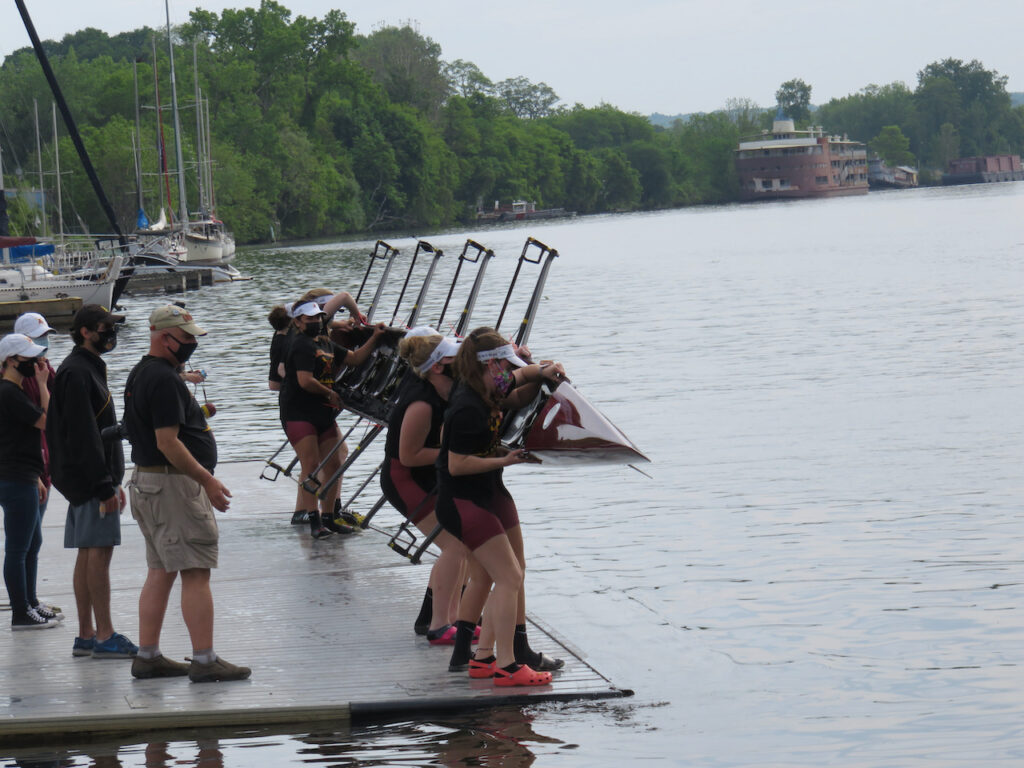
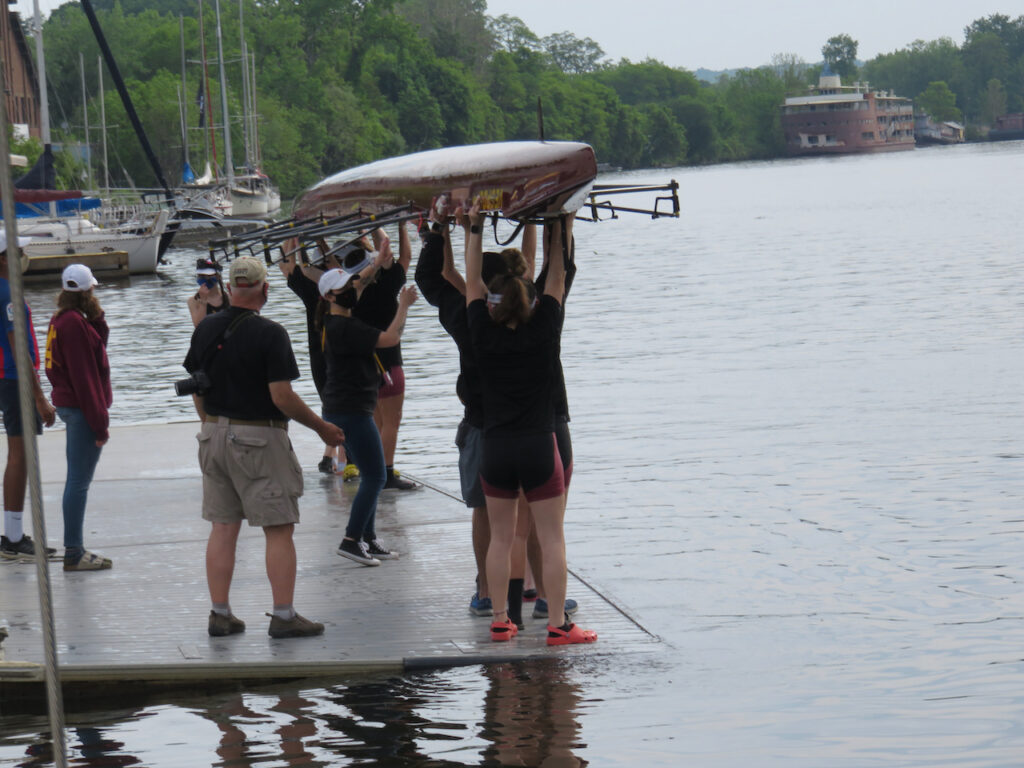
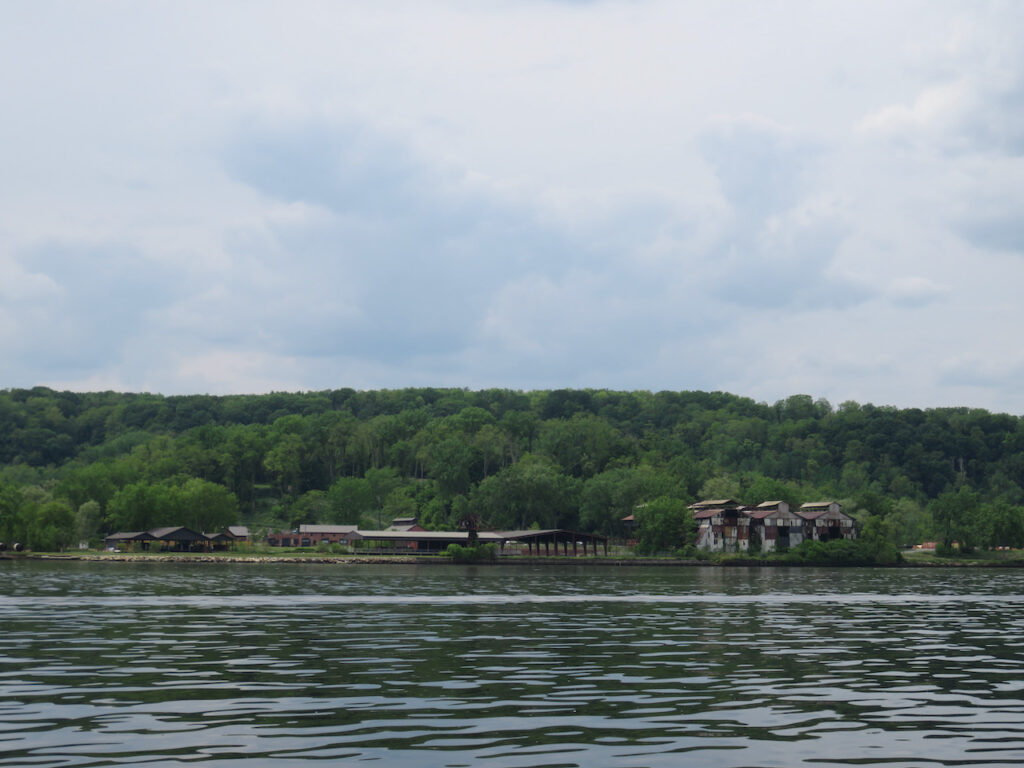
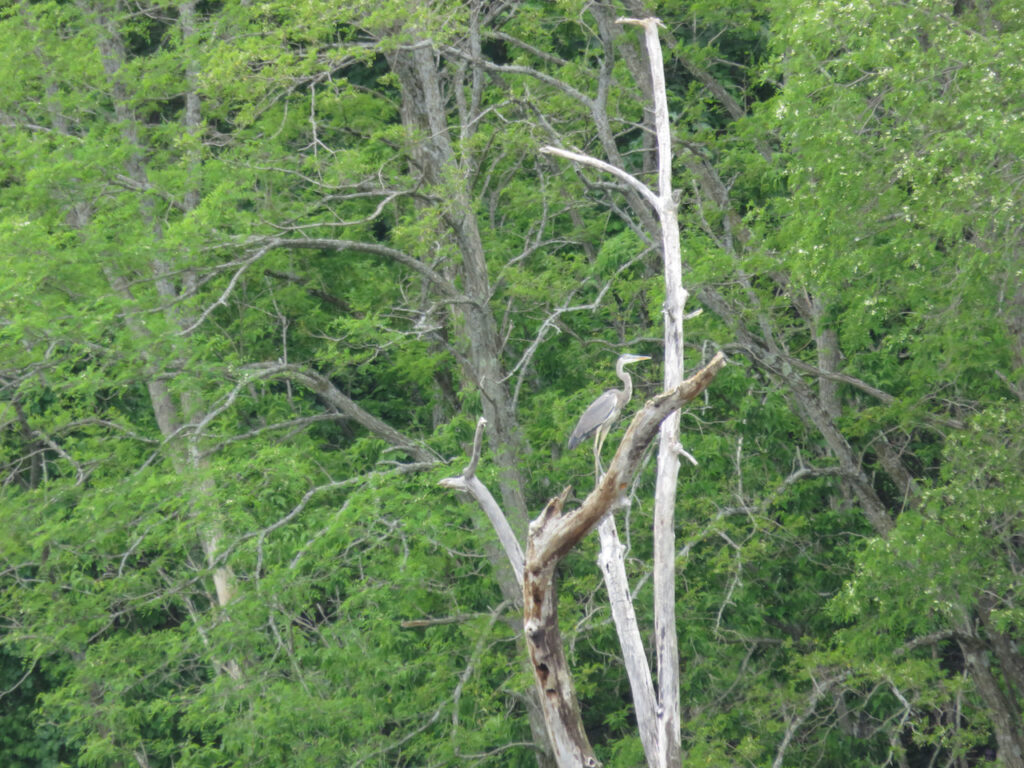
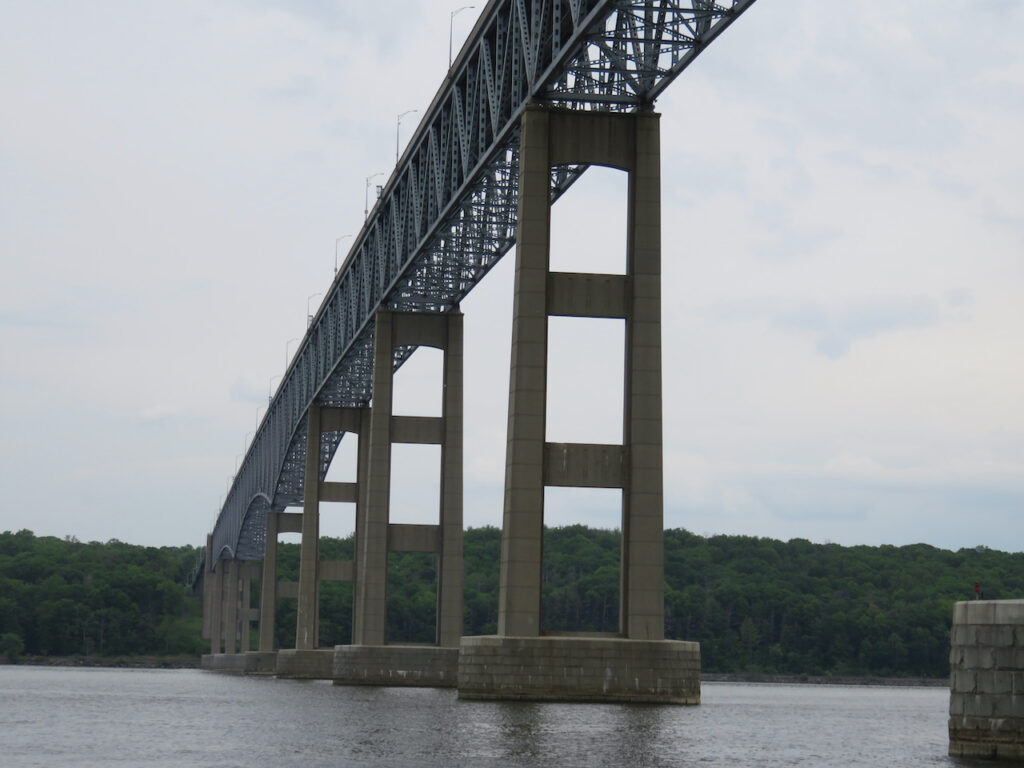


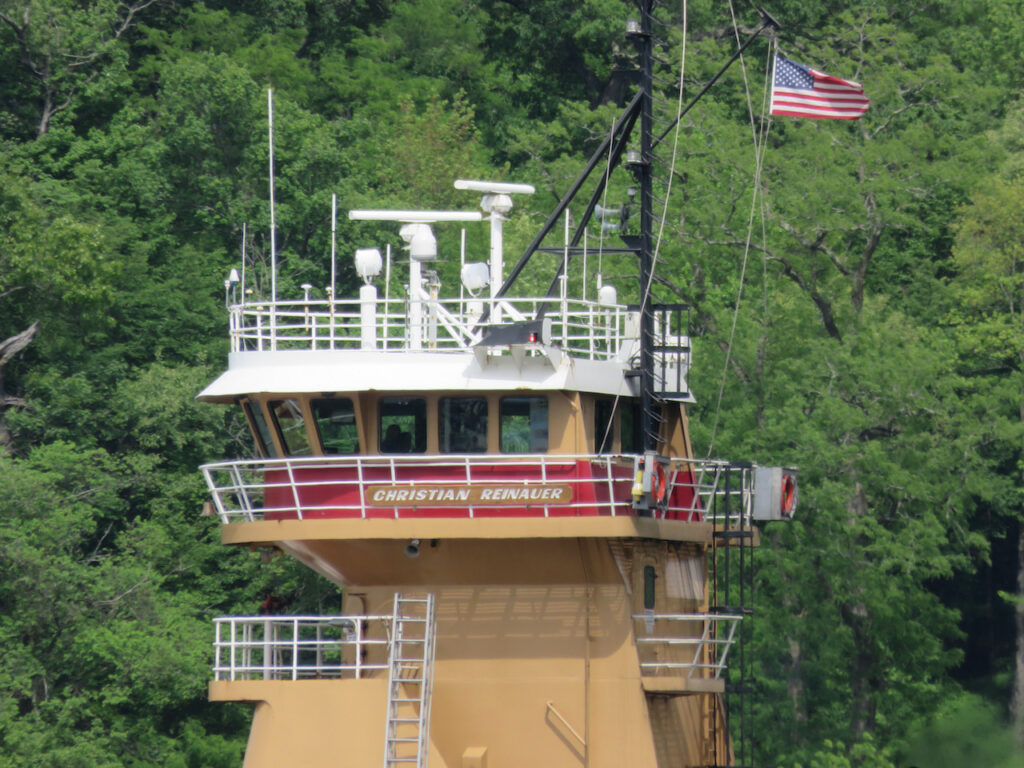
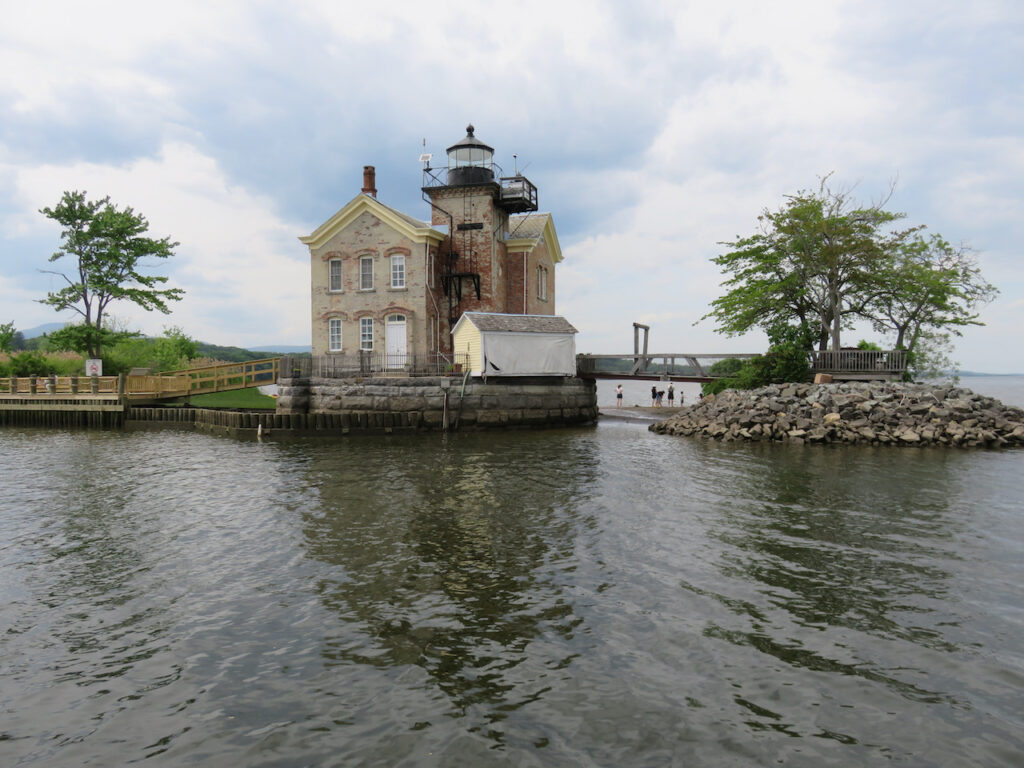
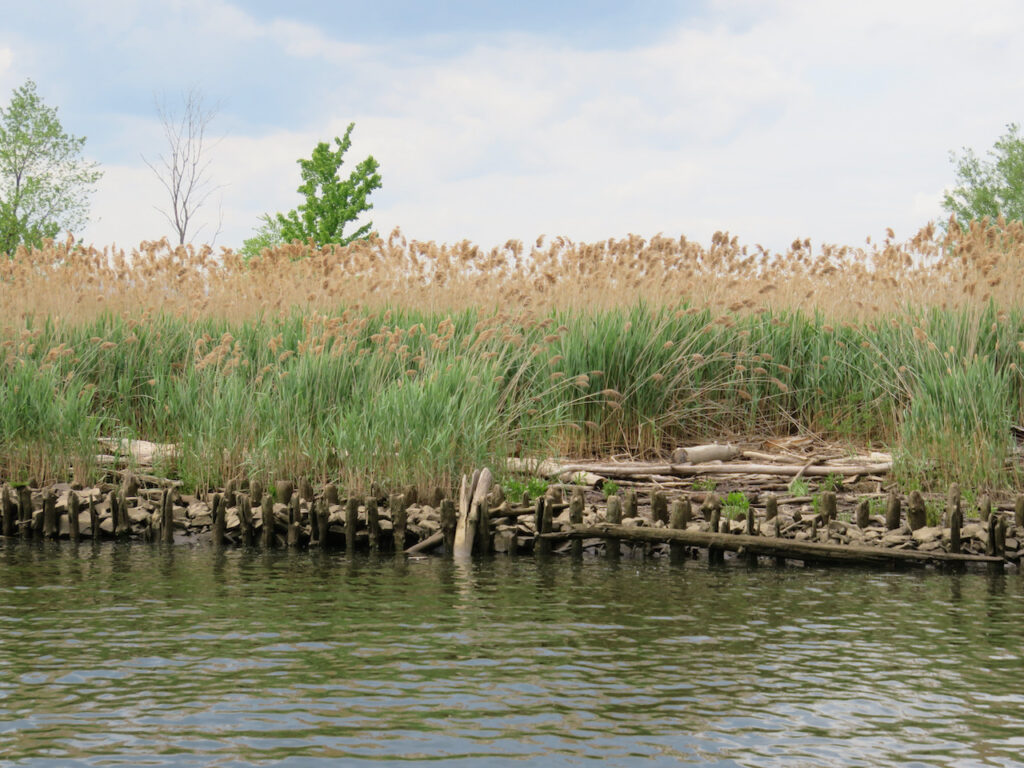

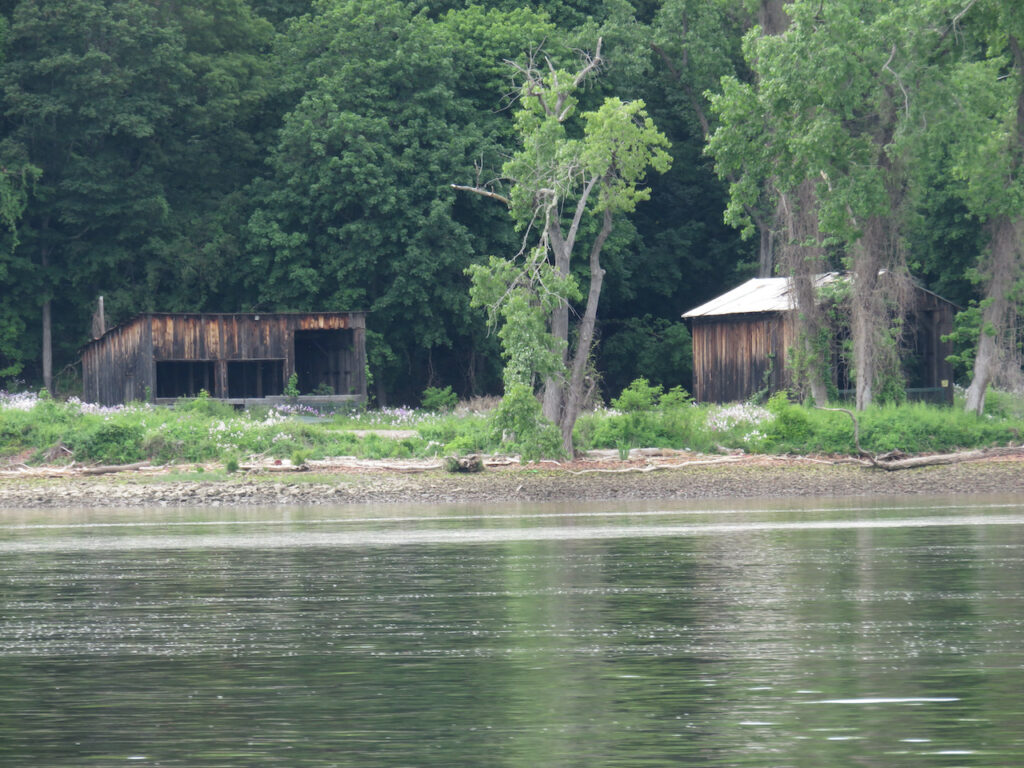

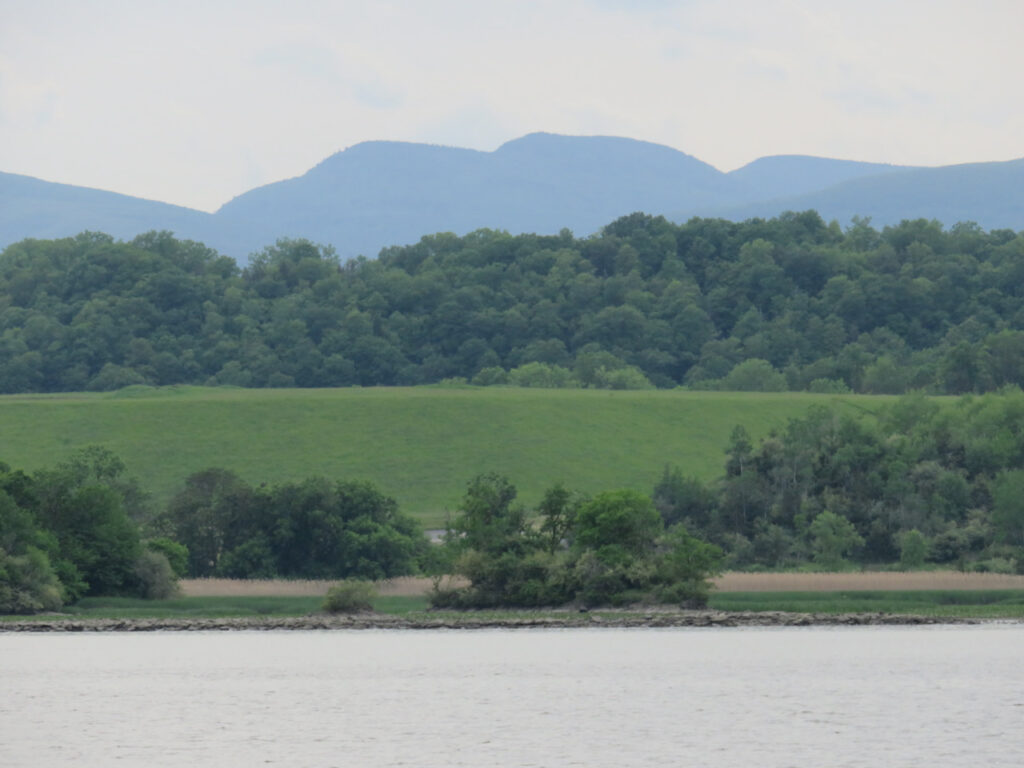
- Catskill, NY
The short jump from our wonderful anchorage in Duck Cove to Catskill, NY was not because we wanted to visit the location of Irving’s ‘Rip Van Winkle’ (one of the bridges you are sure to hear about in “Fun with Hudson River Bridges) or the place where the painter Thomas Cole lived. Catskill is the home of Riverside Marine Services, the experts in mast un-stepping, and our destination. In addition to excellent boating resources (clean bathrooms, laundry, diesel, water and pump-out) and friendly staff, there is a quirky, artsy little town full of cats…
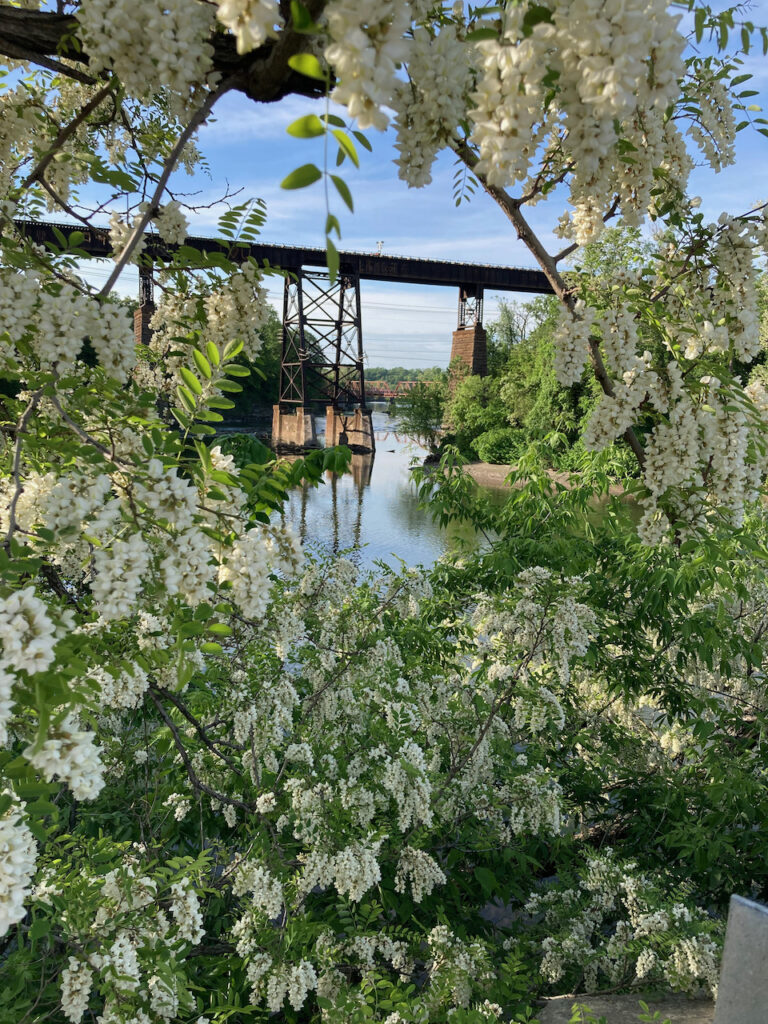
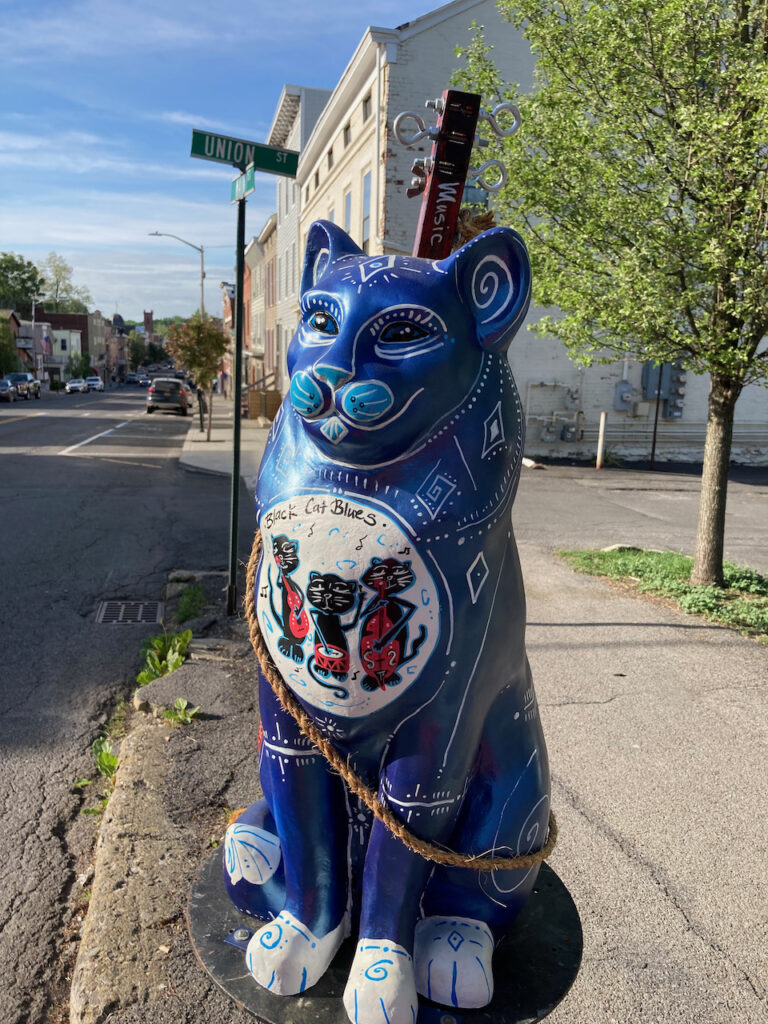
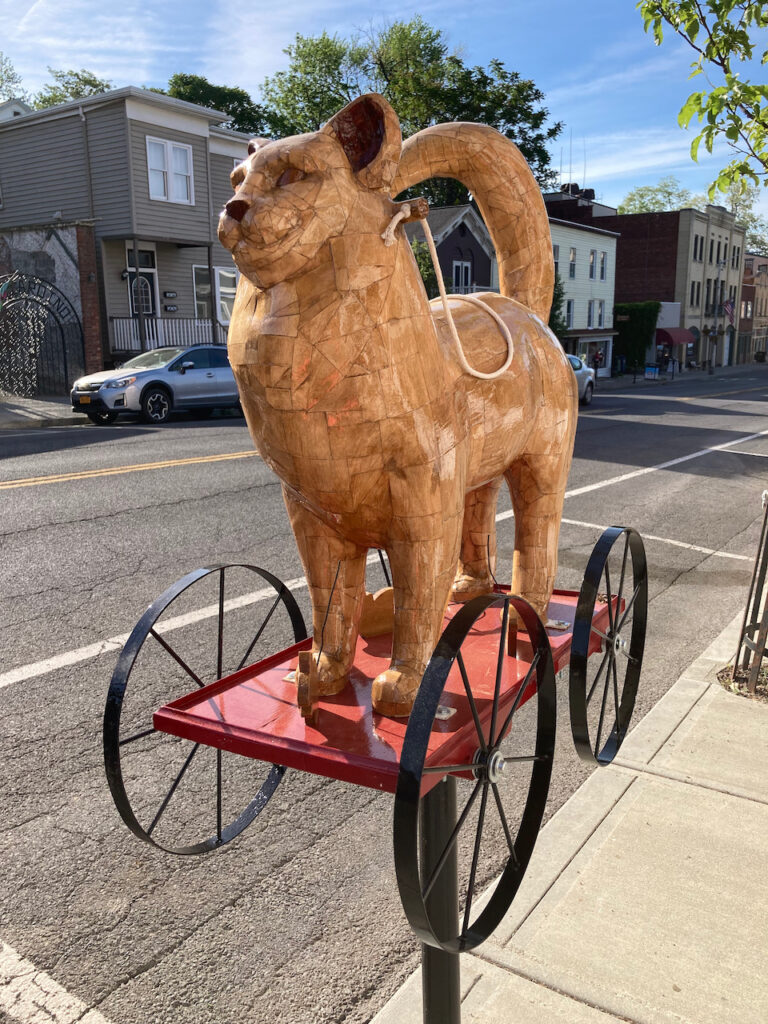
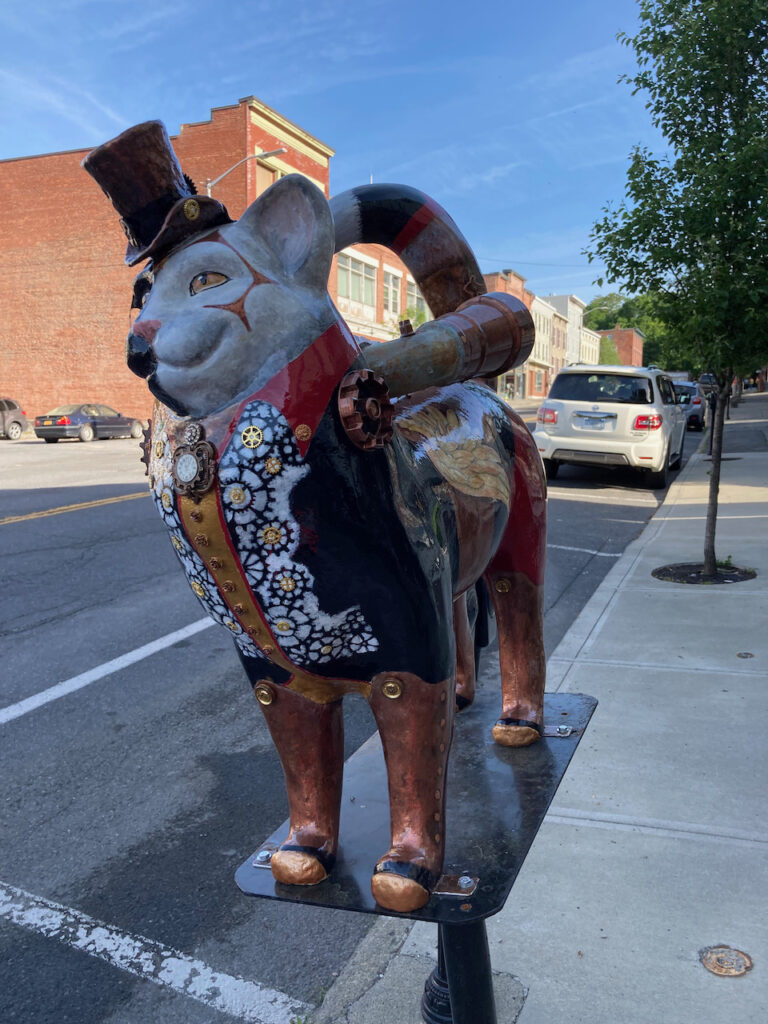
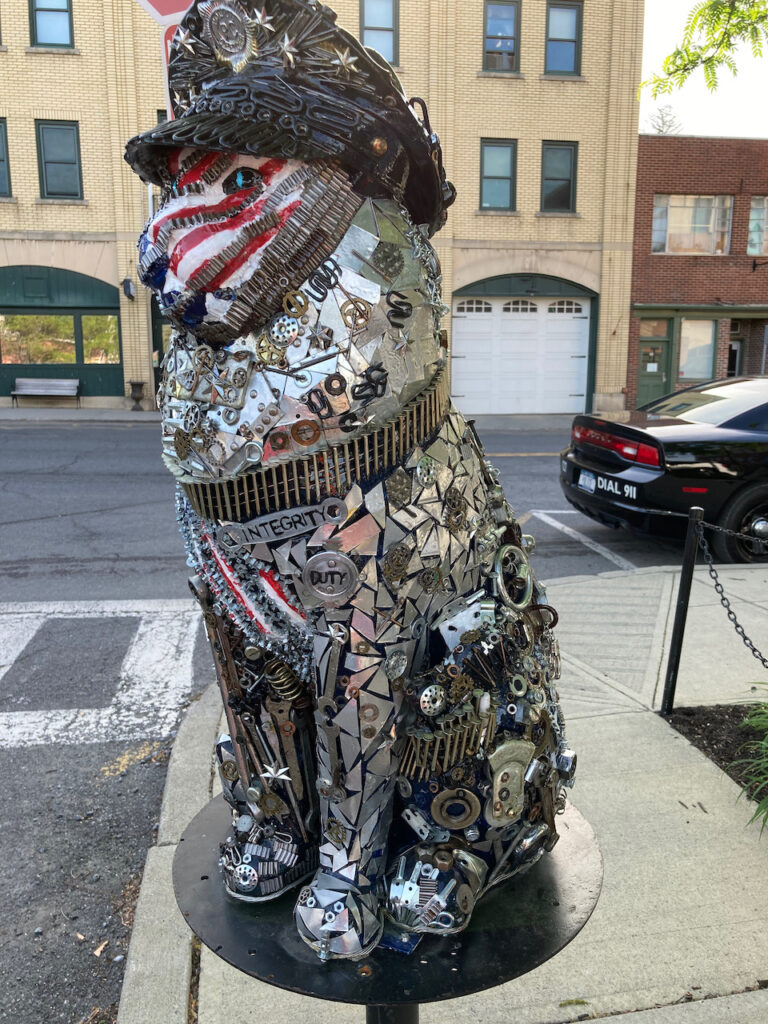
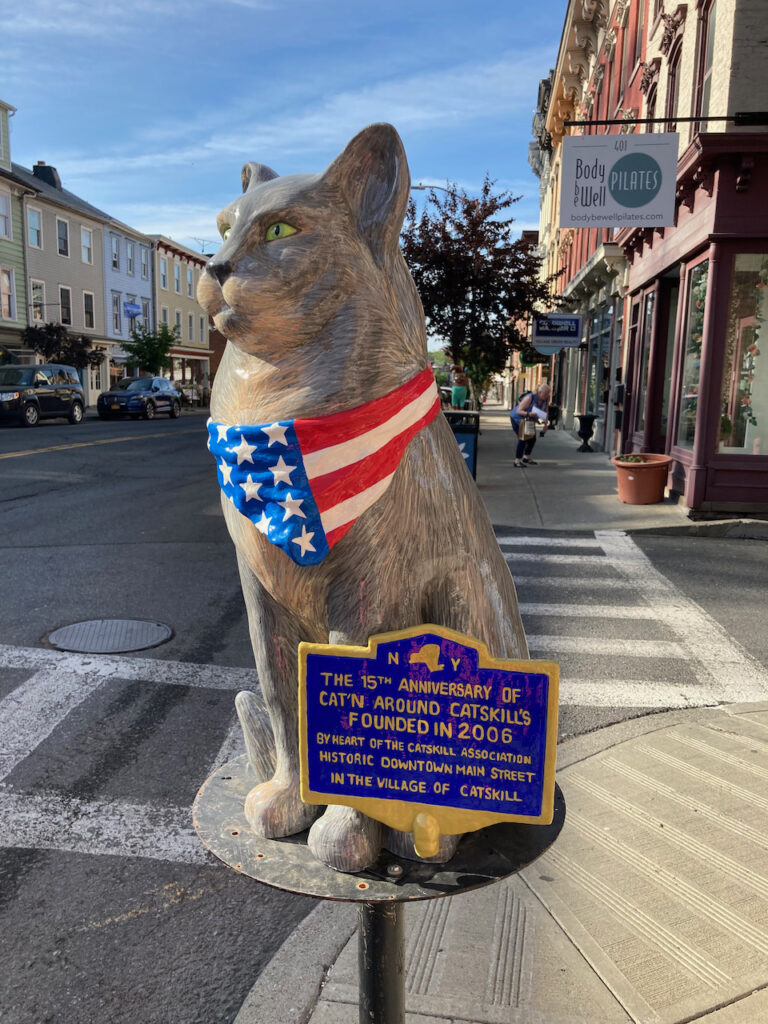

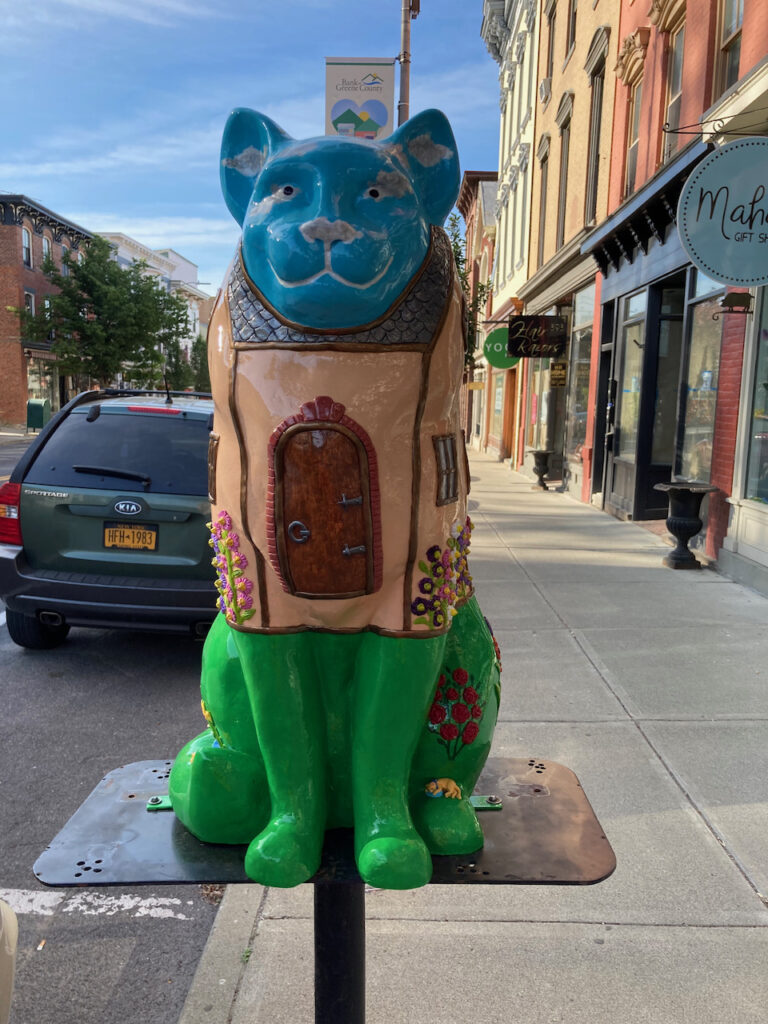

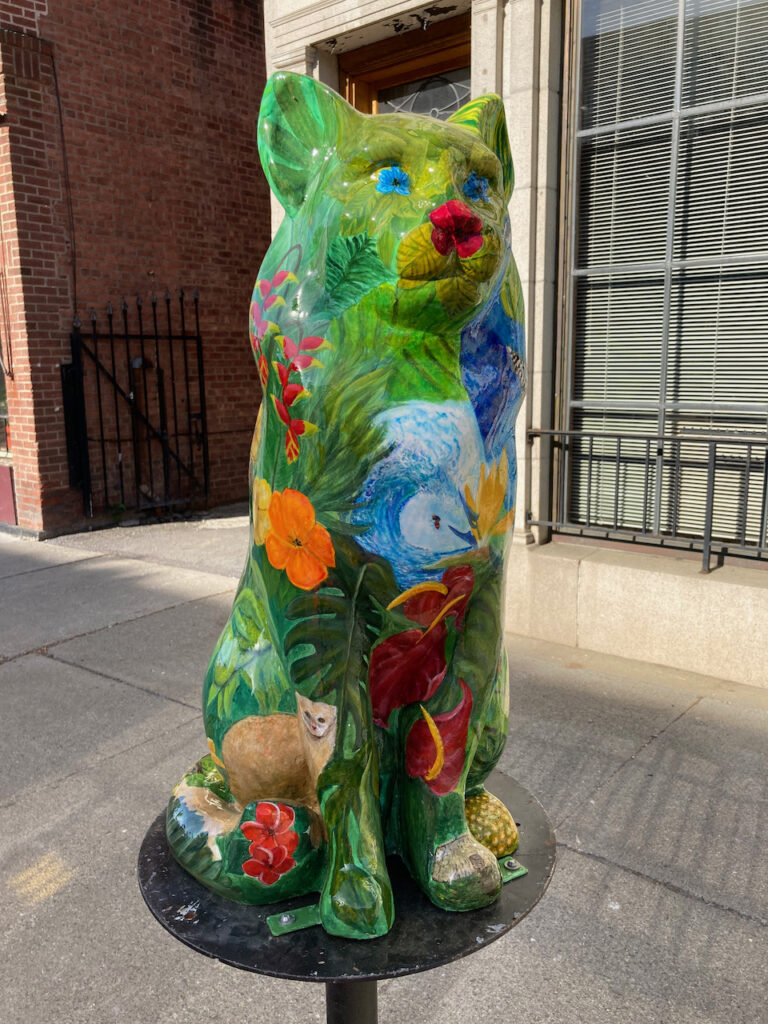
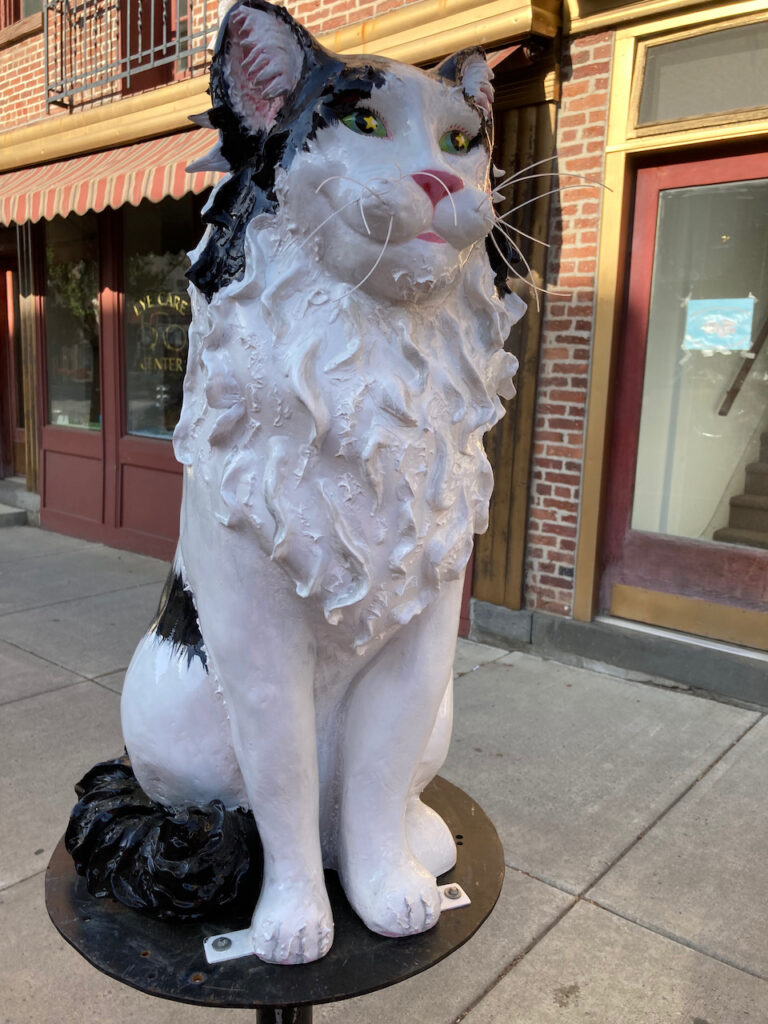
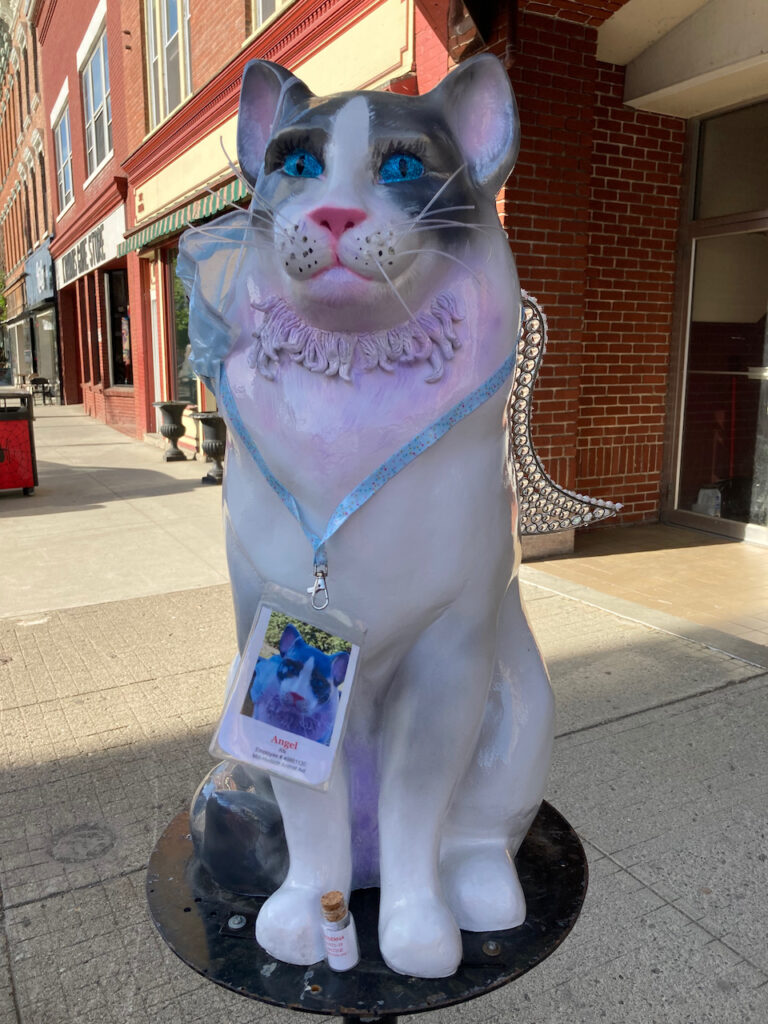
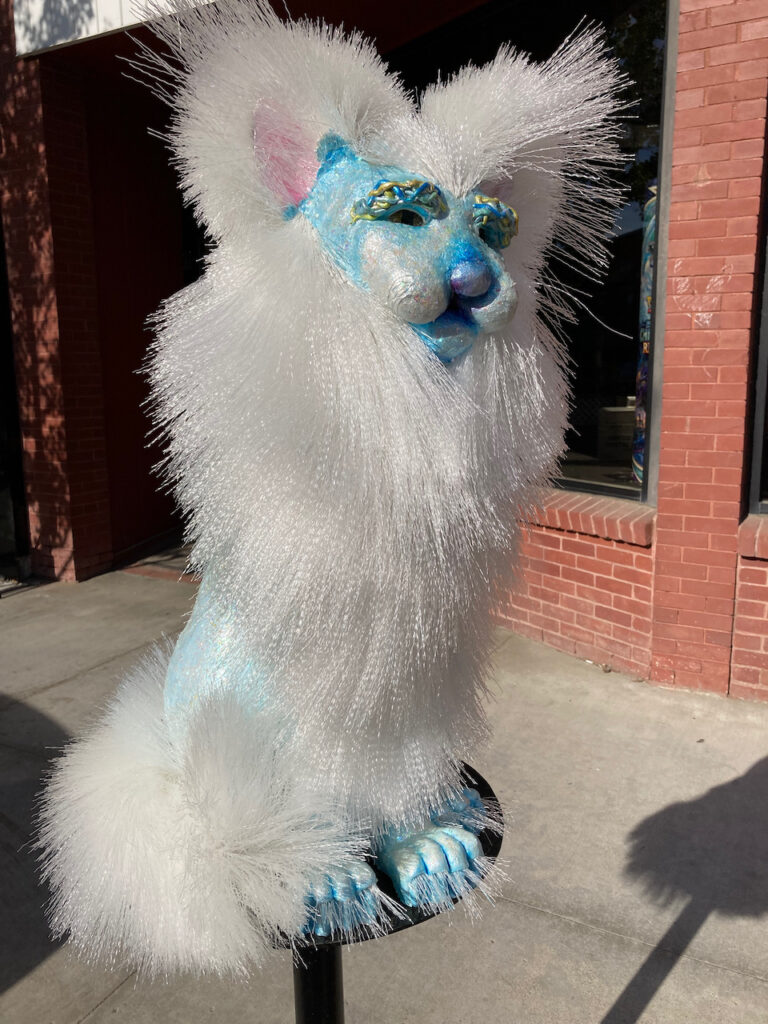
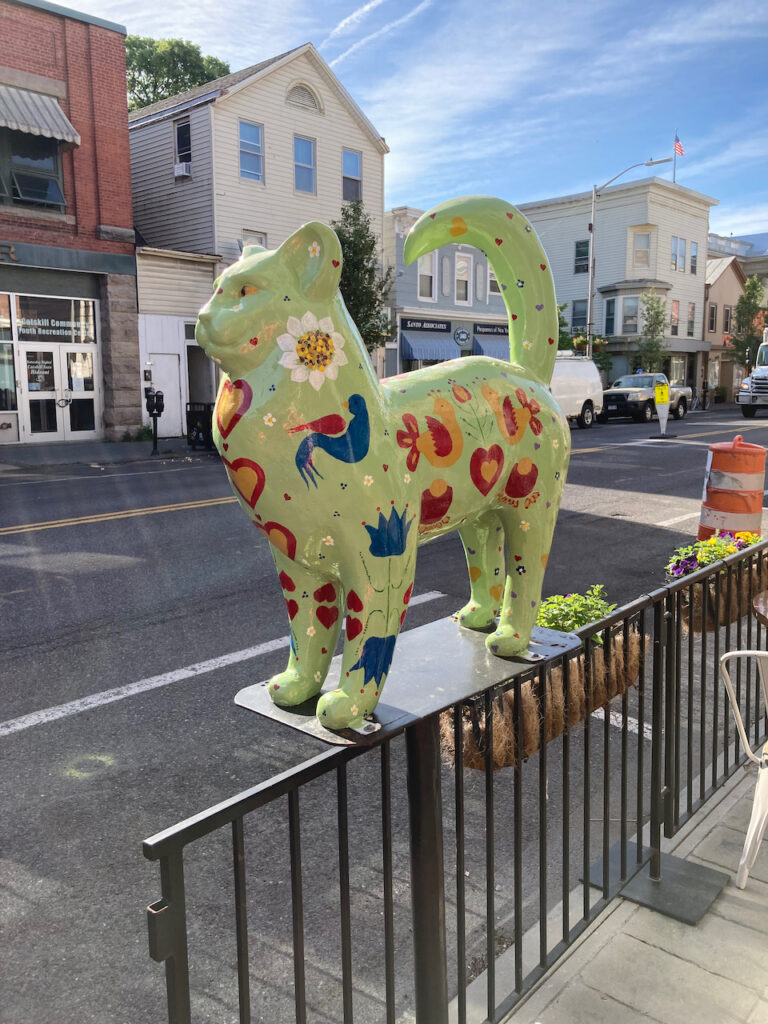
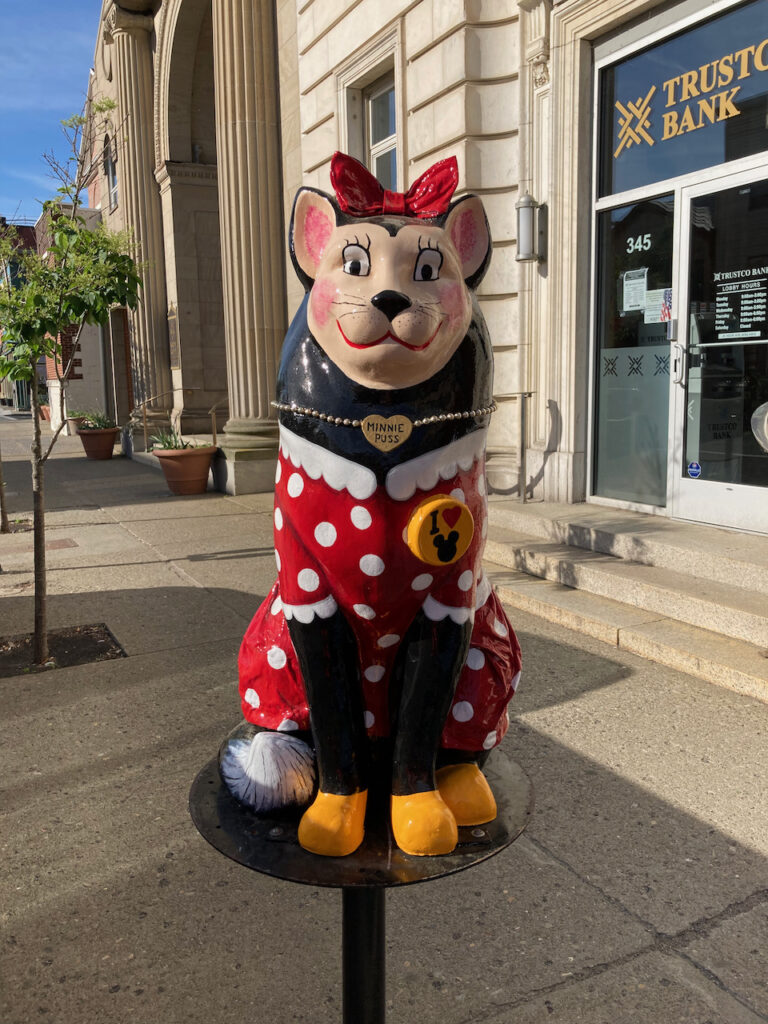


The cats represent the businesses before which they sit…
- How to Turn a Sail Boat into a Power Boat (aka Un-stepping a Mast)
Sunday, May 23rd, exactly two weeks after we left Boston, we started dis-assembling our sailboat. Here are the steps so we remember how to “put it back”…😬
Remove the sails
Bundle the running rigging (the lines which control the sails)
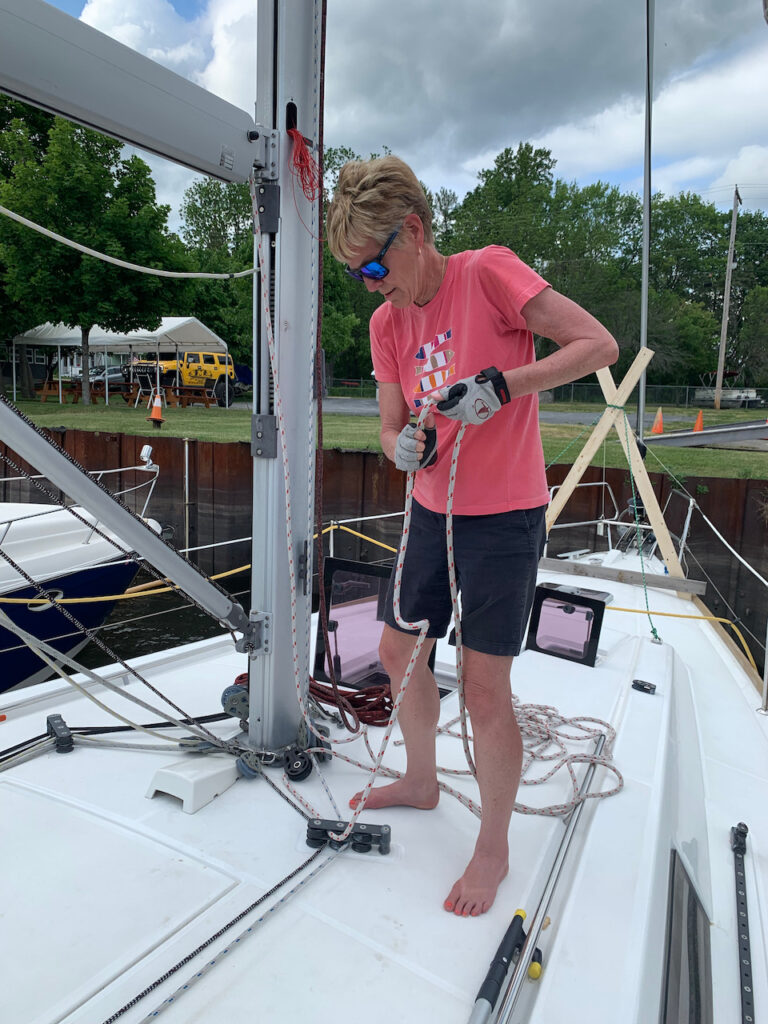
Disconnect the mast electrical wires
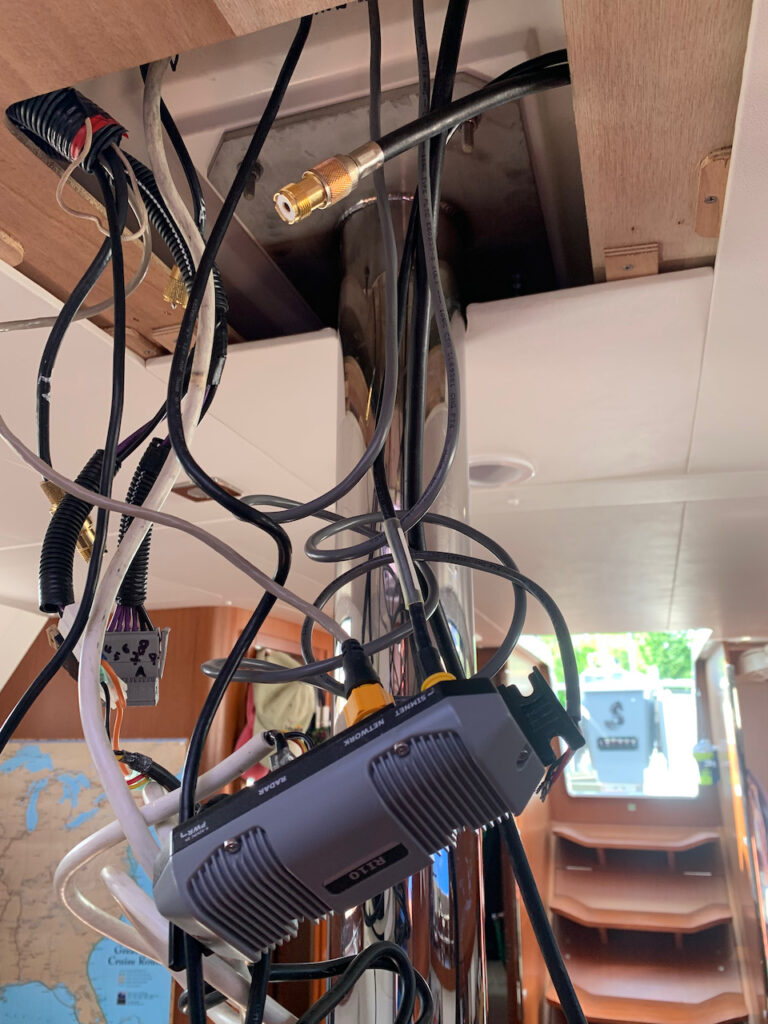
Construct a mast support
Remove the bimini and the starboard solar panel (our arch is our rear mast support)
Loosen the stay turnbuckles and straighten the cotter pins
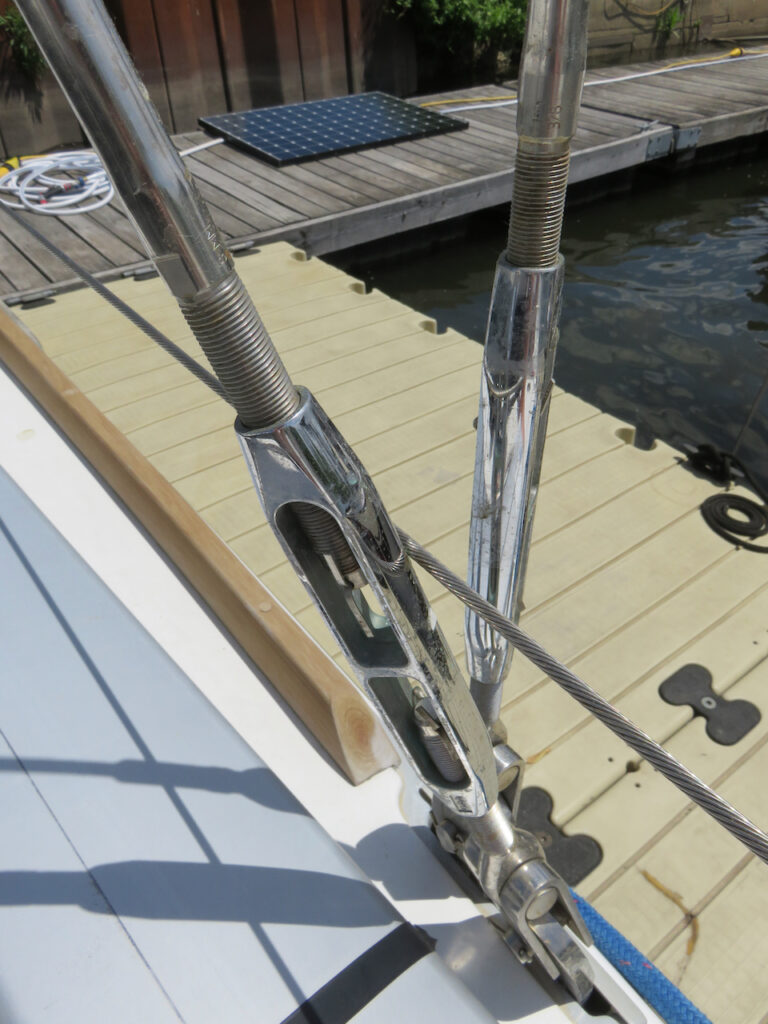
Call in the professionals…
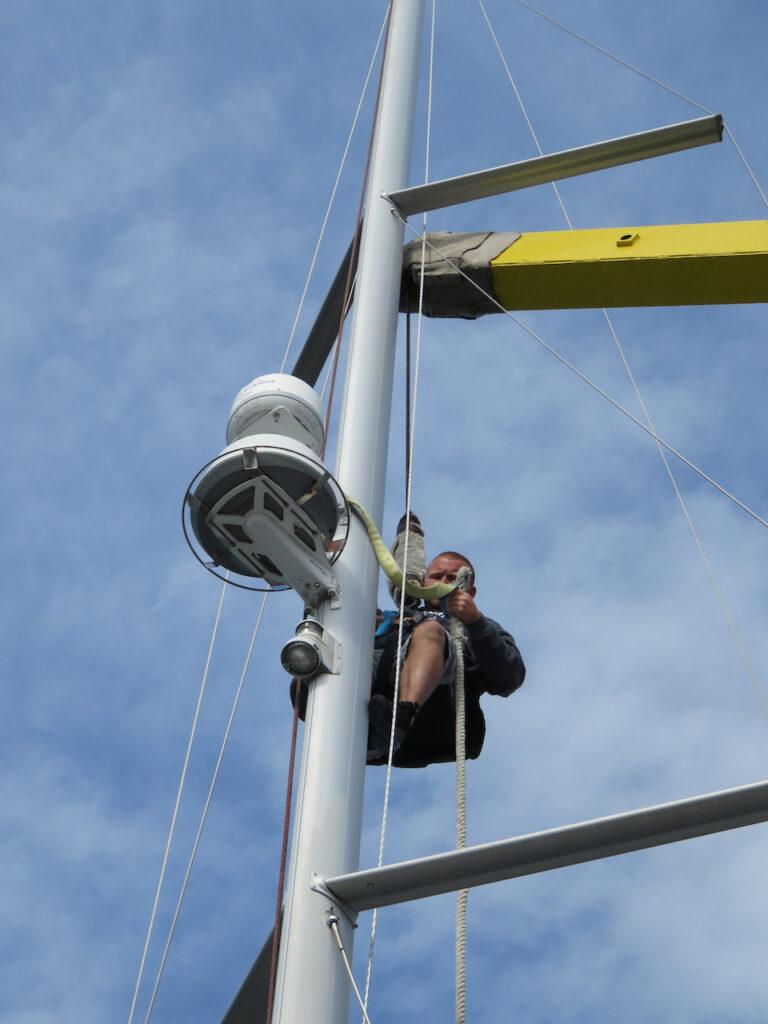
The top of the mast is secured with a strap and a rope attached to the crane. 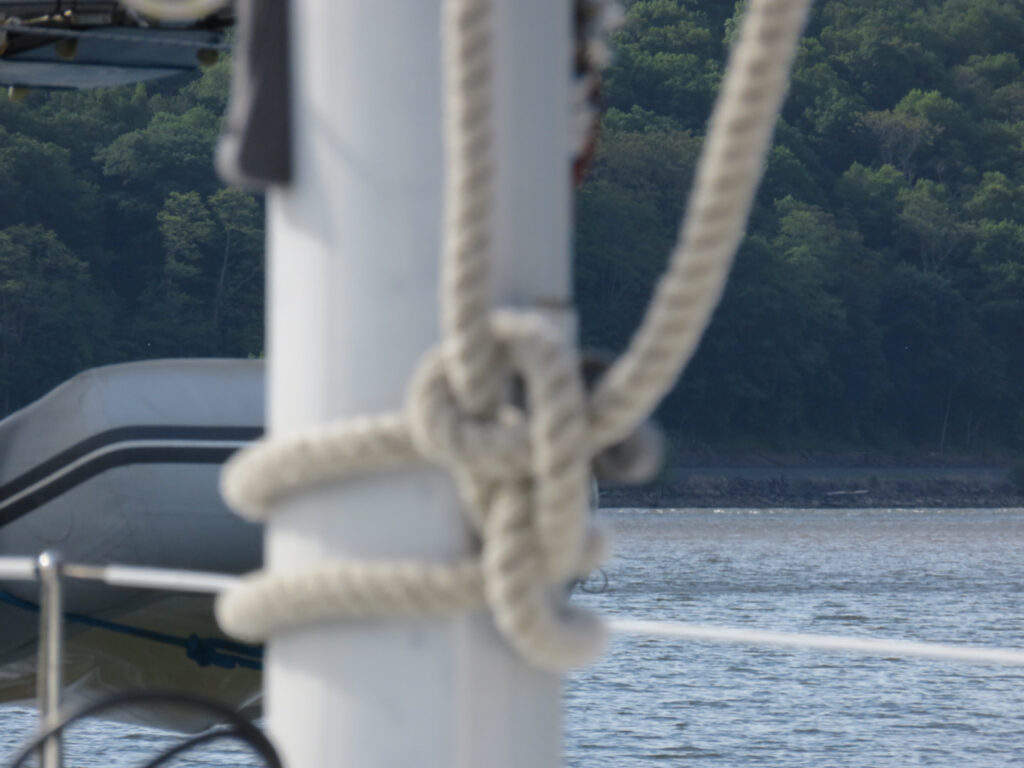
The bottom of the mast is secured with a knot in the rope. 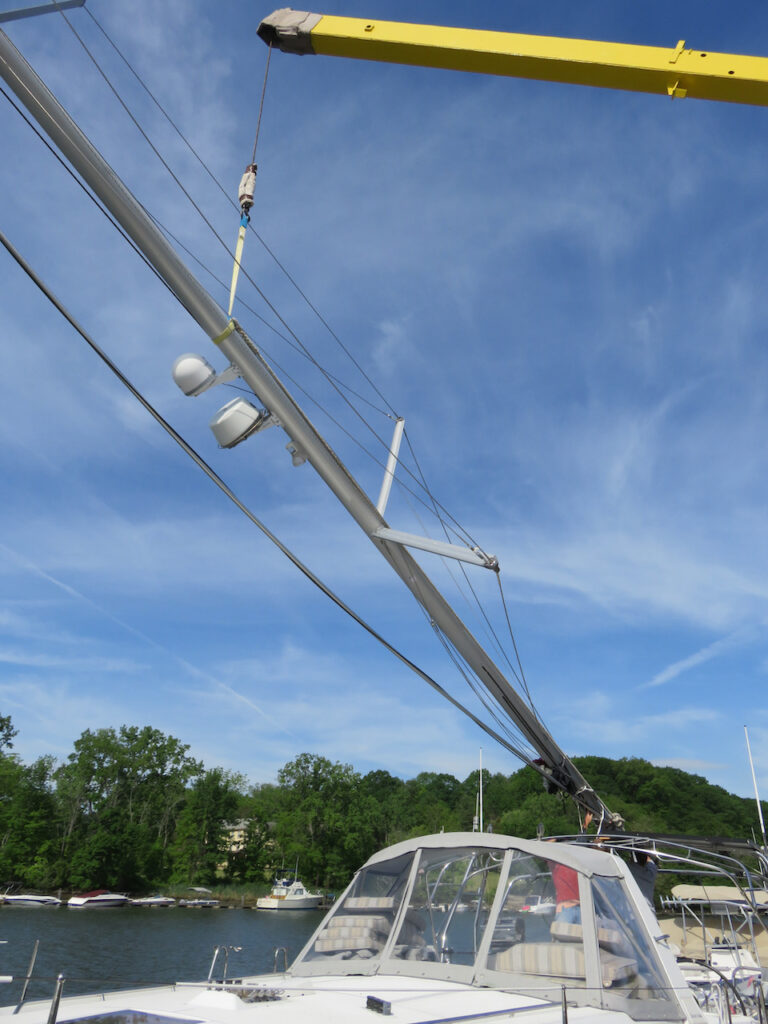

Strap it all down!
Re-mount the radar, solar panel and re-install the bimini
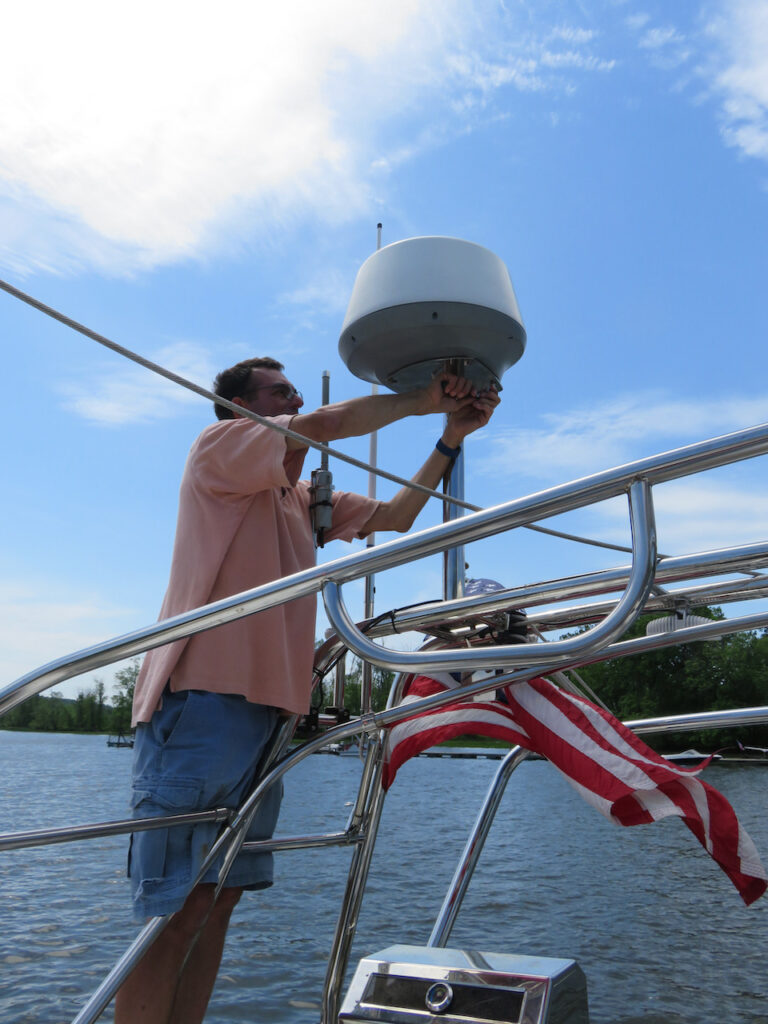
After 3 days of hard work we are now a 64ft power boat with an air draft of 13.54ft. This allows us to clear the 15.6ft fixed bridge at the western end of the Erie Canal.
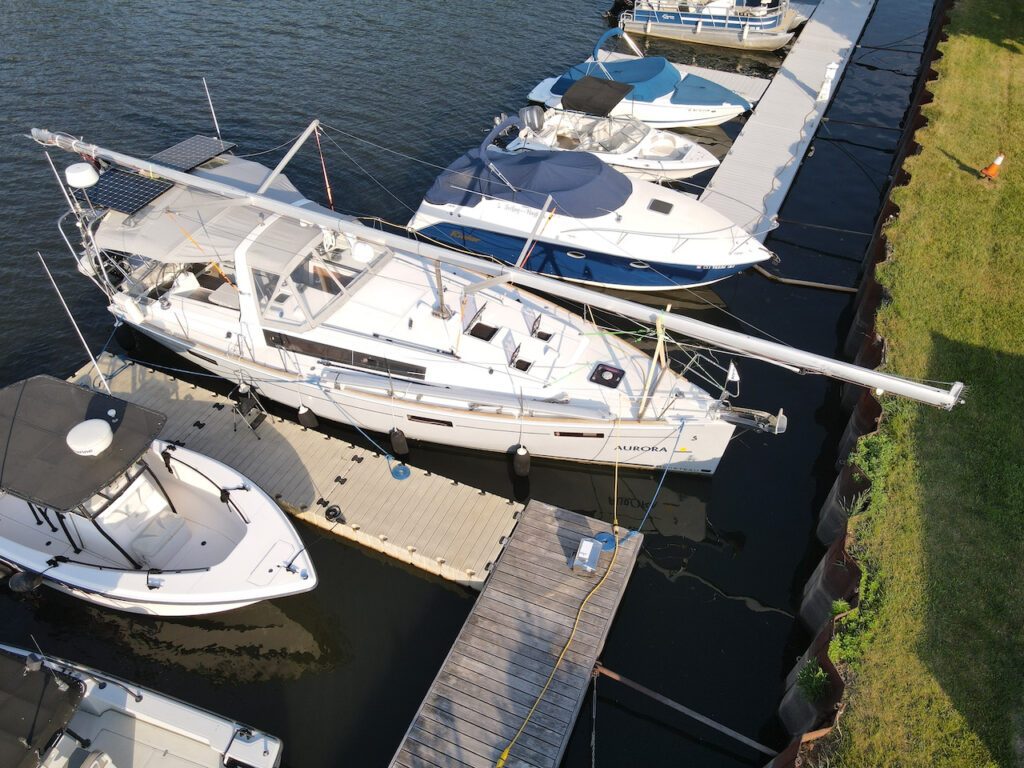
- Houghtaling Island to Troy
We left a peaceful anchorage in a side-arm of the Hudson for Troy today… felt like traveling from one country to another with the difference in the landscape. Today, though, was a milestone; we traveled under the Route 90 Castleton-on-Hudson bridge and arrived at Dinosaur BBQ by boat instead of by car. In the past, anytime we made the trip to Buffalo by road, we said “someday by boat”…
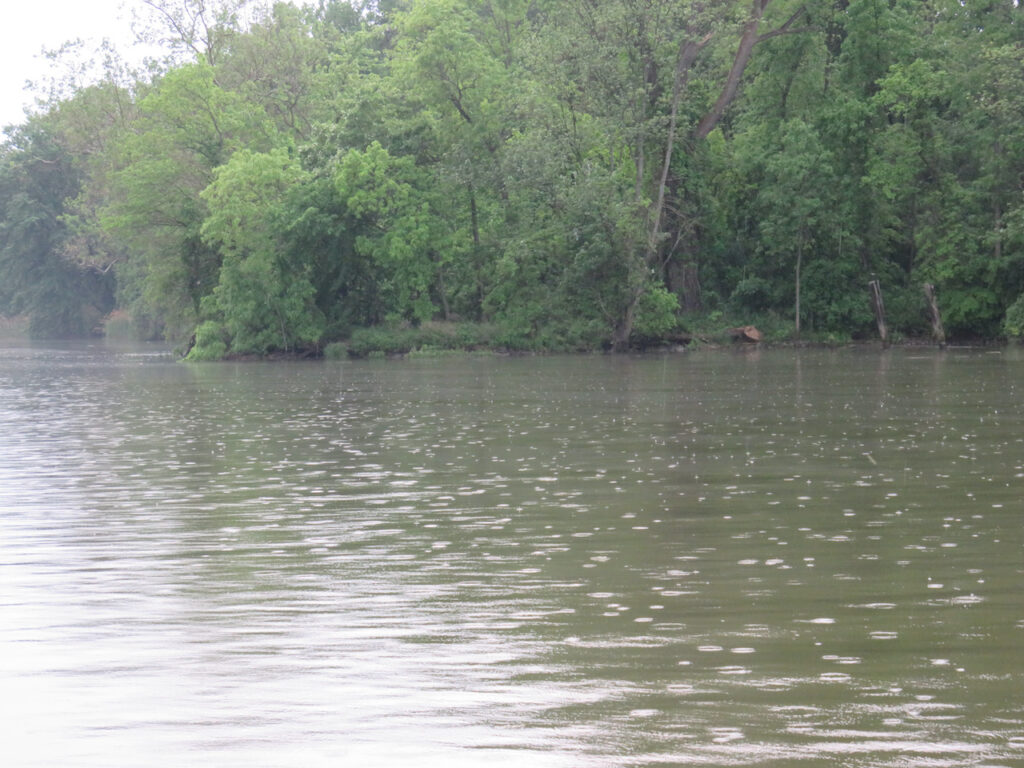
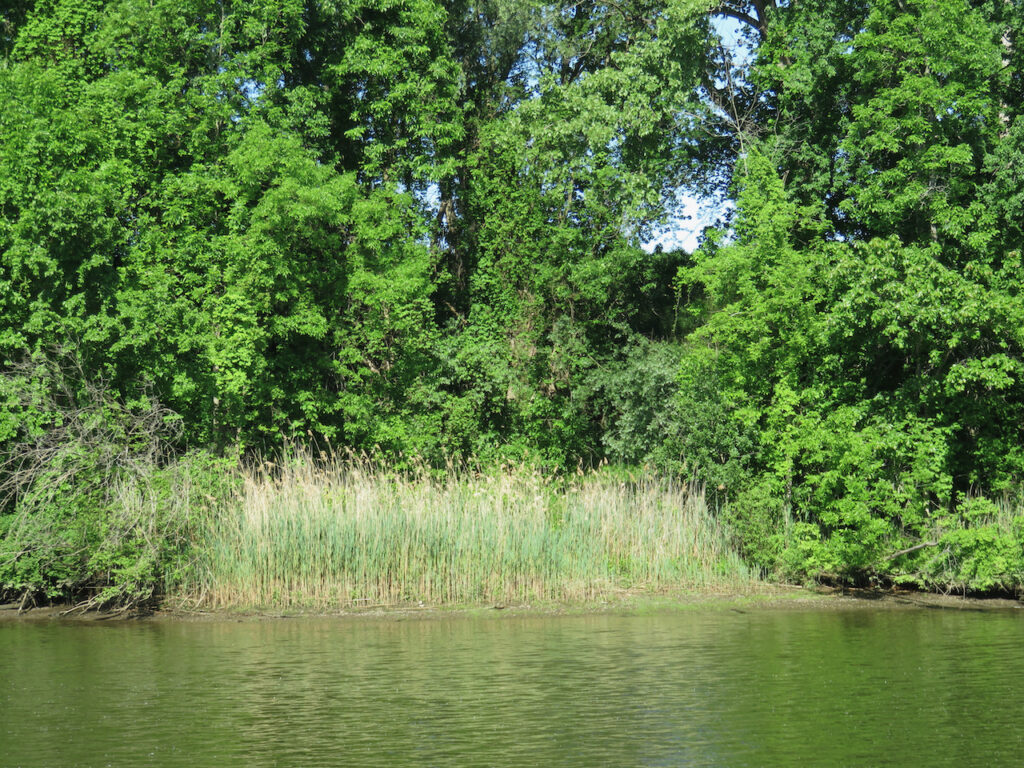
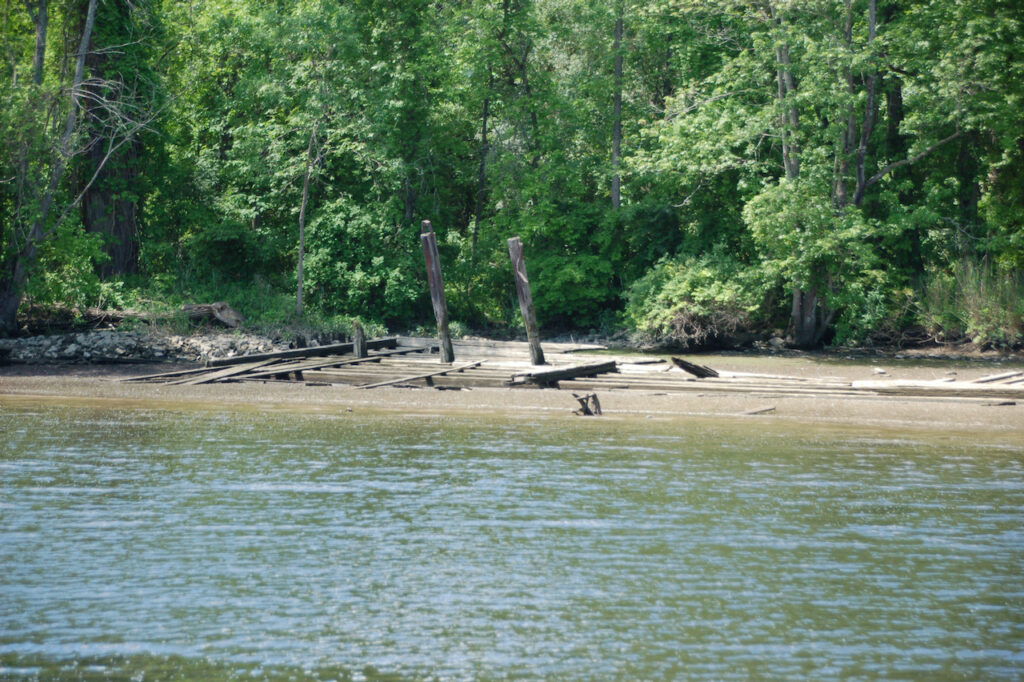

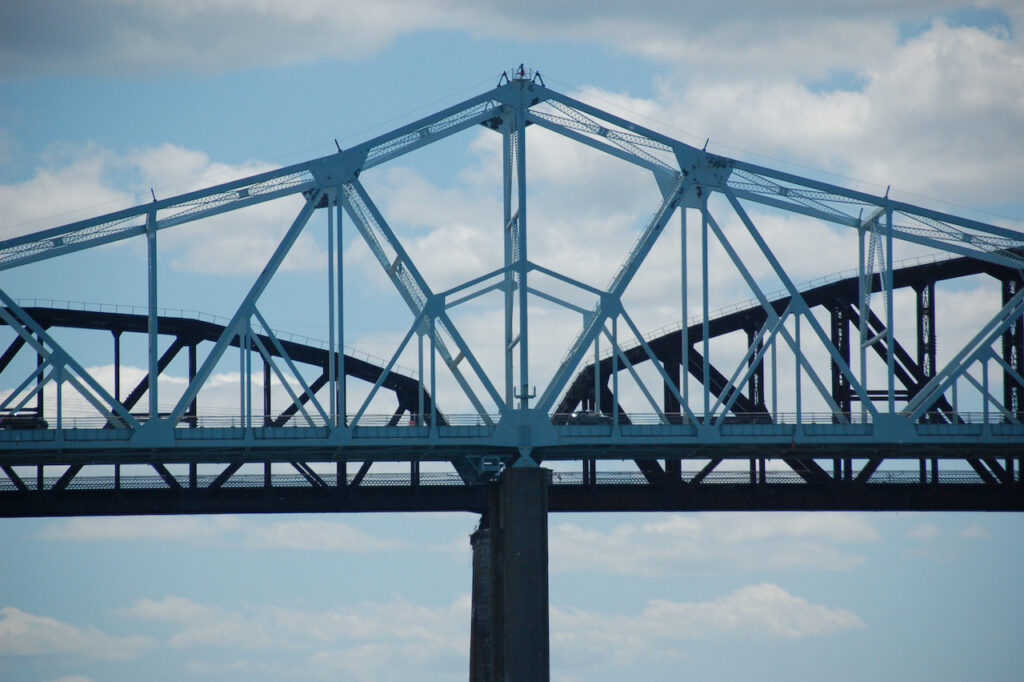

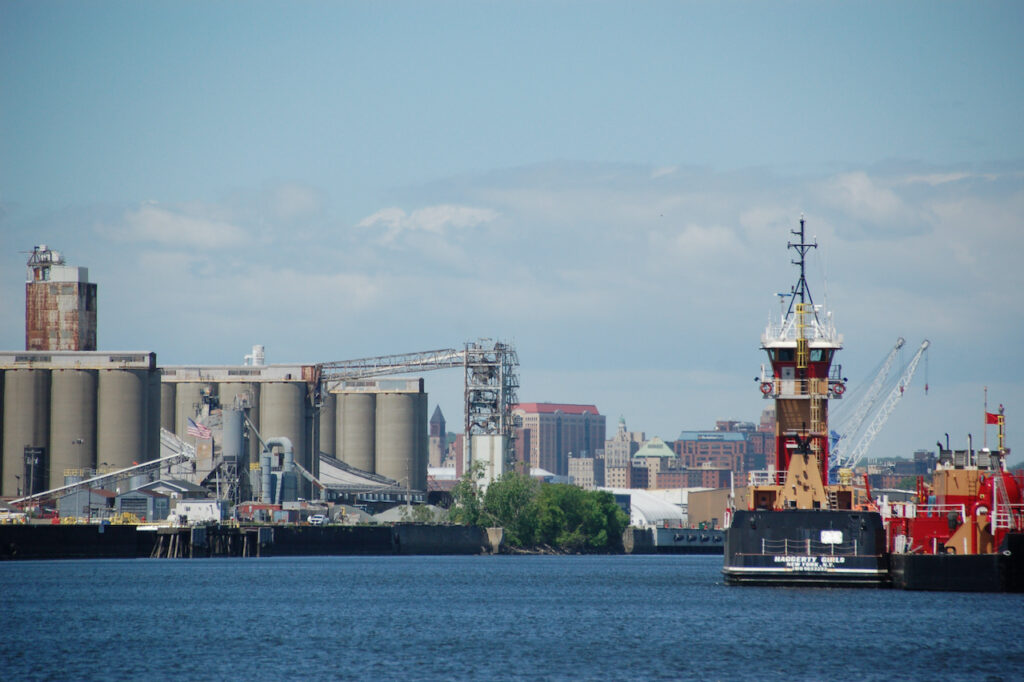
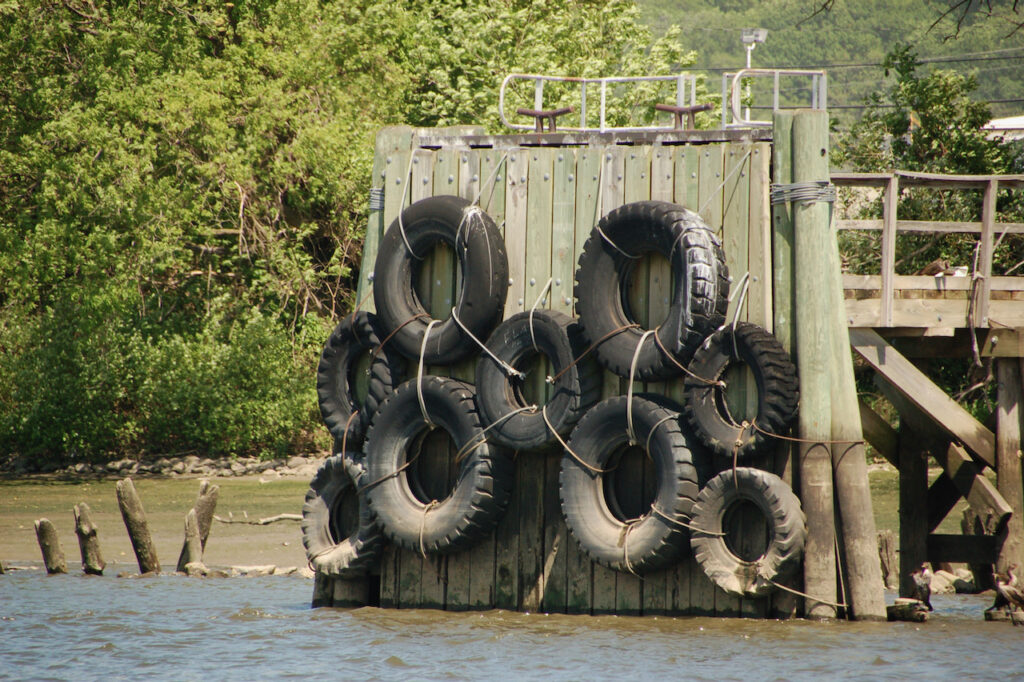
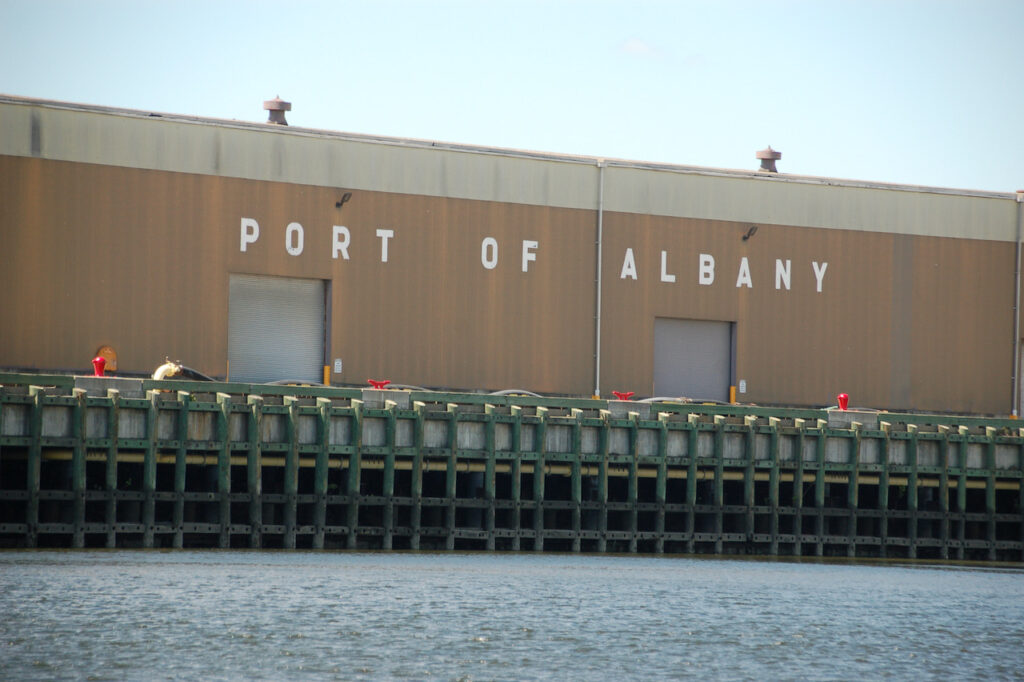
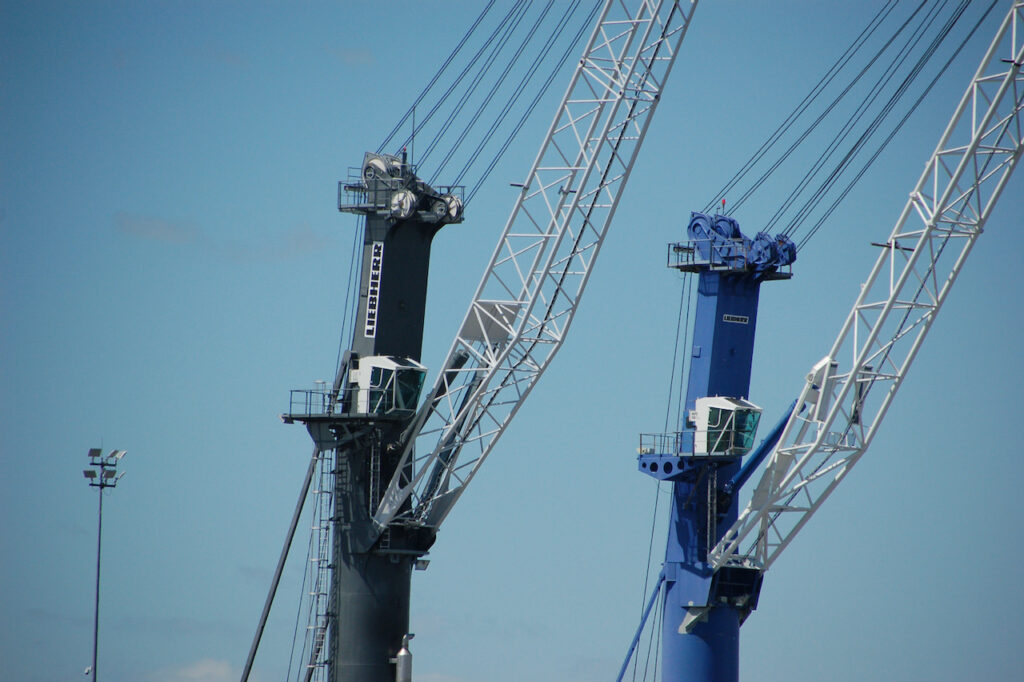
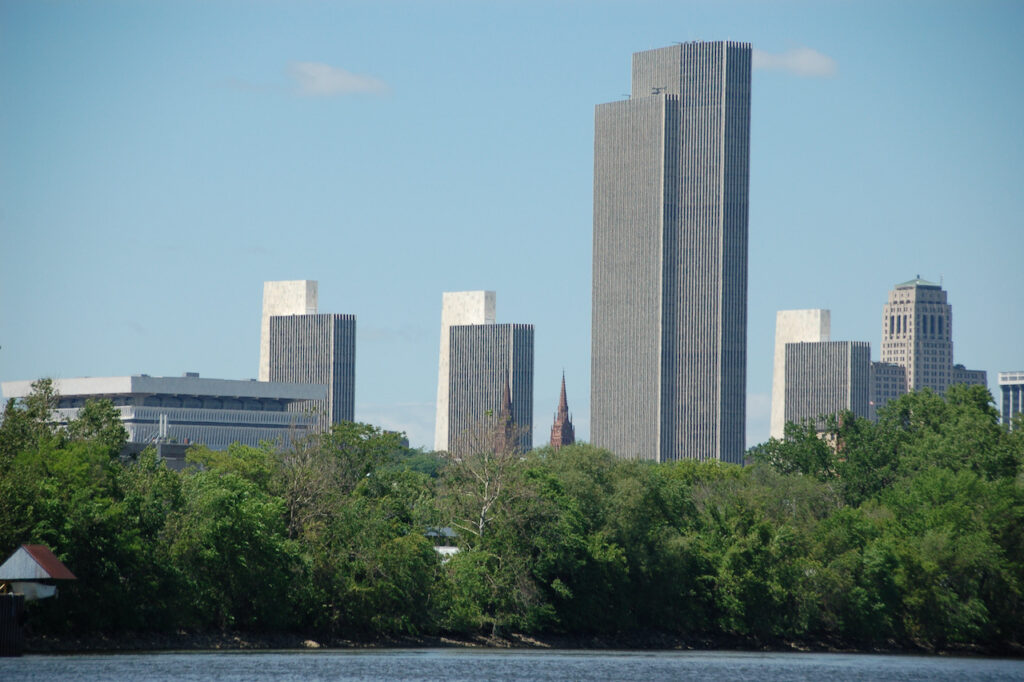
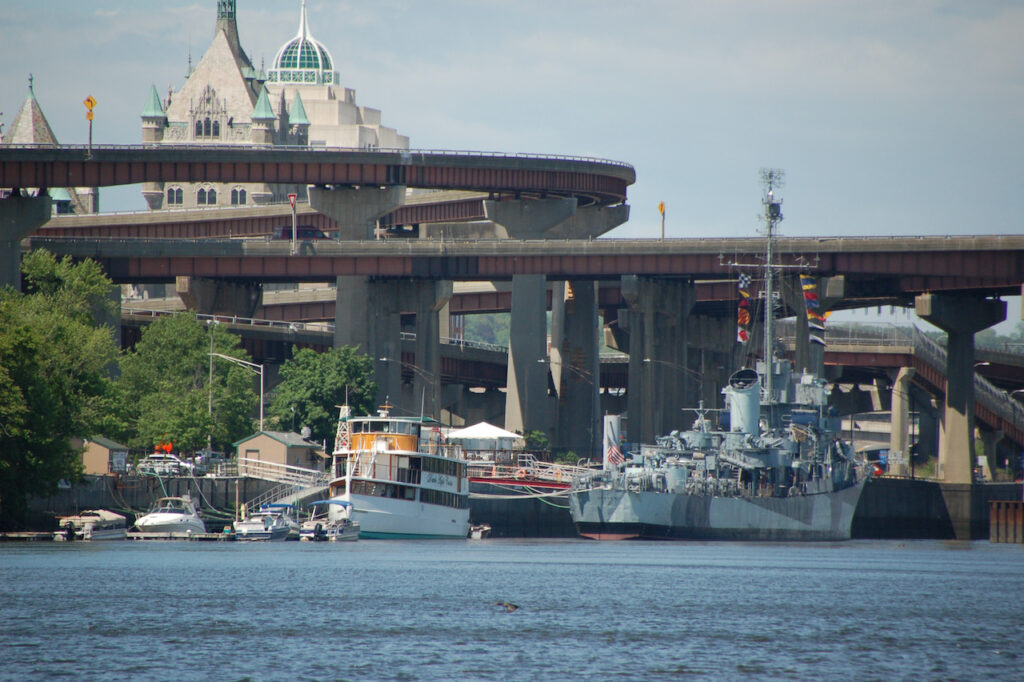

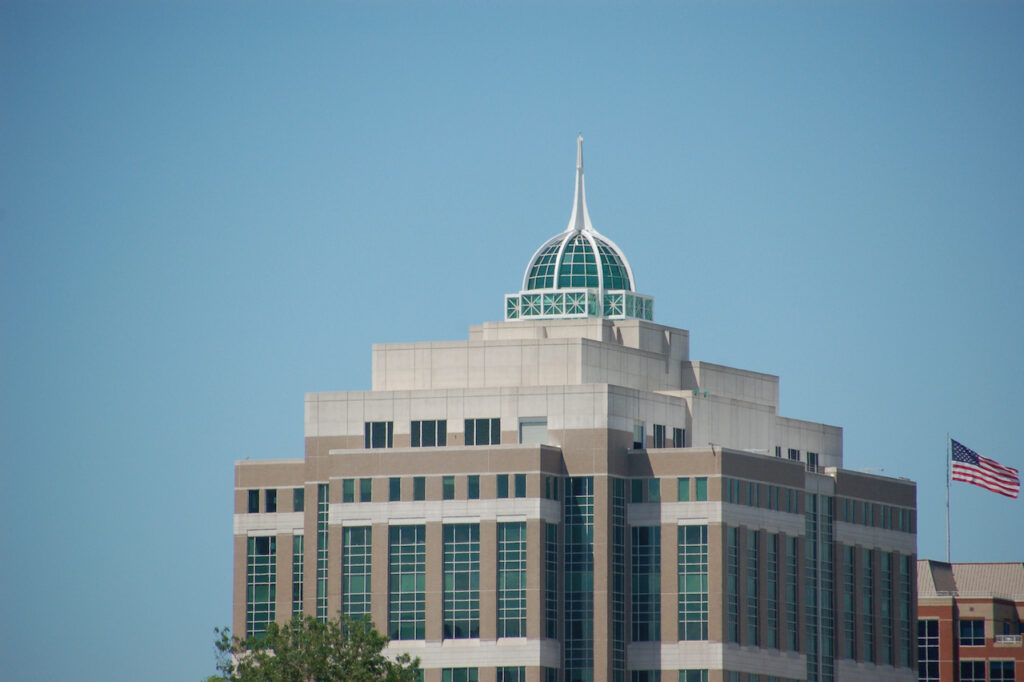
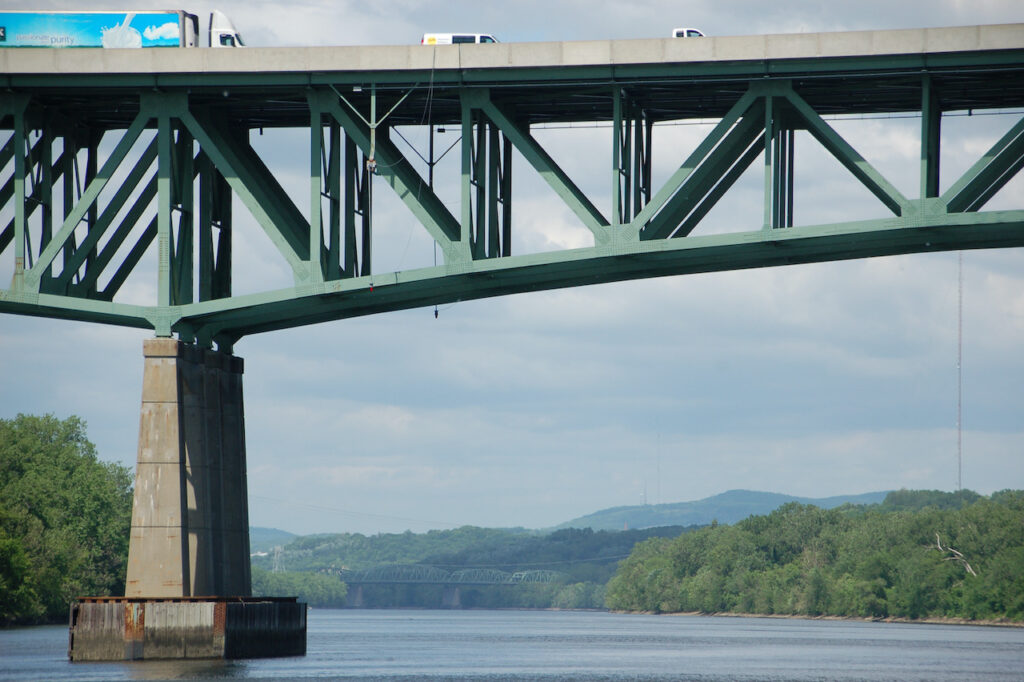
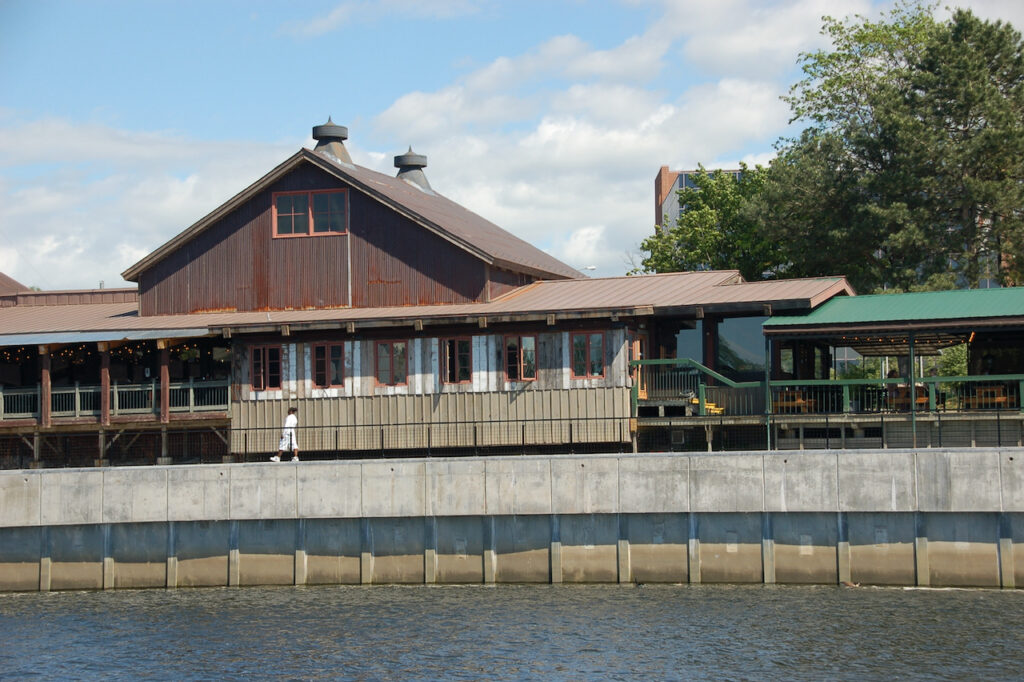
The Dinosaur BBQ in Troy, NY 😋 And if the Dino BBQ wasn’t enough, we were lucky enough to see some of the action as Troy is transformed for HBO’s ‘The Guilded Age’. https://www.timesunion.com/news/article/Troy-closes-two-blocks-of-Second-Street-for-16202860.php
- Fun with Bridges – Fischertechnik (Erector Sets) for Grown-ups
The Hudson River has often been compared with the Rhine River in Germany. Yours truly grew up on the Rhine River, and I know why the comparison is made. The Hudson’s shores are steep, it is in most parts quite wide (up to 3 miles), and it conveys a majestic beauty, all like the Rhine. Railway tracks run on both shores close to the water, carrying cargo traffic on one side, and passenger traffic on the other, also similar to the Rhine River. The river also represents a formidable geographic divide; while it has served as a key waterway to explore and serve the Midwest and the Western United States via the Erie Canal, it at the same time made it difficult for traffic to cross from bank to bank. As soon as the shore railways were opened in 1851 and 1866, the need for bridges became clear. Since then, a total of 17 bridges have been build across the lower Hudson River between New York City and Albany. Join us to get to know them.
George Washington Bridge

Well known to most New York City visitors. Built in 1931. The lower deck was added in 1962. They must have hopelessly overbuild the bridge in 1931, at least I hope so…
New Tappan Zee Bridge

The newest of the bridges, opened in 2017. It crosses the Hudson River at its widest spot, is 3.1 miles (5 km) wide, and cost $4,000,000,000. The new bridge replaced the old Tappan Zee Bridge built in 1955. The old bridge lasted only 63 years because it was built during the Korean war when material shortages were the norm.
Bear Mountain Bridge
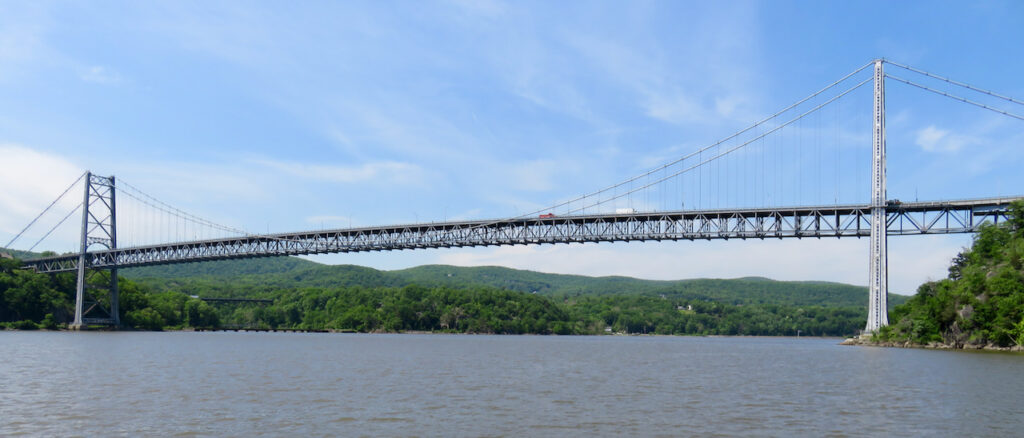
The first automobile bridge over the lower Hudson. At its completion in 1924, it was the longest suspension bridge in the world.
Newburgh-Beacon Bridge
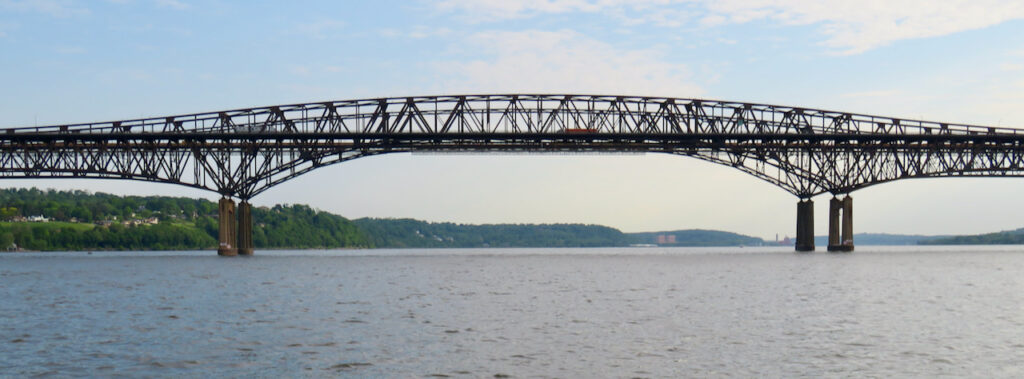
The northern bridge was opened in 1963, the southern in 1980. The older bridge has to be painted regularly, whereas the newer bridge was build from a special steel where the corroded surface layer (“patina”) is stable over time (at least that is what is hoped for).
Mid-Hudson Bridge

Is this a combination of suspension and truss bridge?
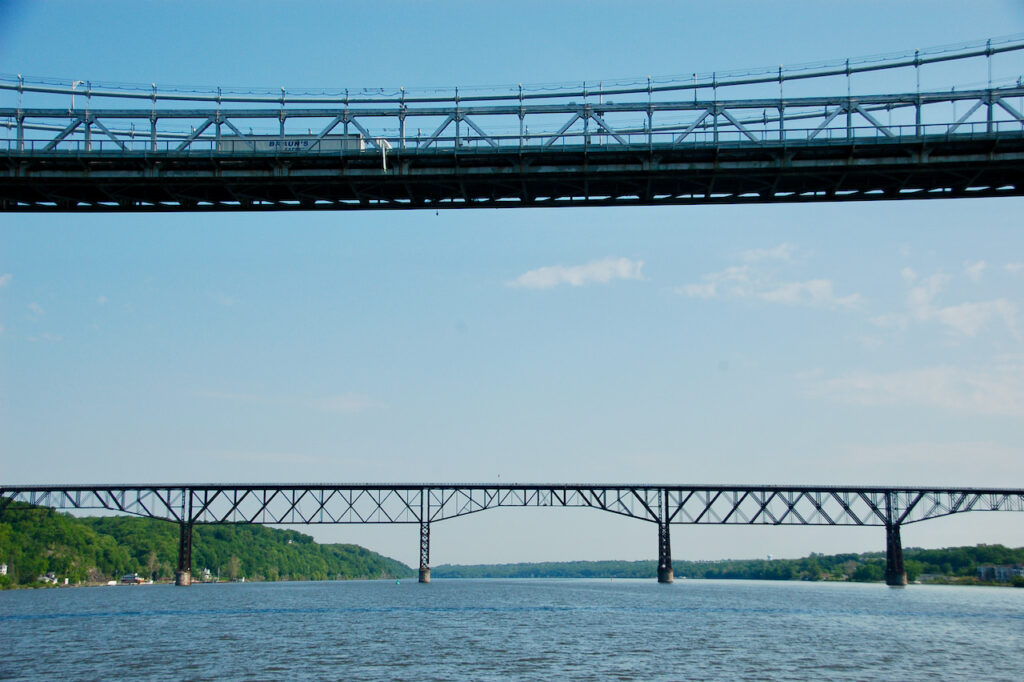
No, its actually two bridges, the Mid-Hudson road bridge, and the Poughkeepsie Railroad Bridge! The Mid-Hudson Bridge, built in 1930.
Poughkeepsie Railroad Bridge
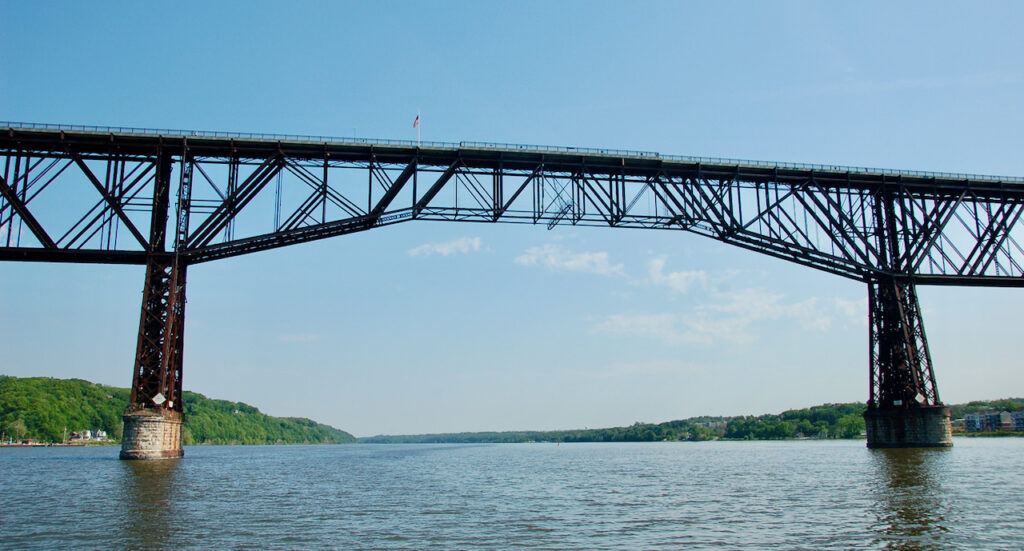
The Poughkeepsie Railroad Bridge, built in 1889, is the oldest standing bridge over the lower Hudson River. In 2009 it was converted into one of the World’s longest pedestrian and bicycle bridges.
Kingston-Rhinecliff Bridge

The Kingston-Rhinecliff Bridge was opened in 1957, and connects Kingston with the village of Rhinecliff, part of Rhinebeck, founded by Dutch settlers.
Rip Van Winkle Bridge

“Rip Van Winkle” is the main character in a short story by the American author Washington Irving, published in 1819. It follows a Dutch-American villager in colonial America who meets mysterious Dutchmen (who hasn’t …), imbibes in their liquor (was it Jenever?) and falls asleep in the Catskill Mountains. He awakes 20 years later to a very changed world, having missed the American Revolution (all of this according to Wikipedia)
Alfred H. Smith Memorial Bridge

The Alfred H. Smith Memorial Bridge, built in 1924, is the southernmost cargo railway connection across the Hudson River, located about 120 miles north of New York City. There are railway tunnels in New York City, but they serve passenger traffic only. That means that every railway car going from Long Island or Connecticut to New Jersey or even further south needs to take a 280 mile (450 km) detour go get over this bridge. Scary thought …
Castleton Bridge

You guessed it, the Castleton Bridge is hidden right behind the railway bridge! This is the bridge we take when we travel on Interstate I90 from Boston to Buffalo, with a great view of the Hudson River valley. Every time I drive over this bridge, I wish I could be down there. This time, we are!
Maiden Lane Bridge
Sorry, we couldn’t take a picture. This railroad bridge, built in 1871, was demolished in 1960.
Dunn Memorial Bridge

The road bridge between Albany and Rensselaer, built in 1969.
Hudson River Railroad Bridge
Another bridge (built in 1866) which was demolished in 1901. It was replaced with the Livingstone Avenue Bridge.
Livingstone Avenue Bridge

This railroad bridge was built in 1901 to replace the Hudson River Railroad Bridge. As you can see, it shows its age, but it is still heavily used. The passenger trains from Boston and Springfield to Buffalo pass over it. Another scary thought …
Patroon Island Bridge

The Patroon Island Bridge carries the Interstate highway on the northern side of Albany. Built in 1968.
That’s it. 17 bridges. Did you count? There are more bridges north of Albany, but the river gets significantly narrower, and the bridges smaller.
Credits for this brief overview of the bridges over the Hudson River go to my sister-in-law who whose curiosity about these bridges was my major motivation to take the pictures and summarize them in this post.
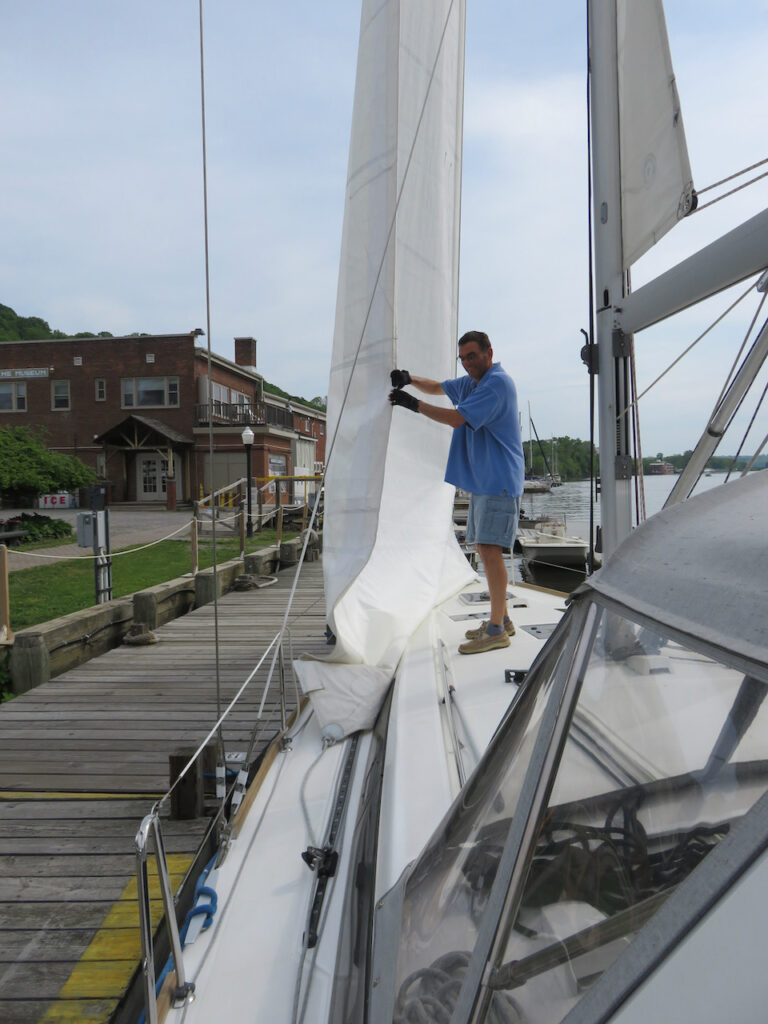
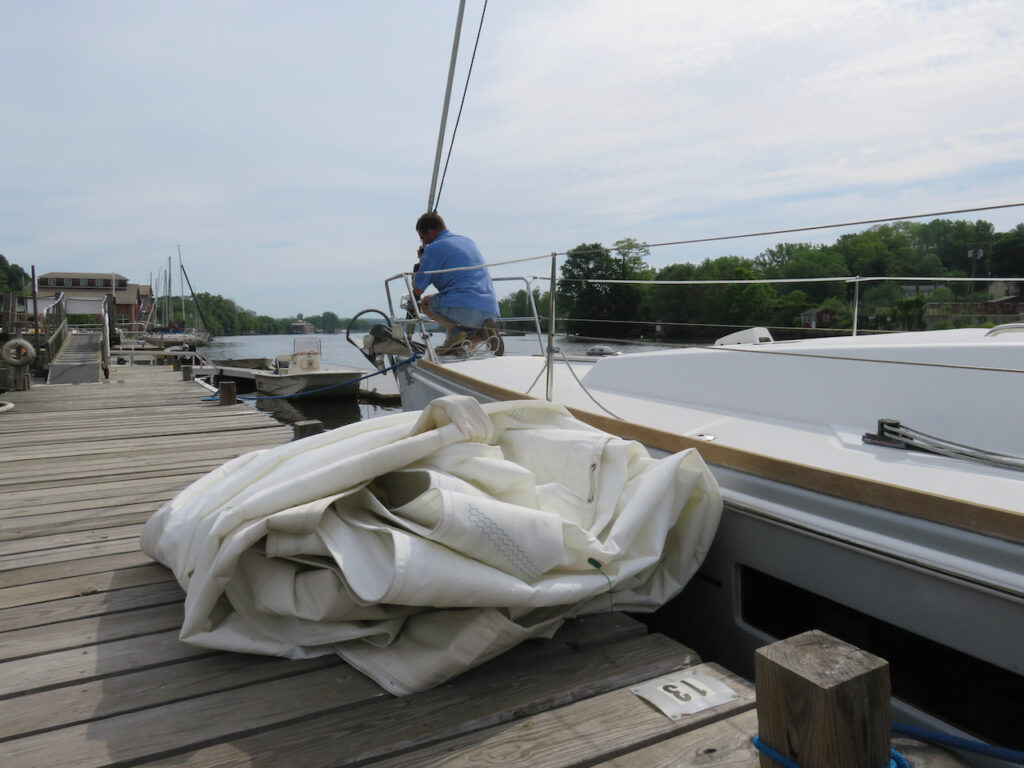
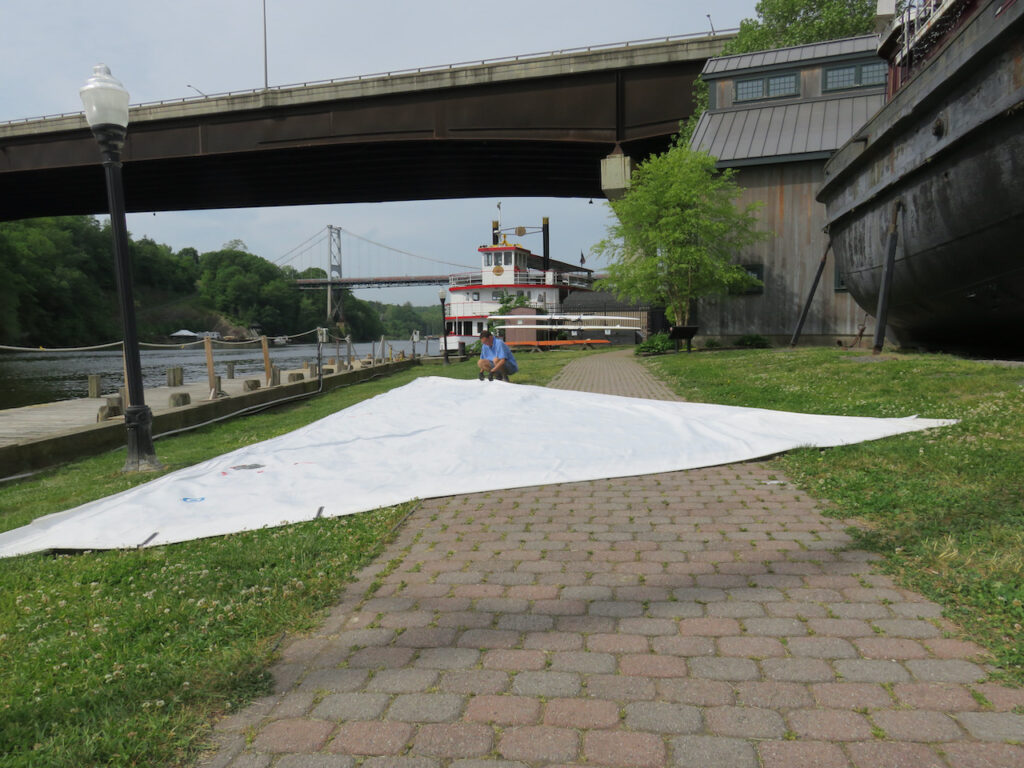

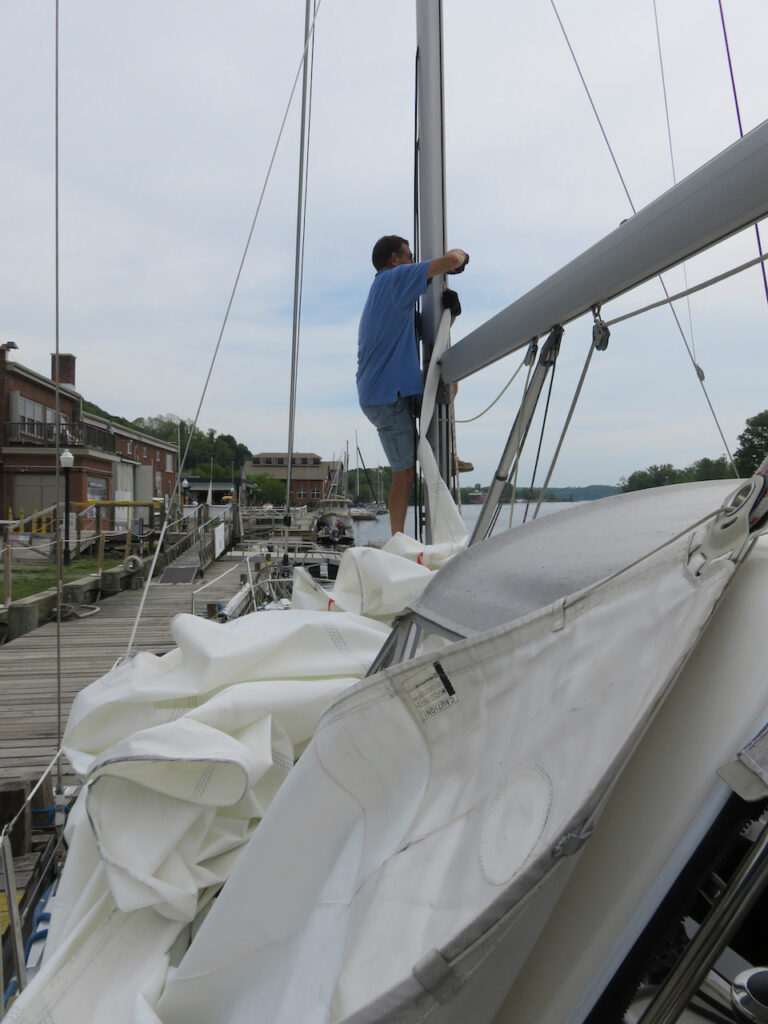
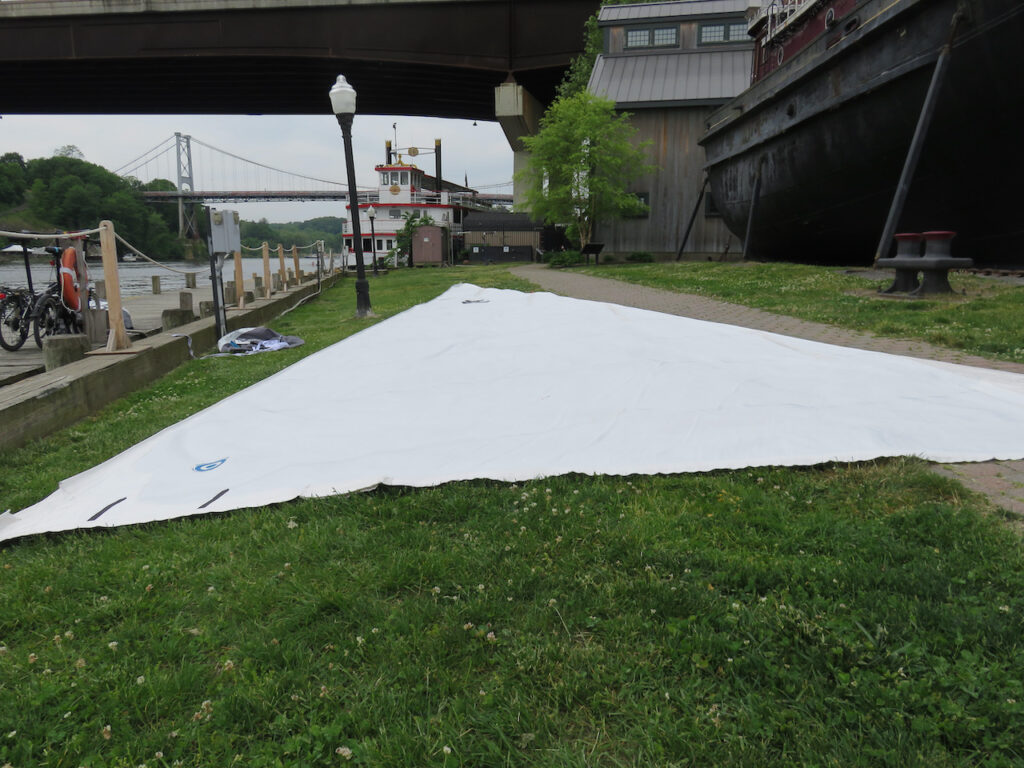

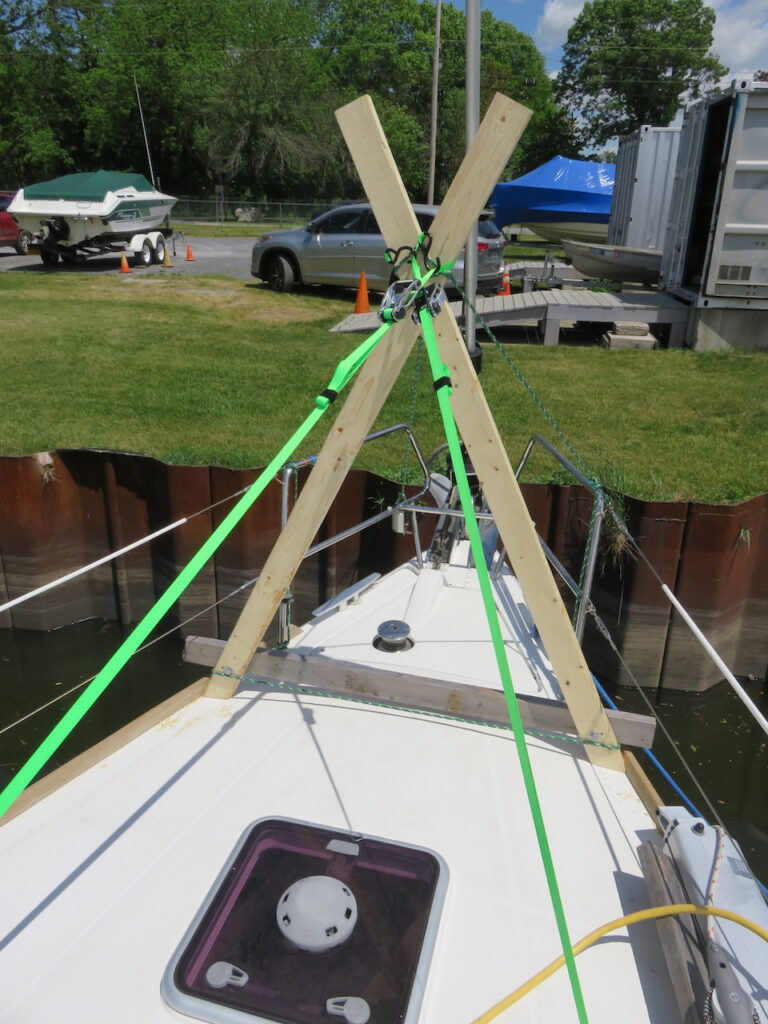
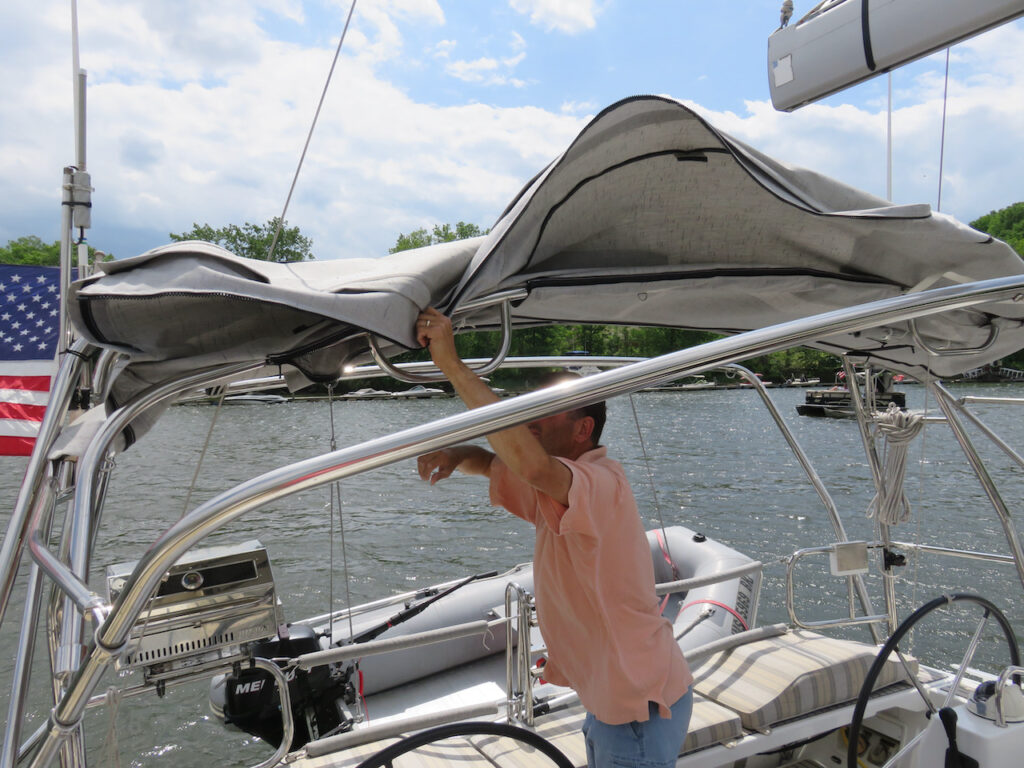
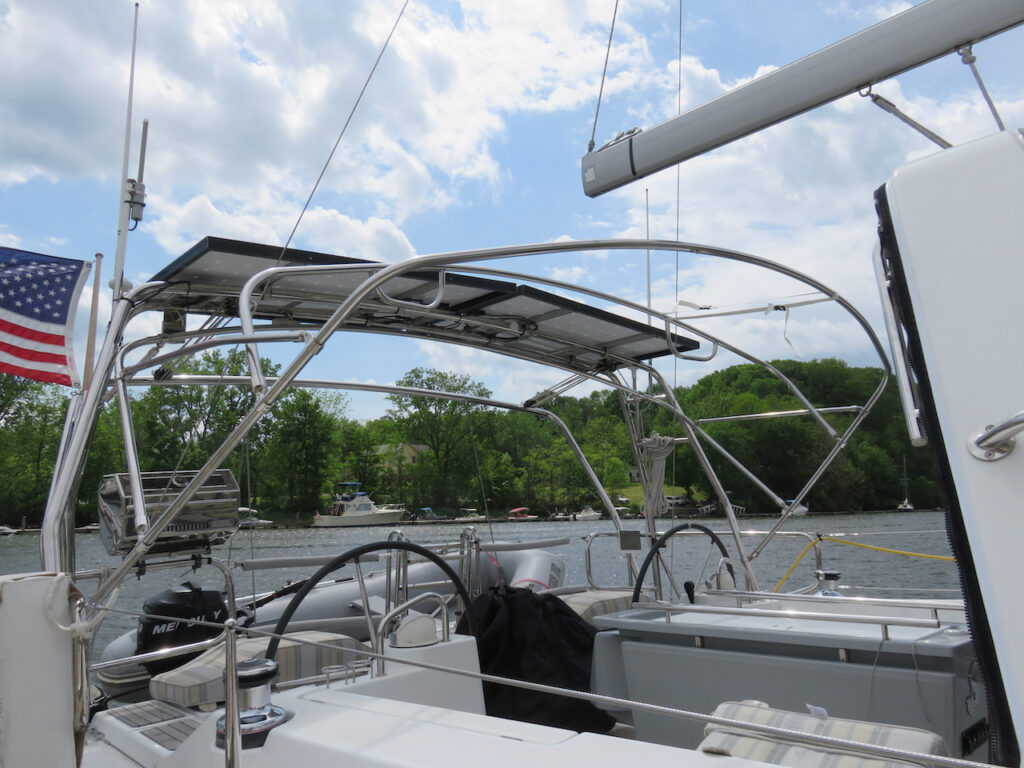
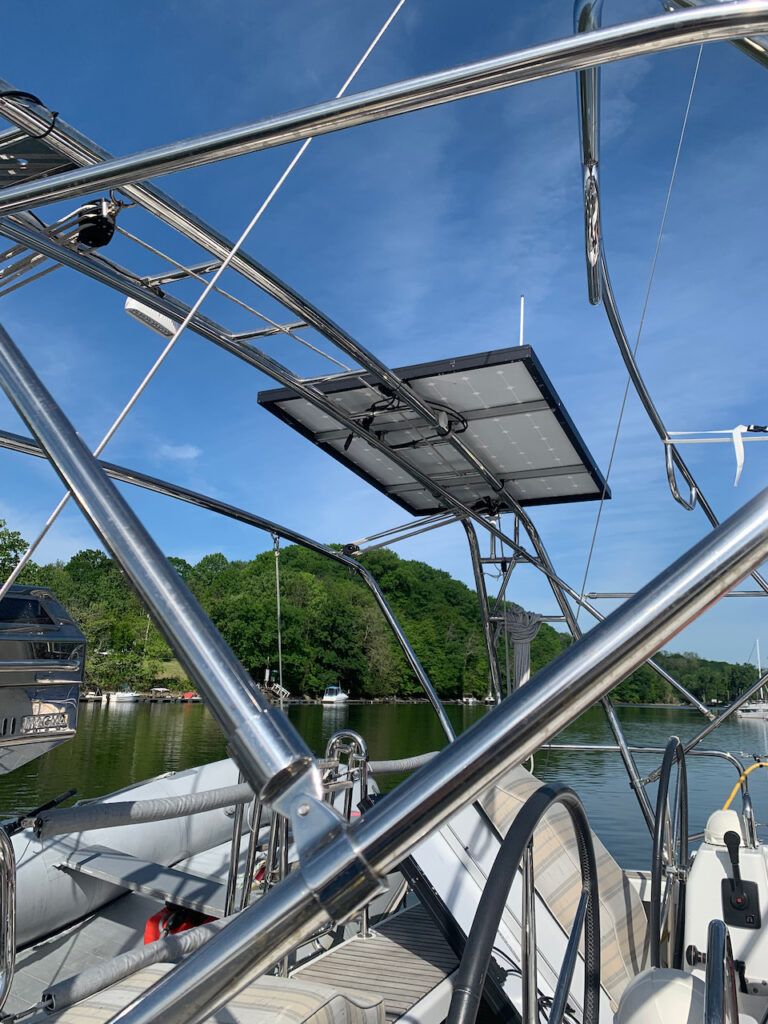
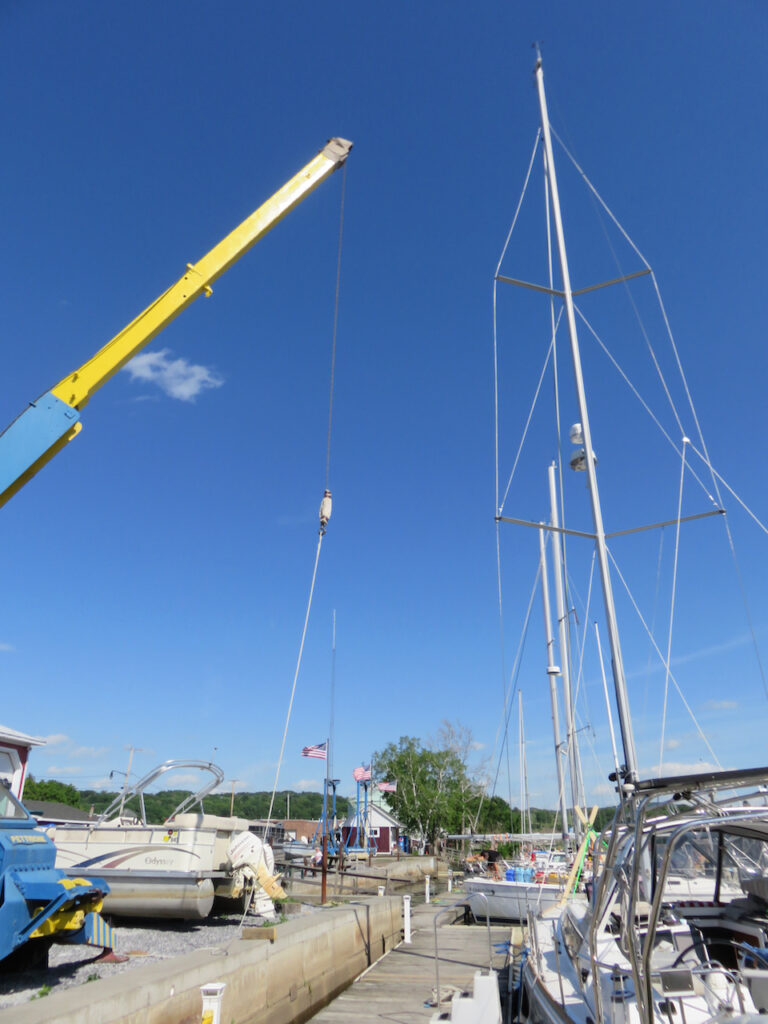
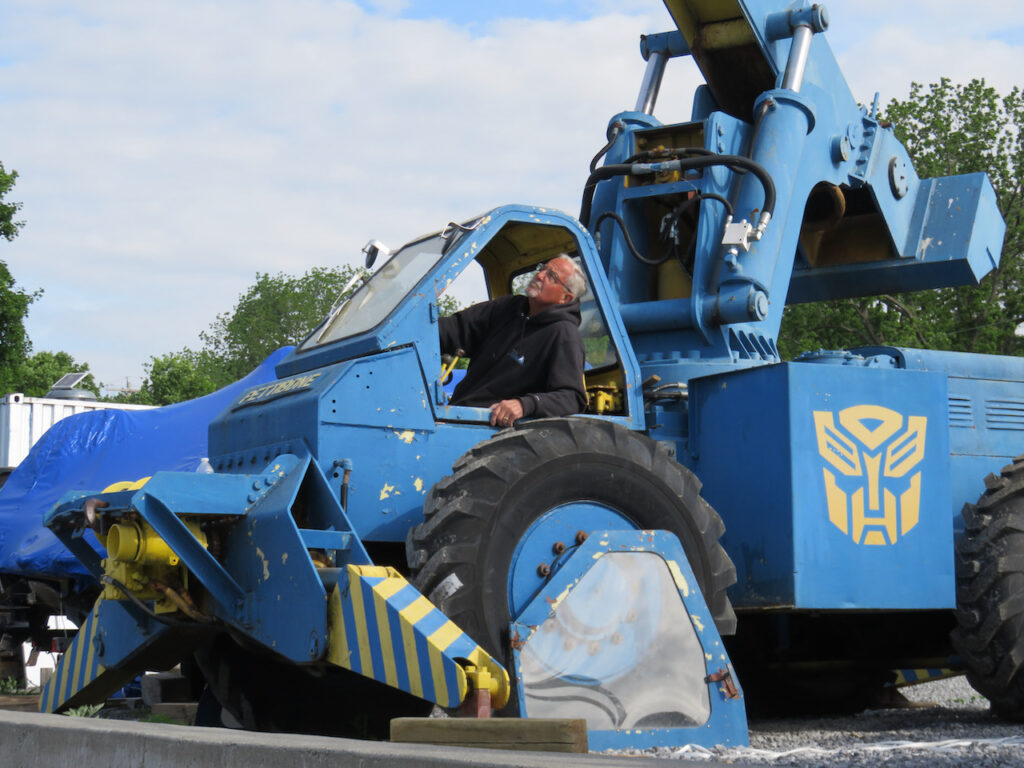
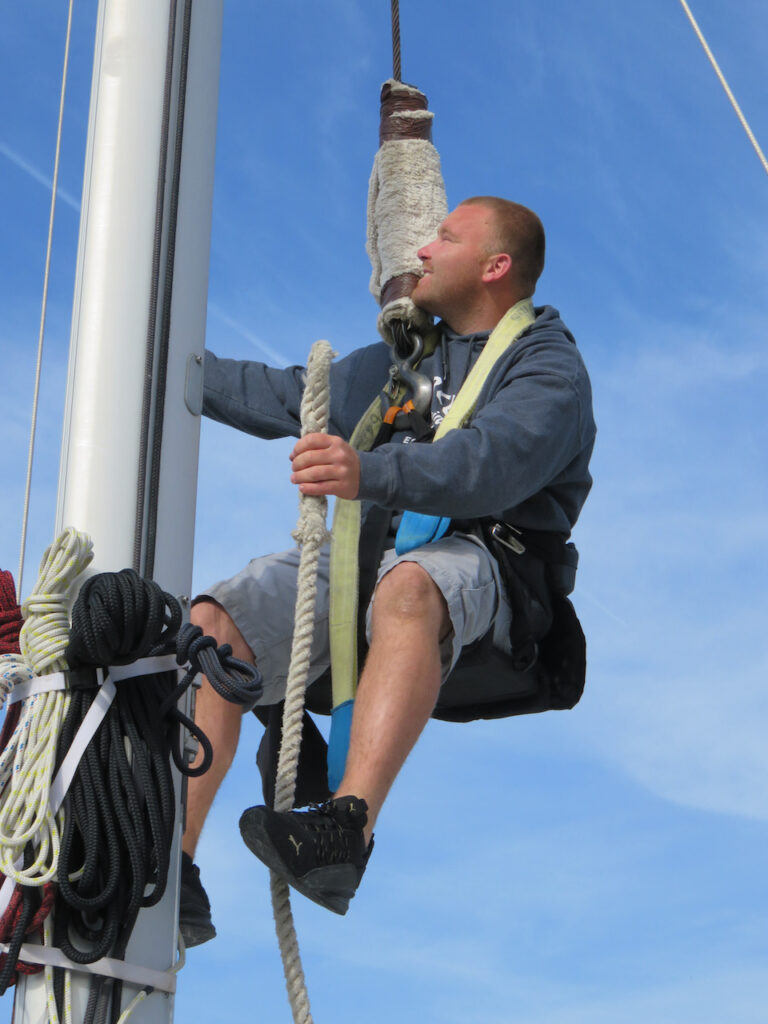
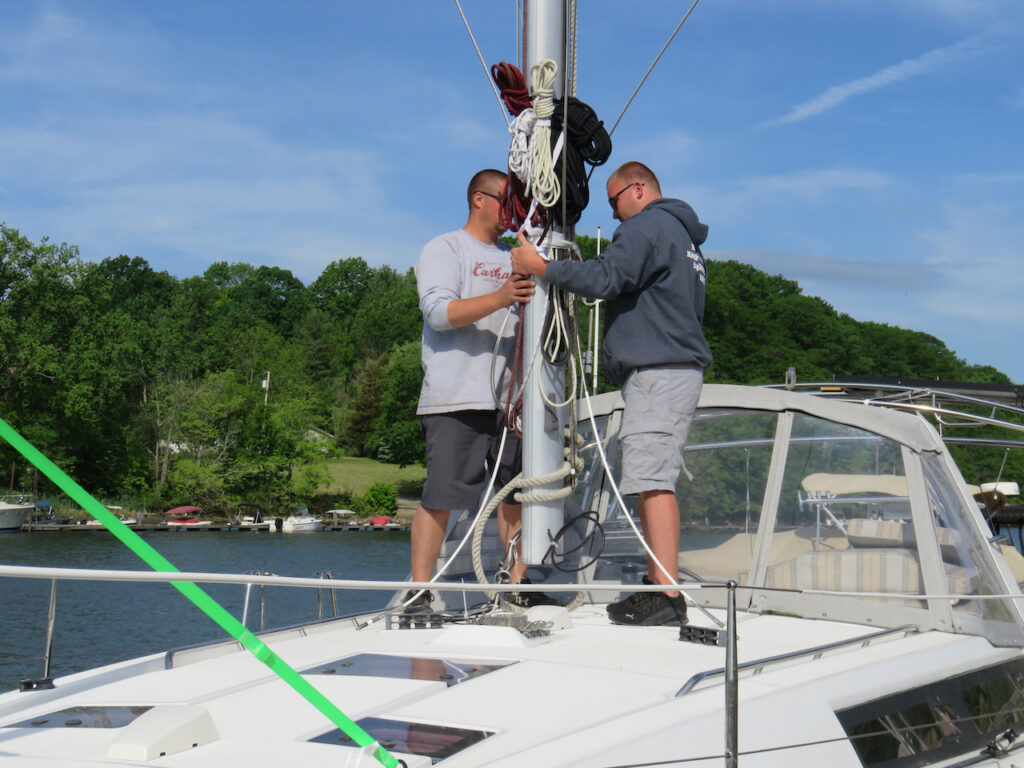
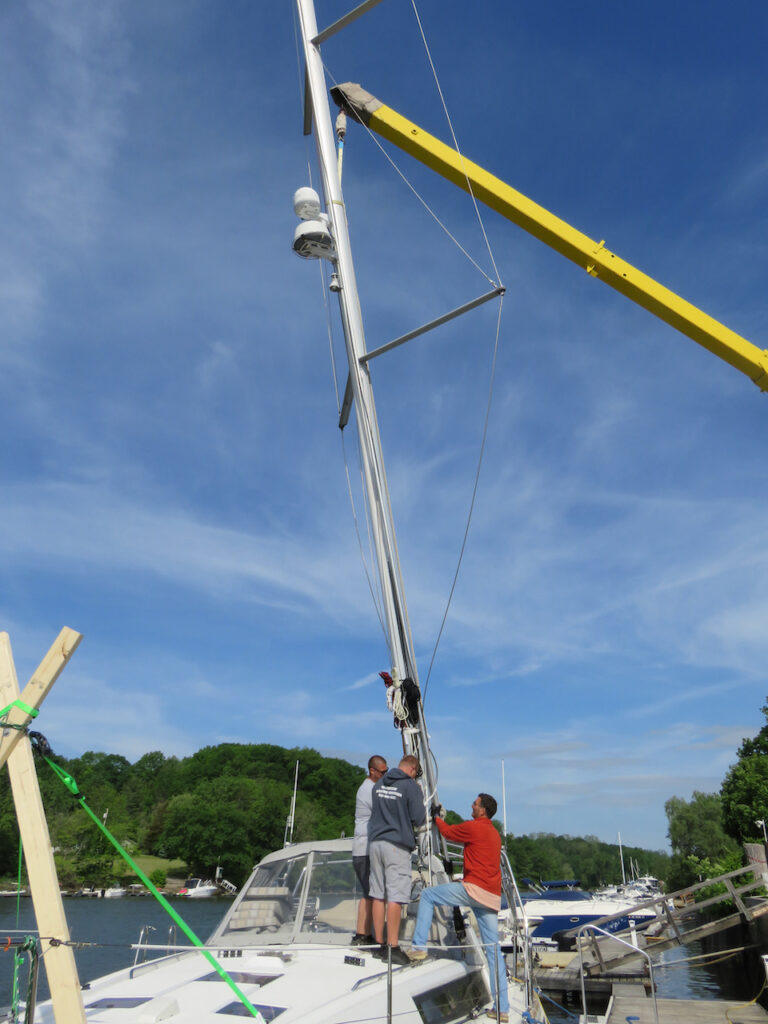
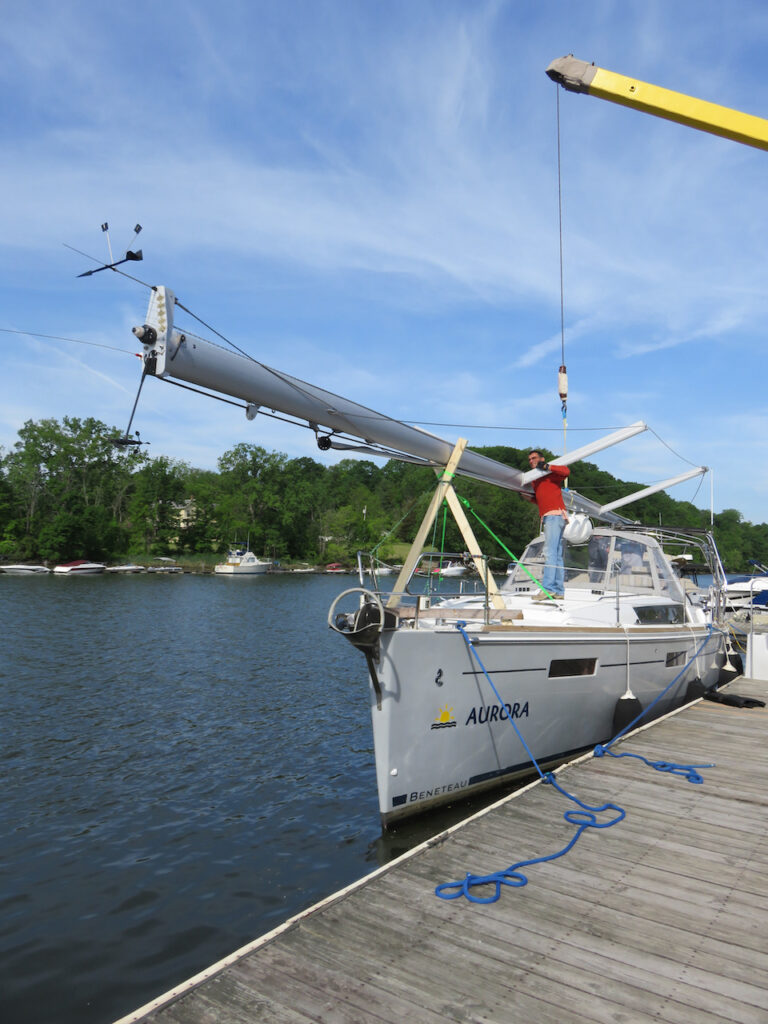
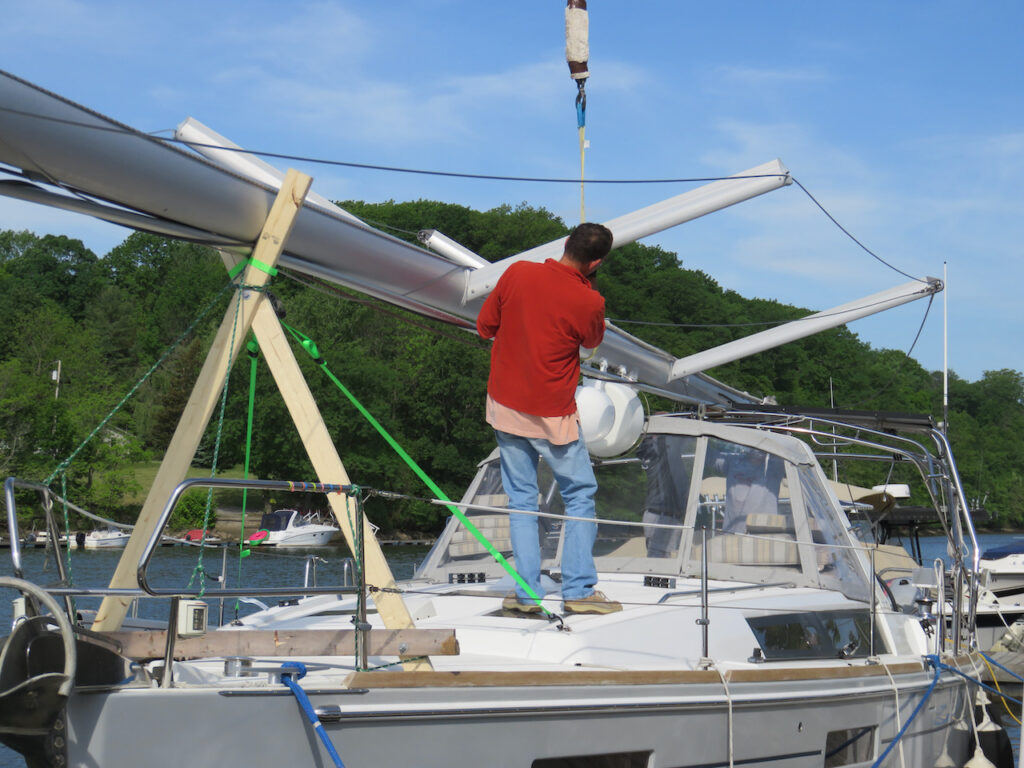
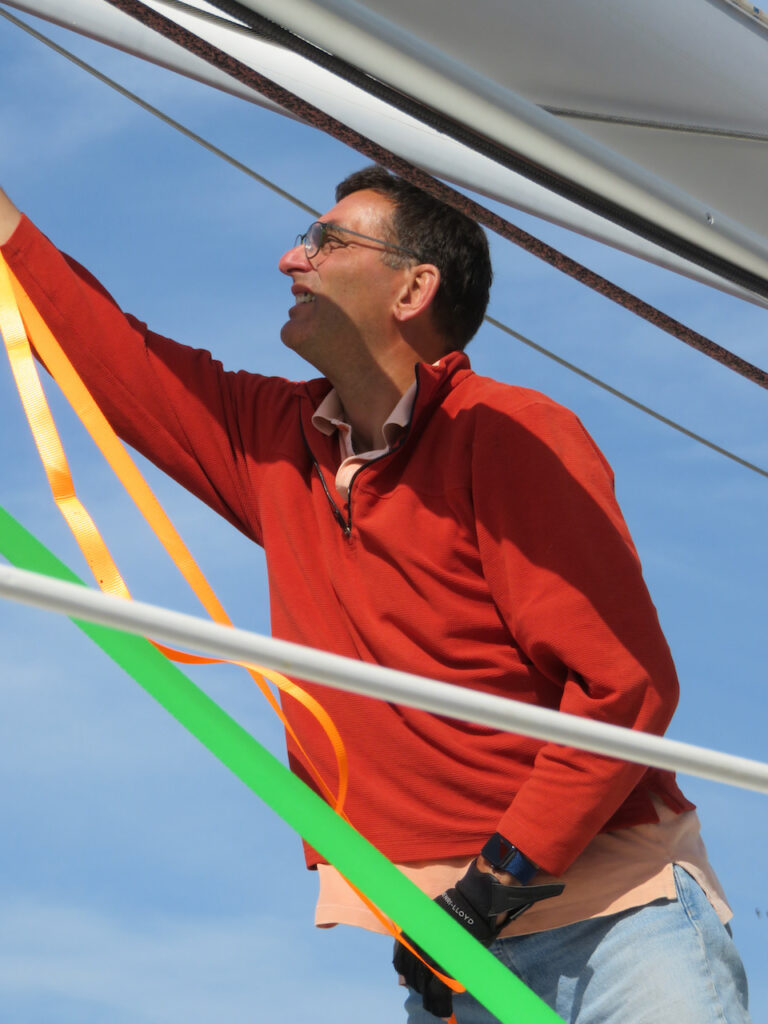
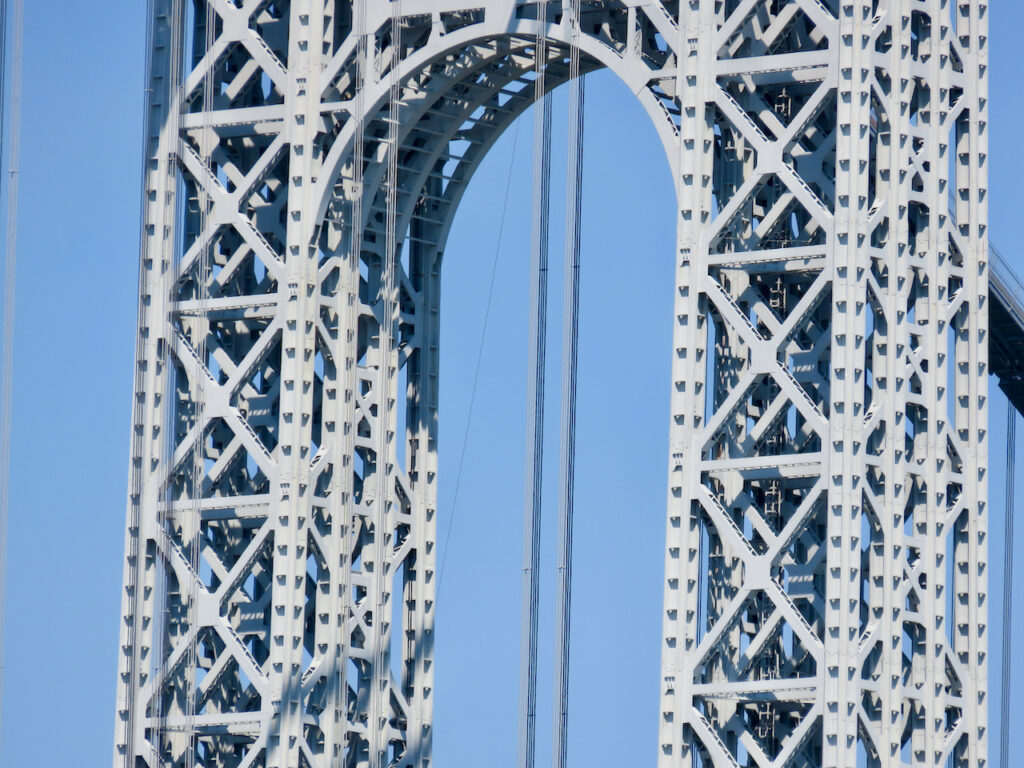

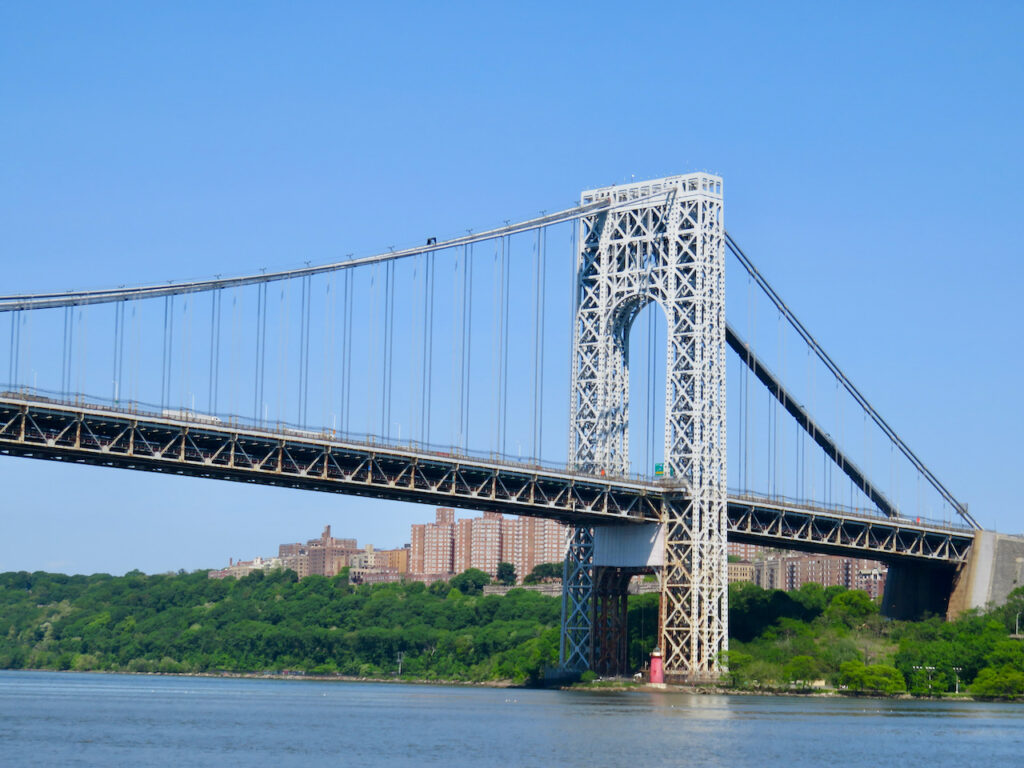
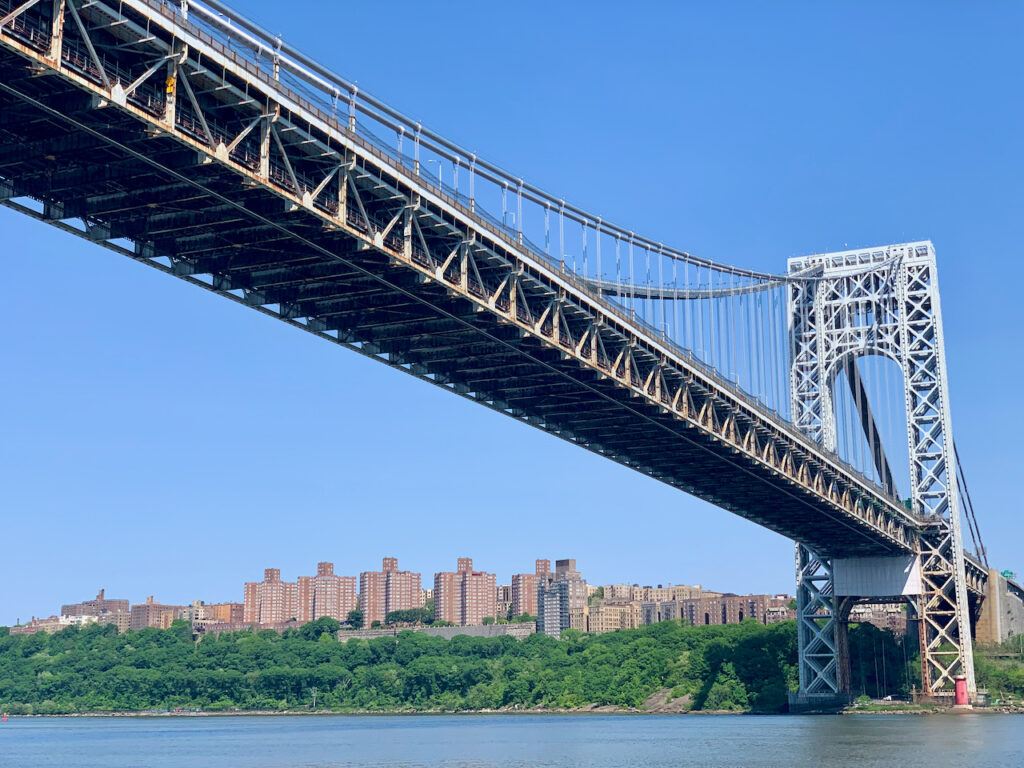
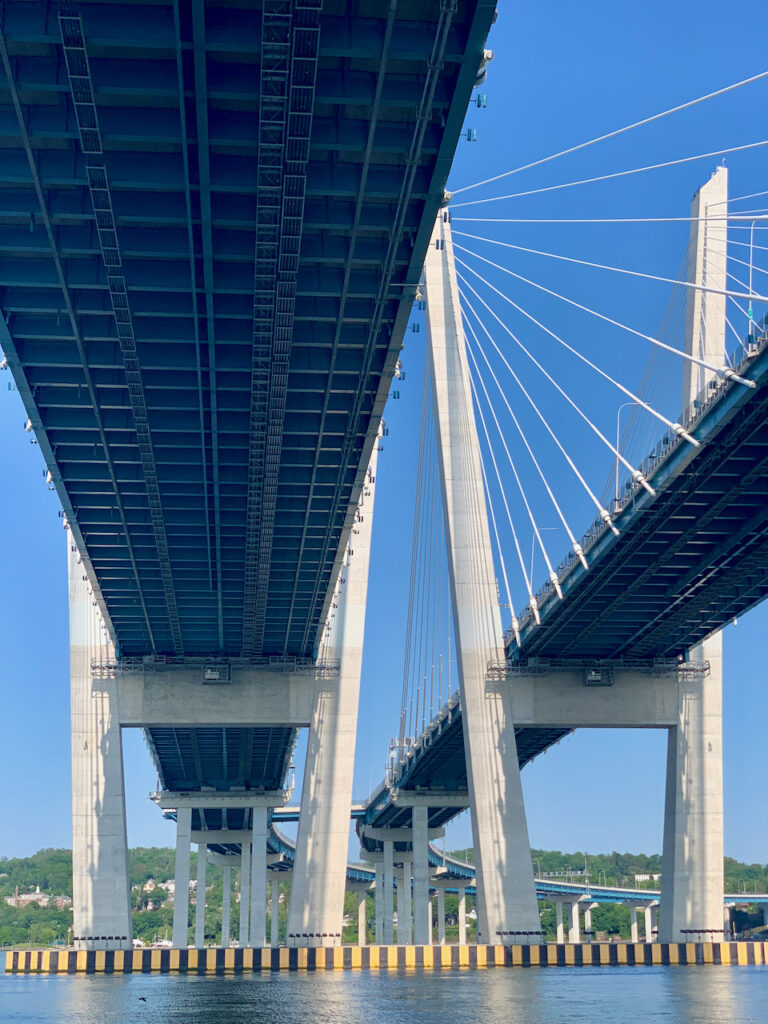

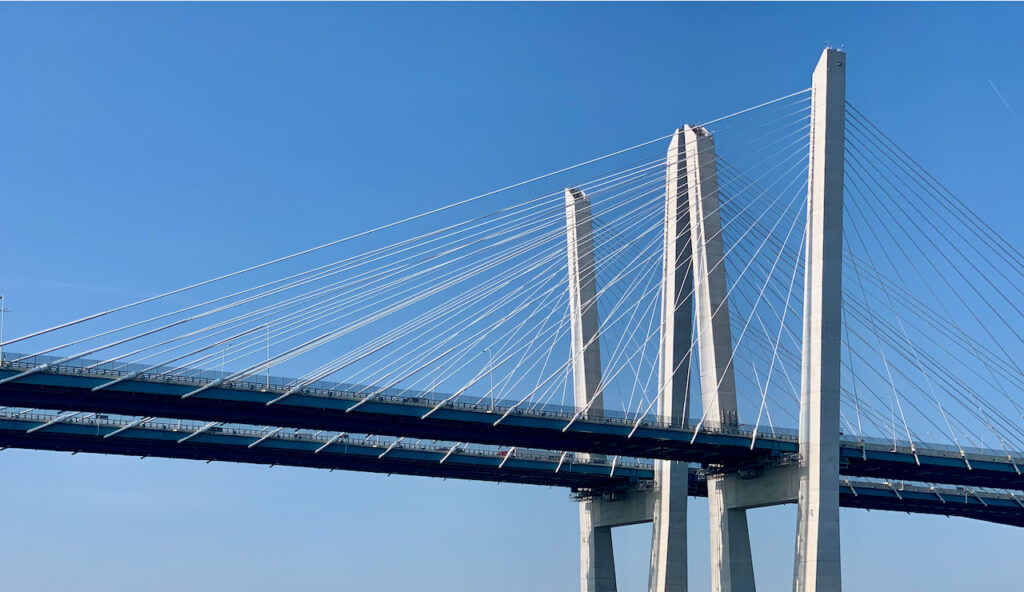
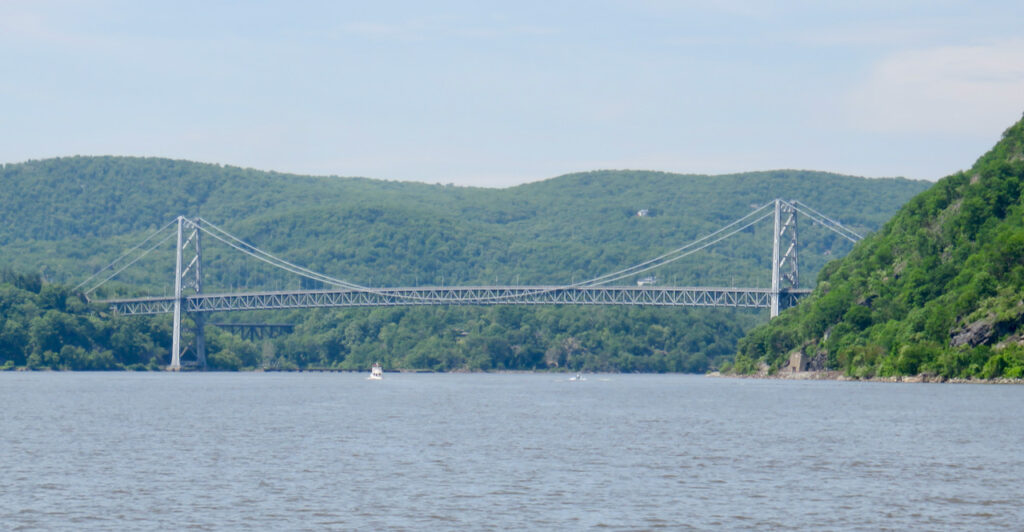
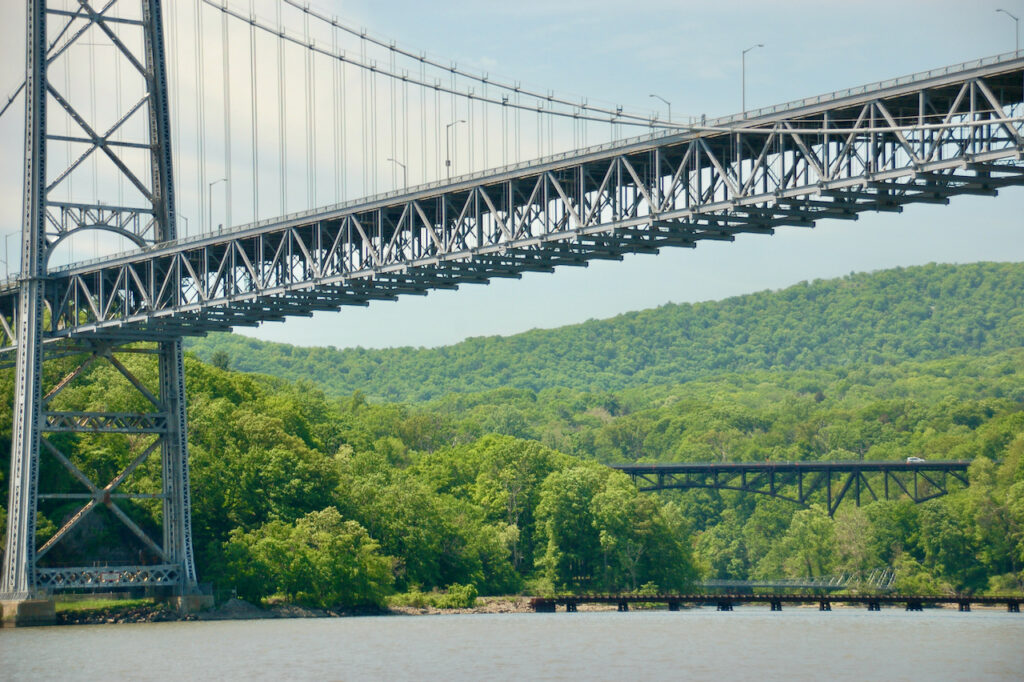
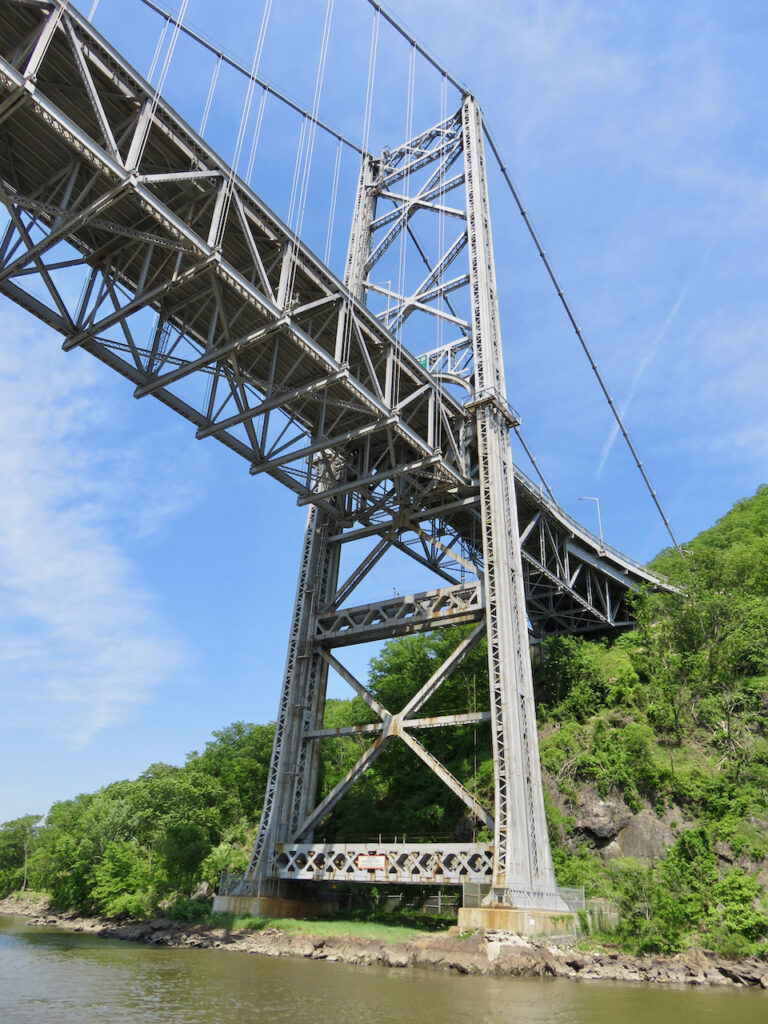
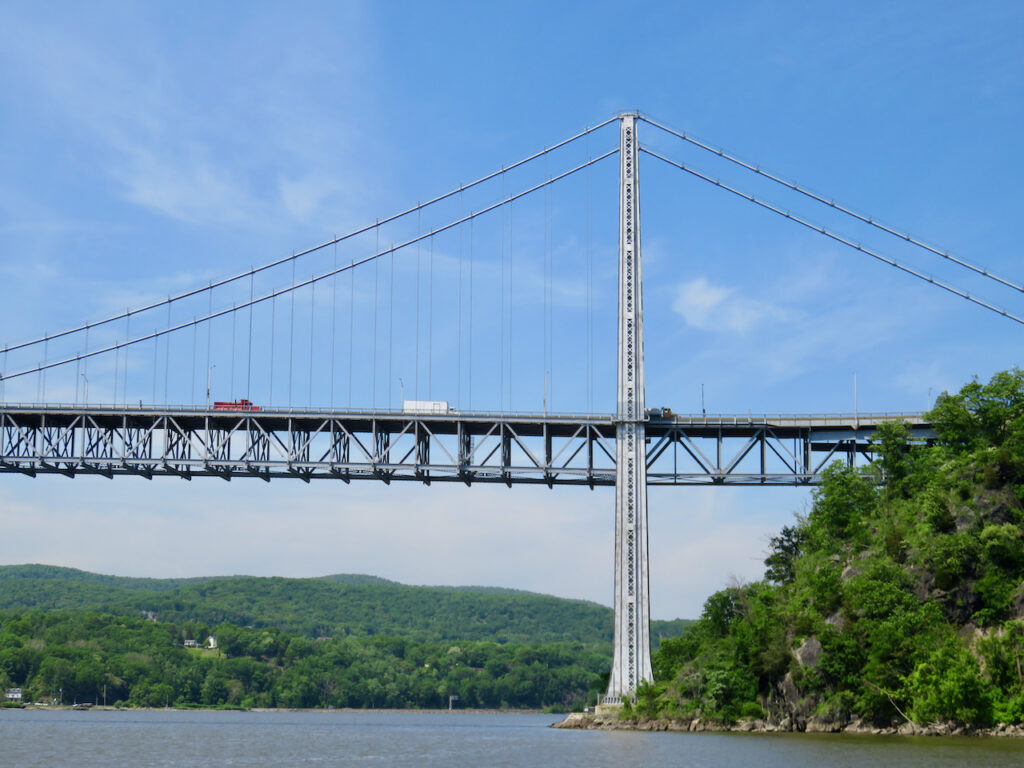
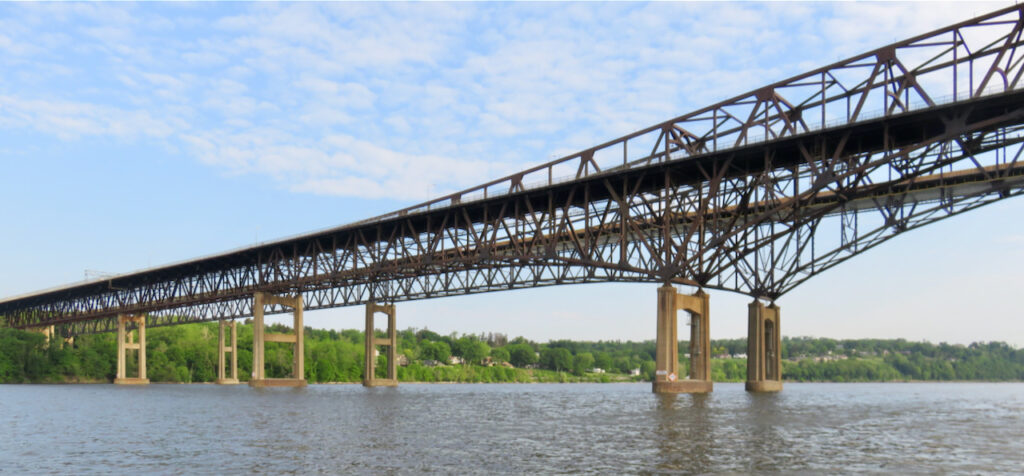
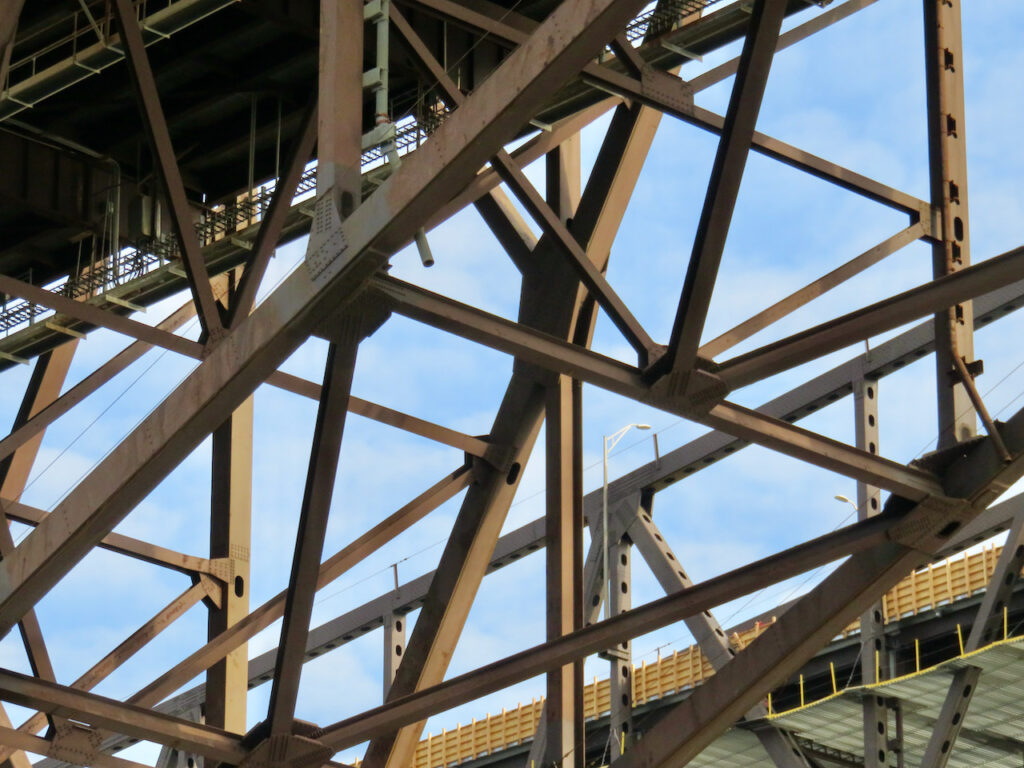
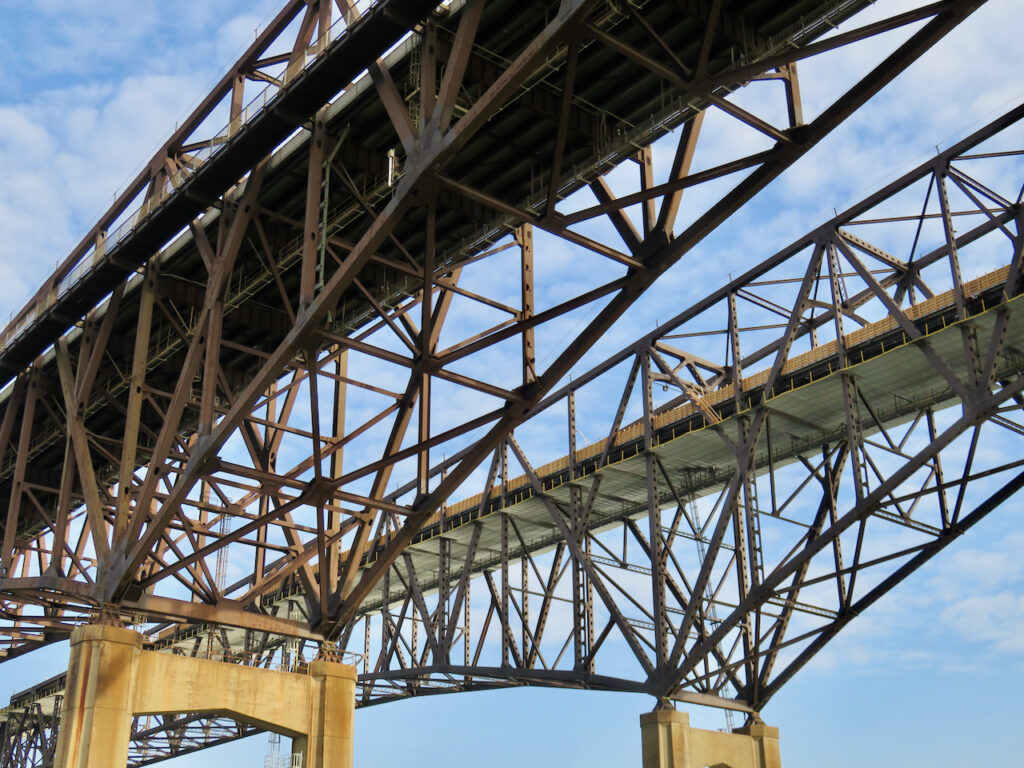
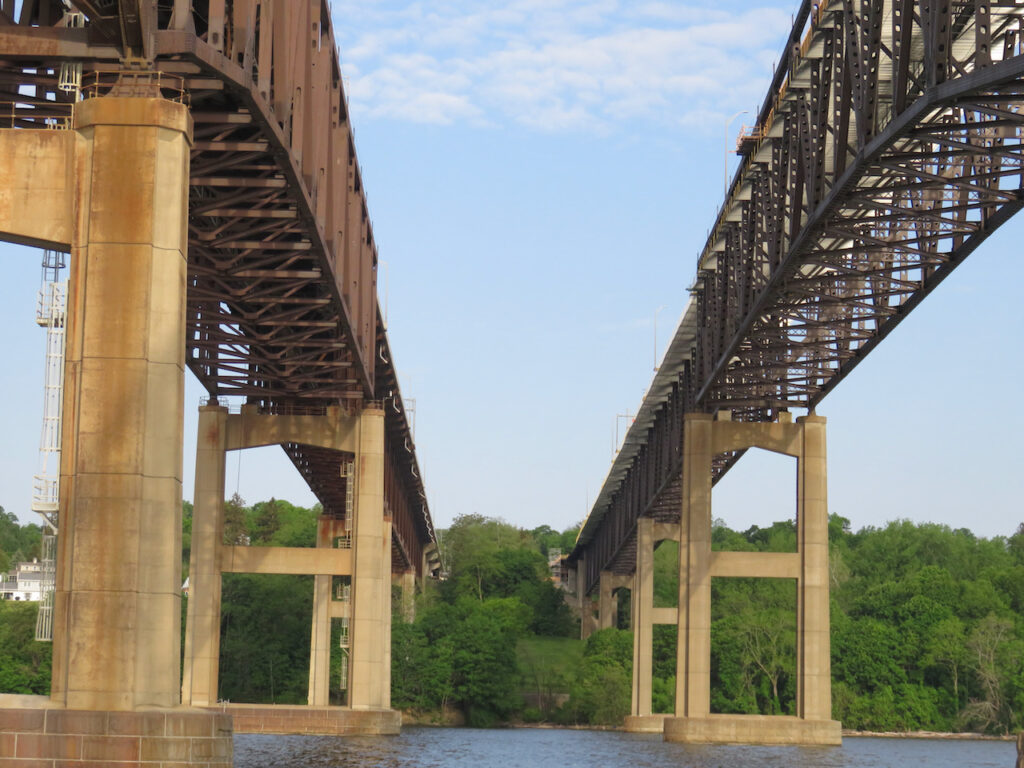
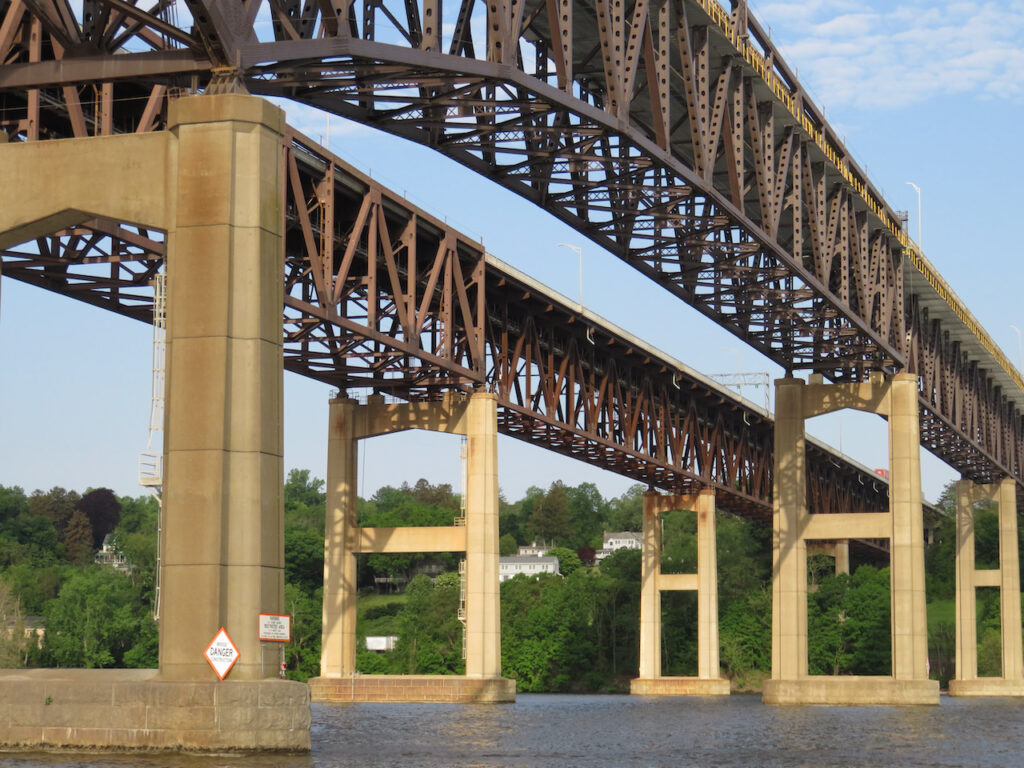


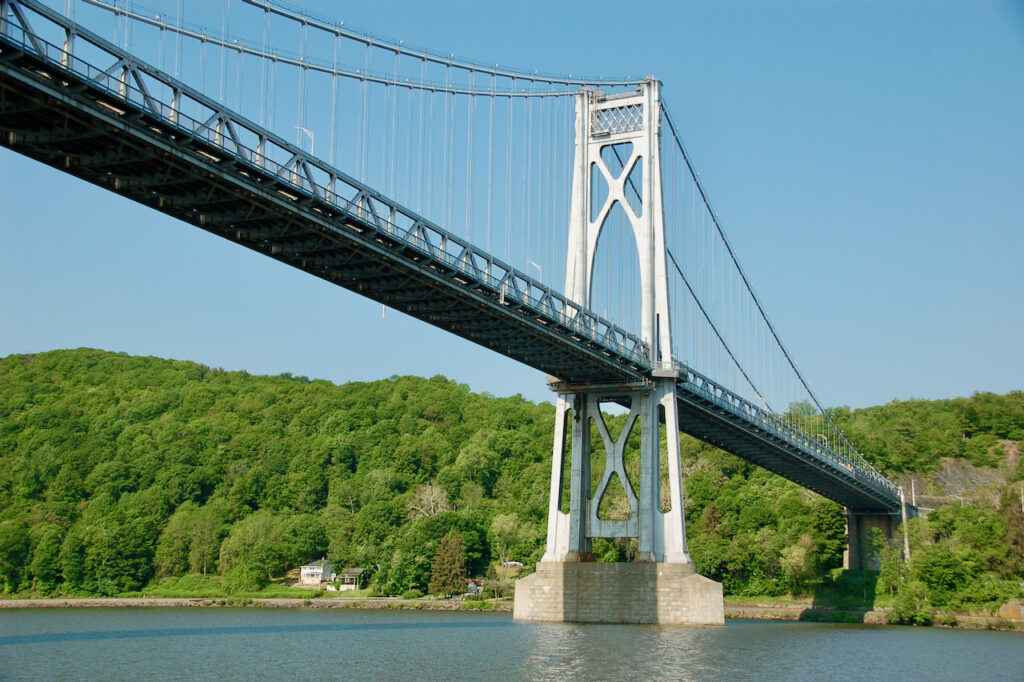


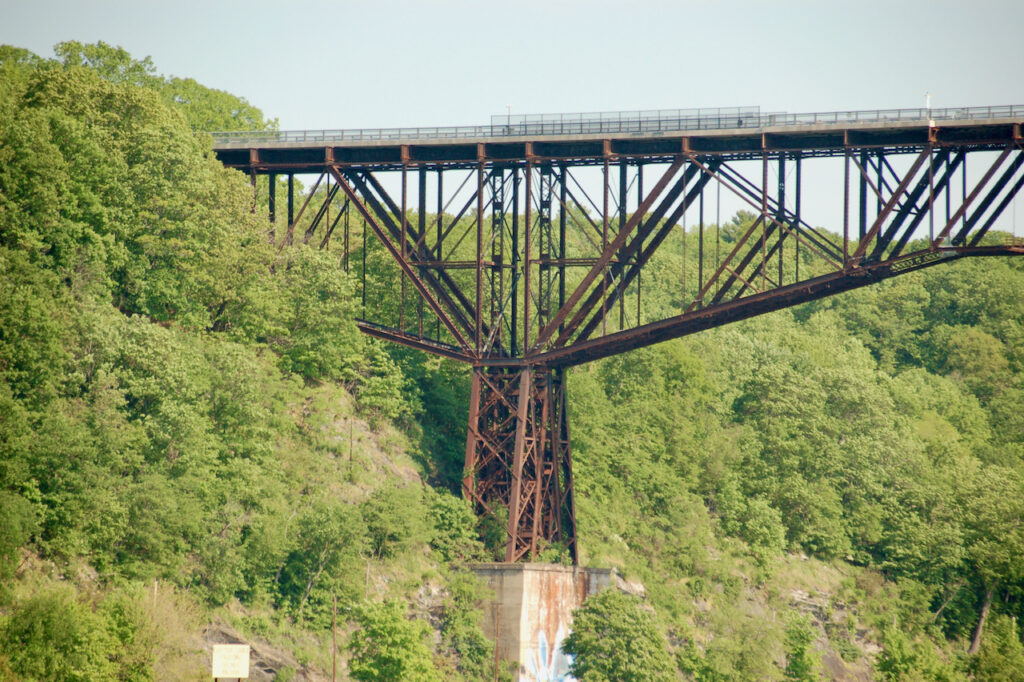
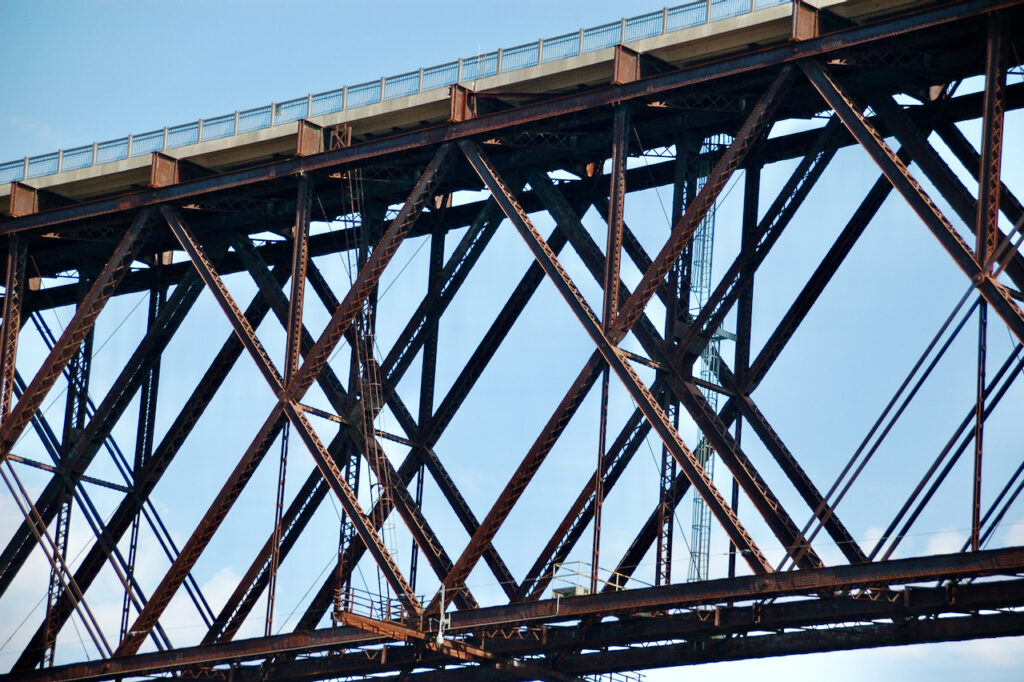


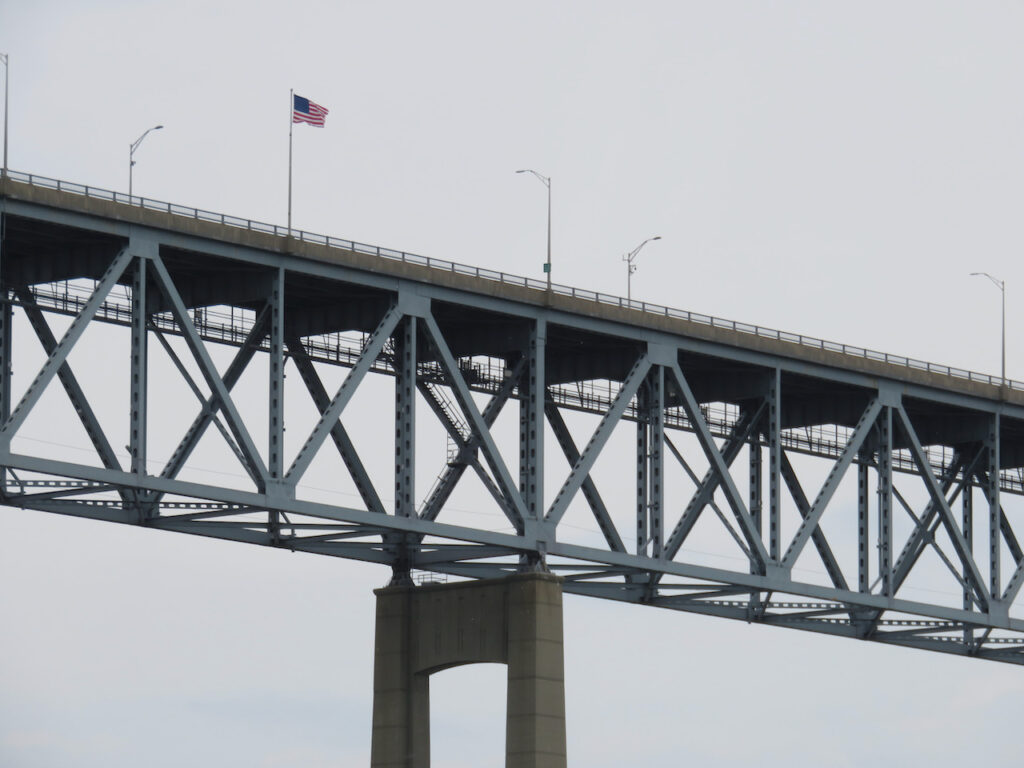
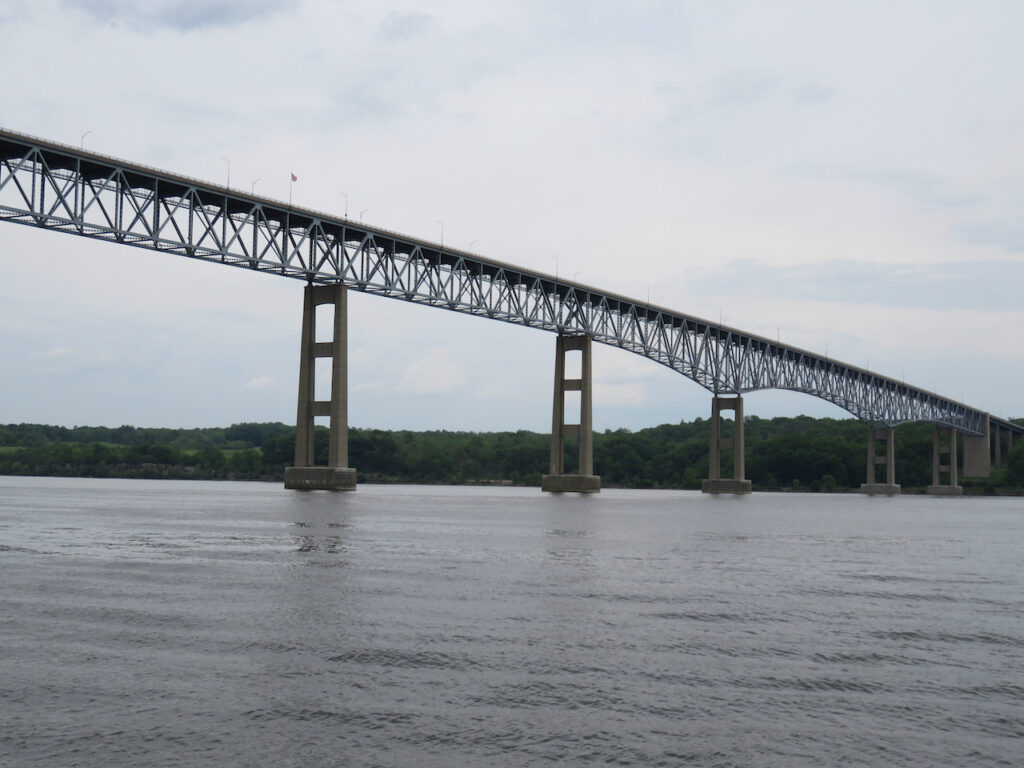
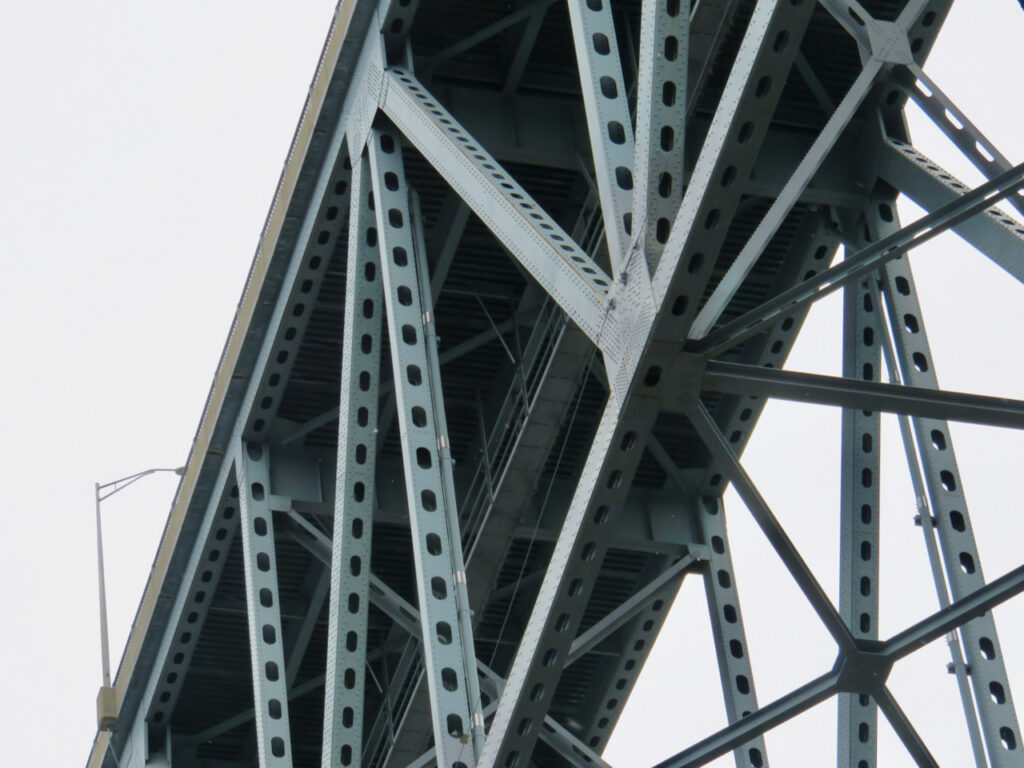
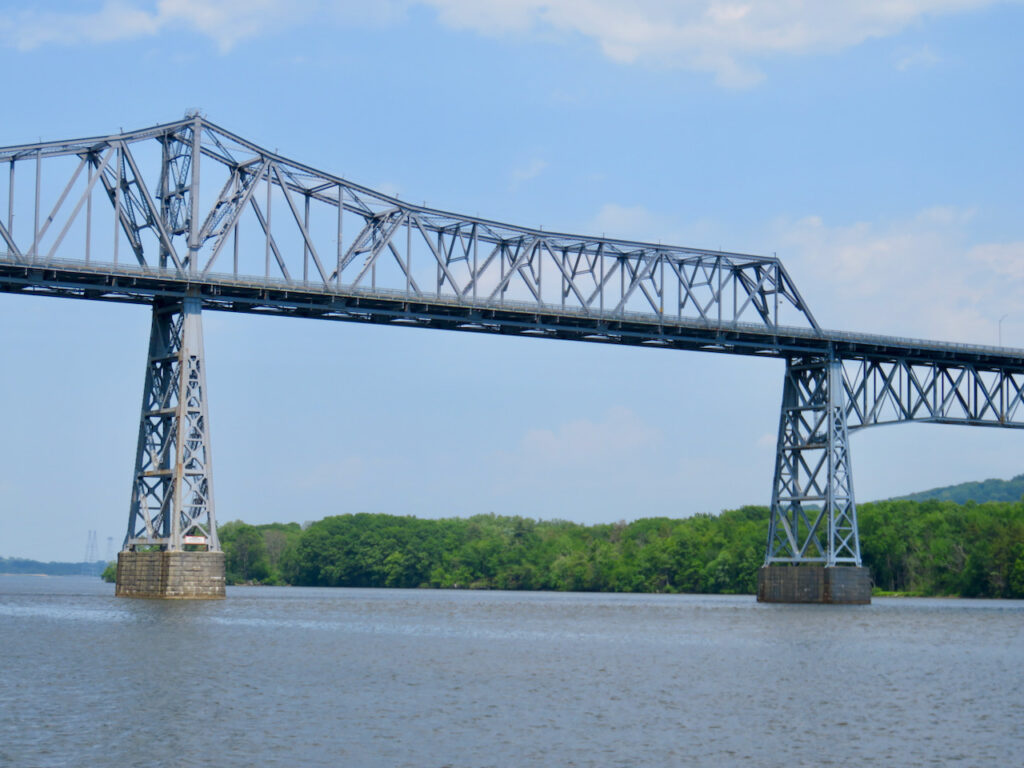
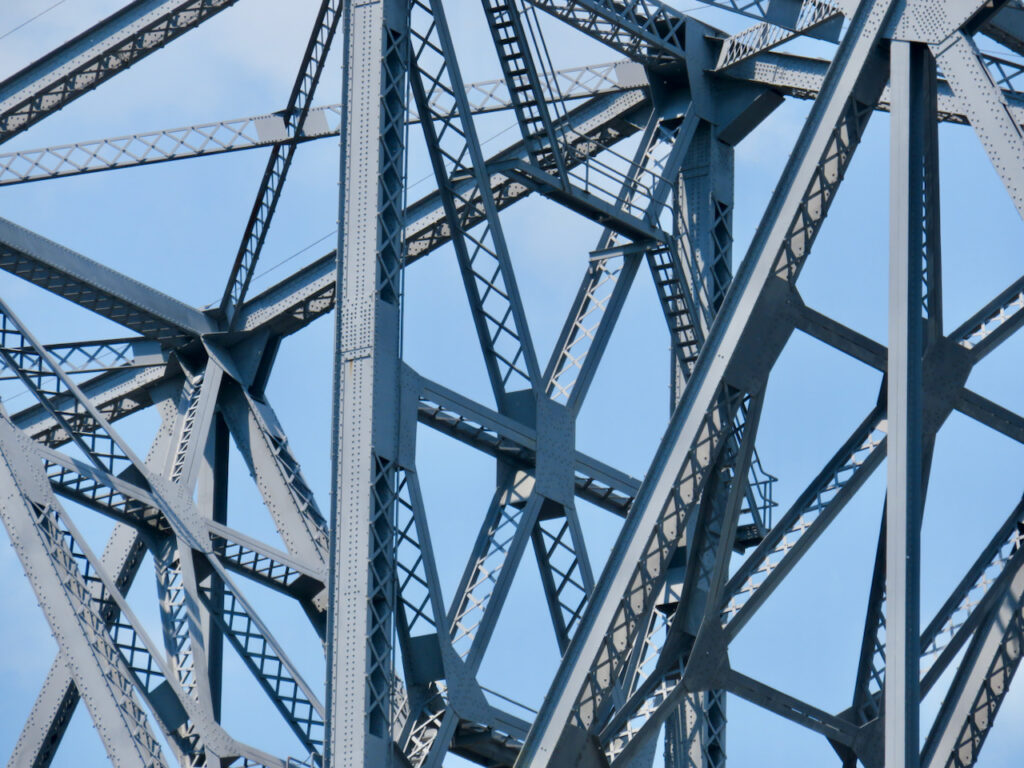


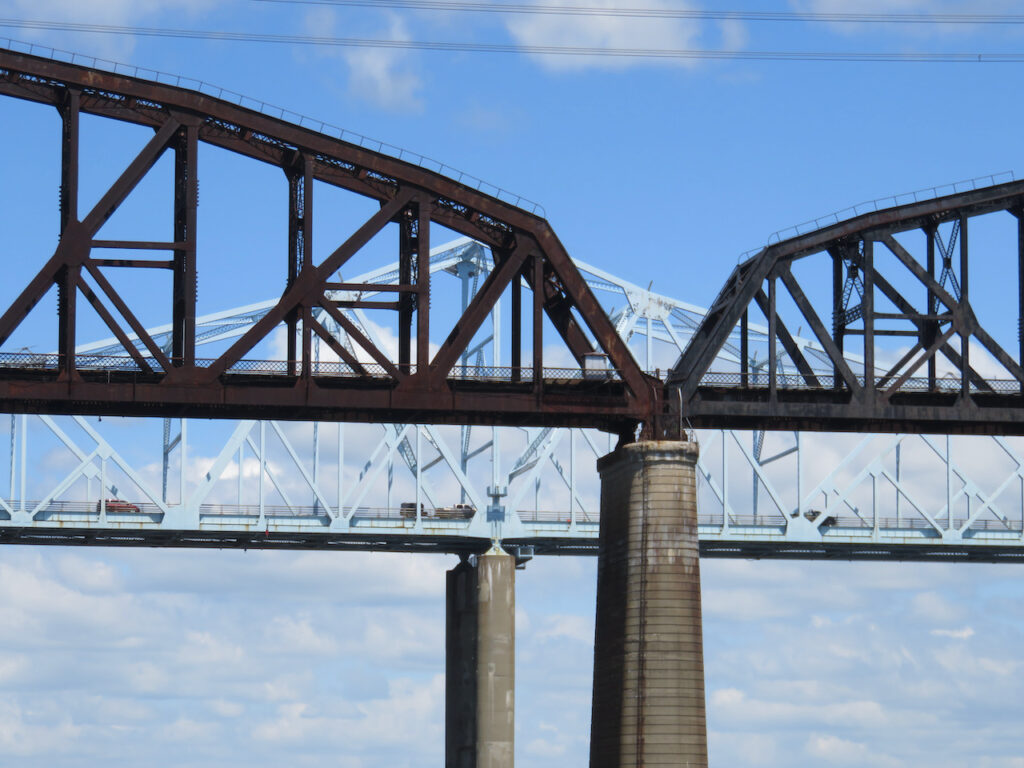
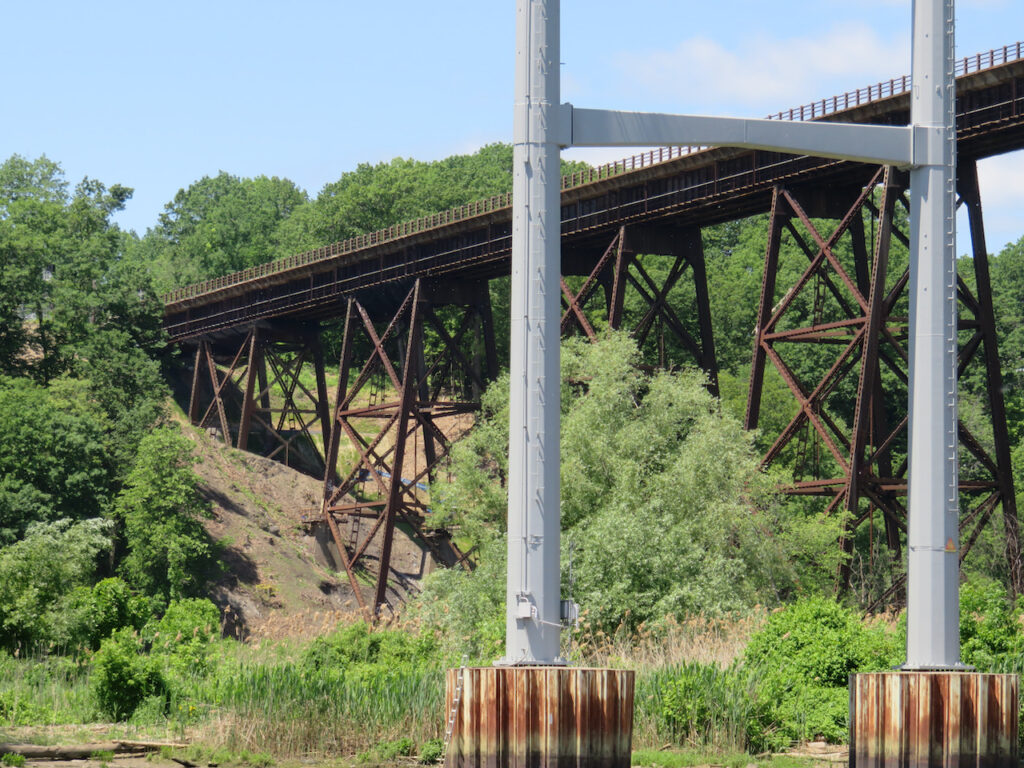
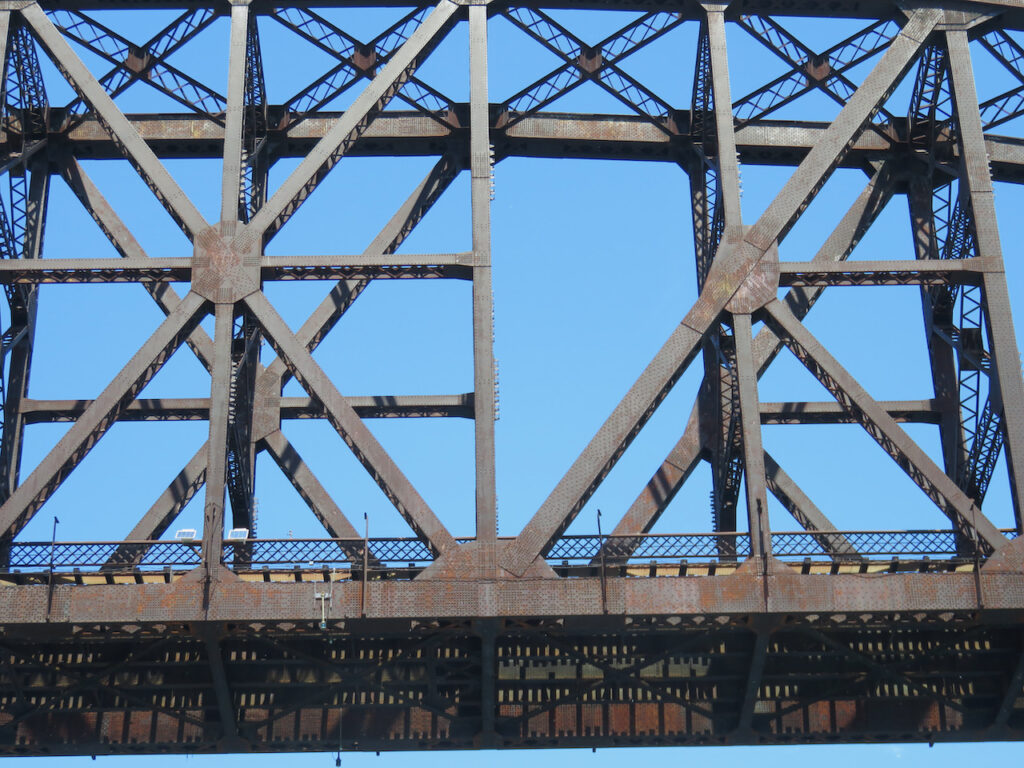
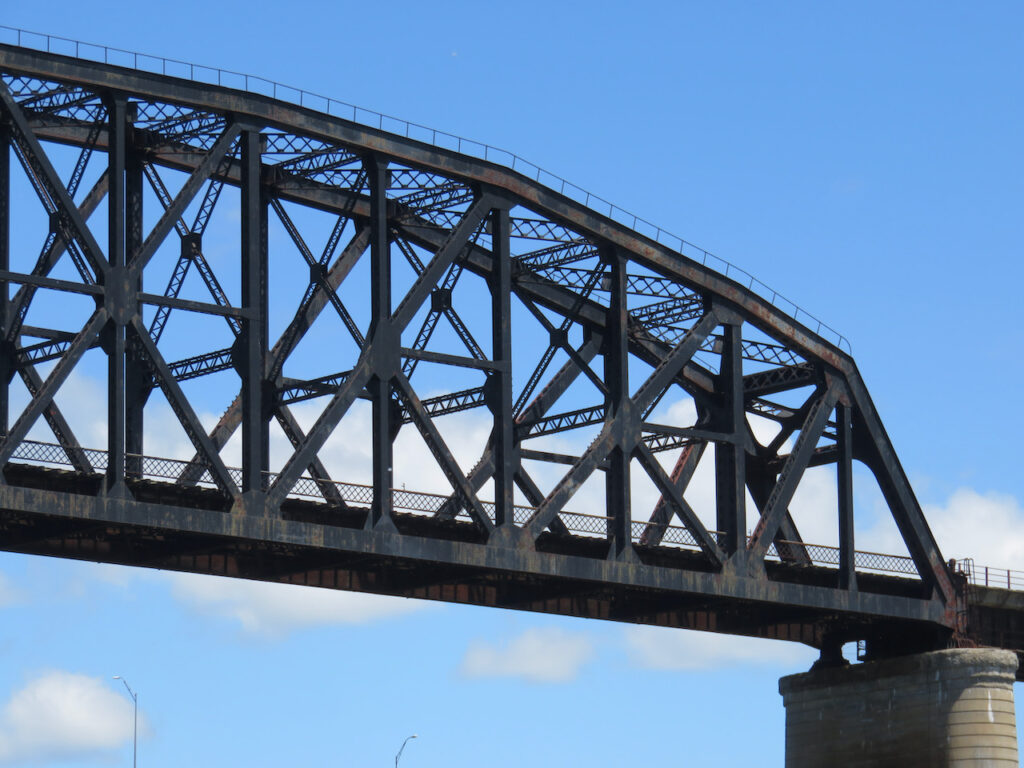
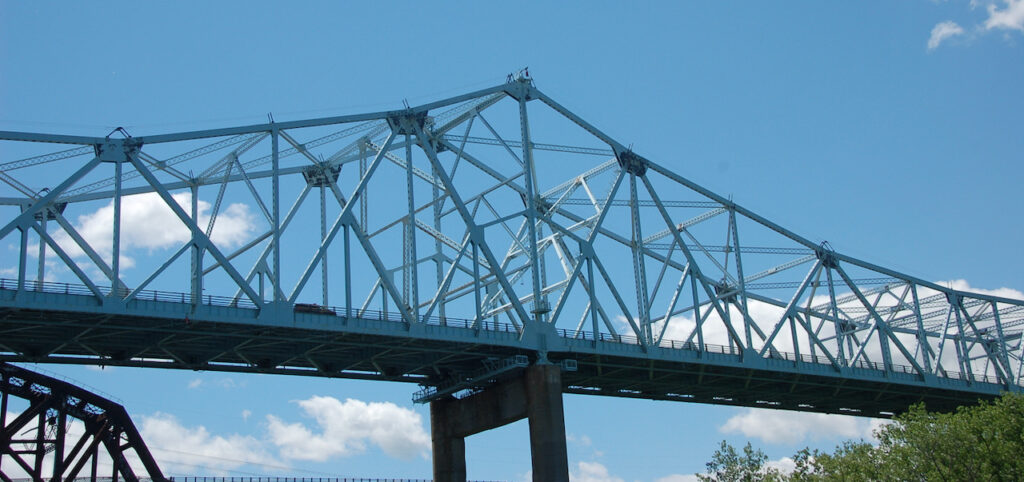
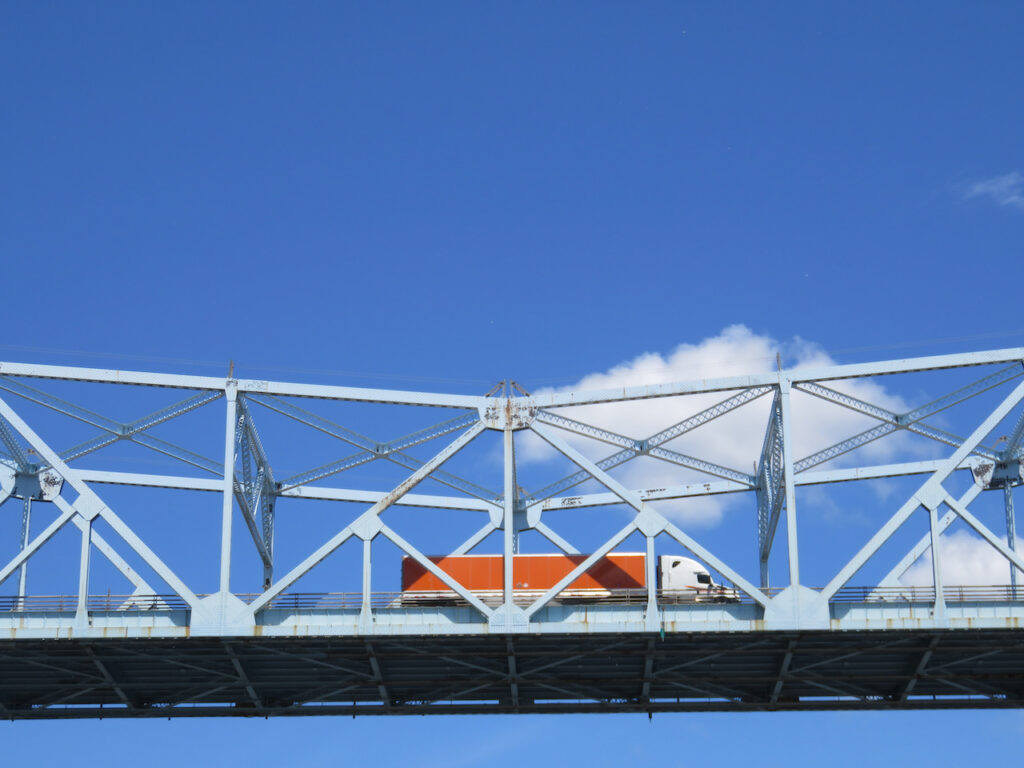


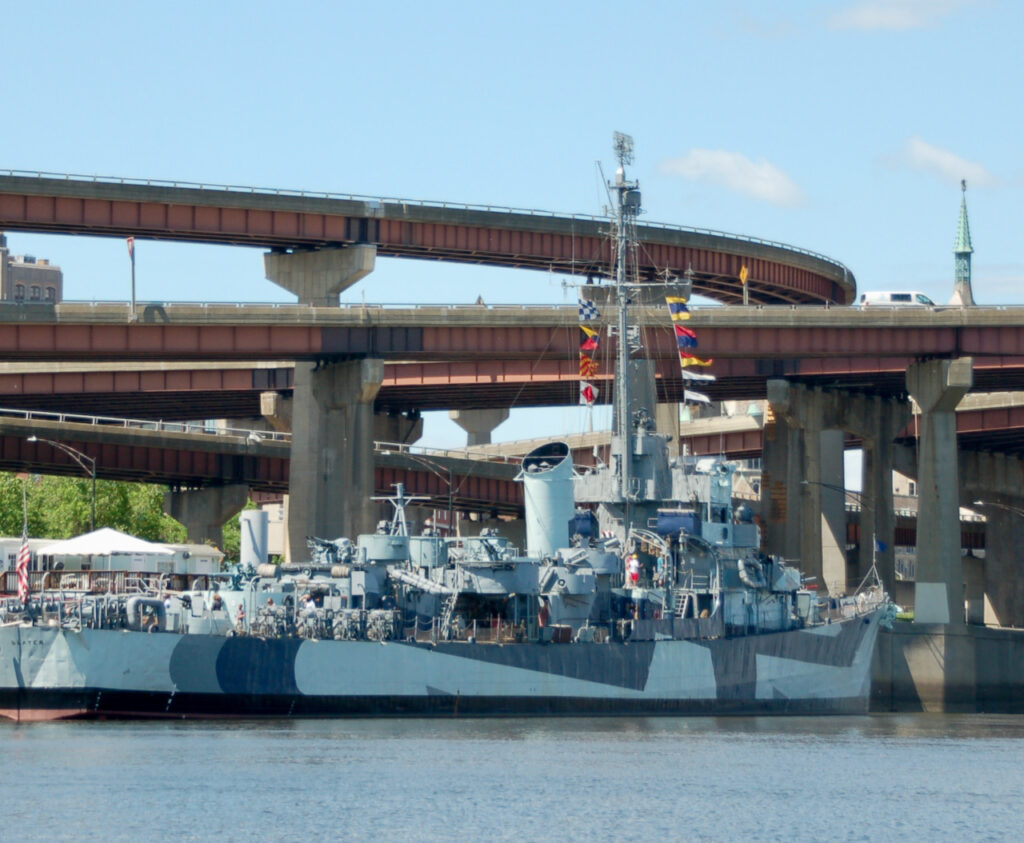
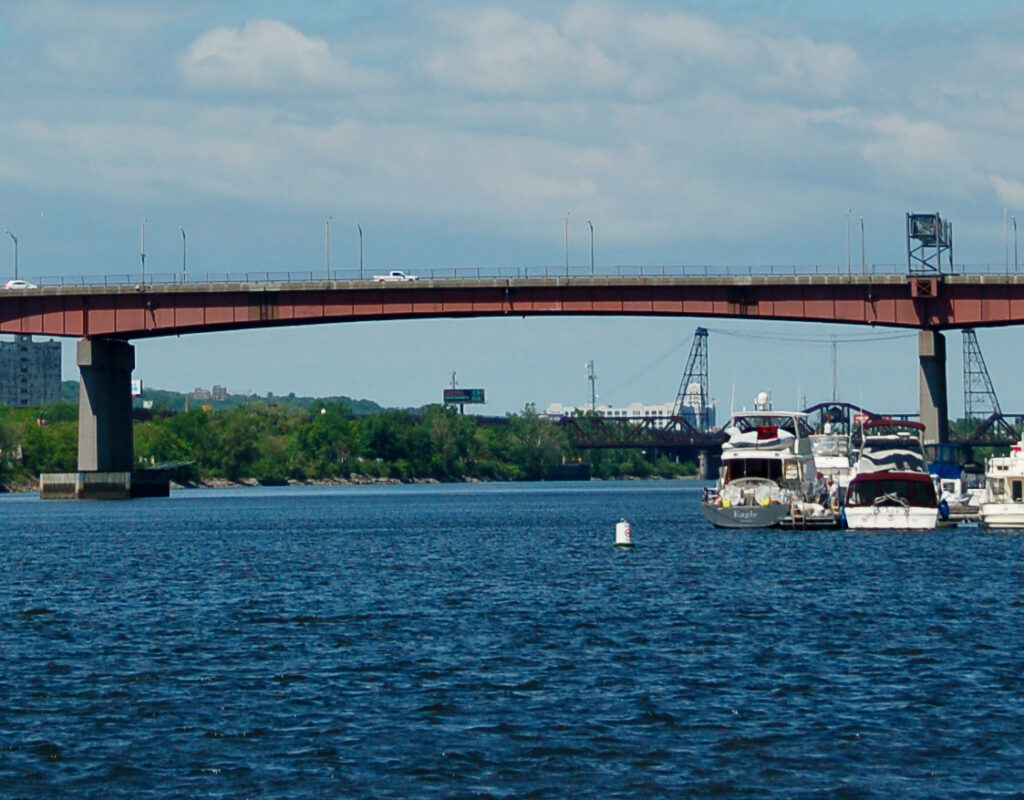
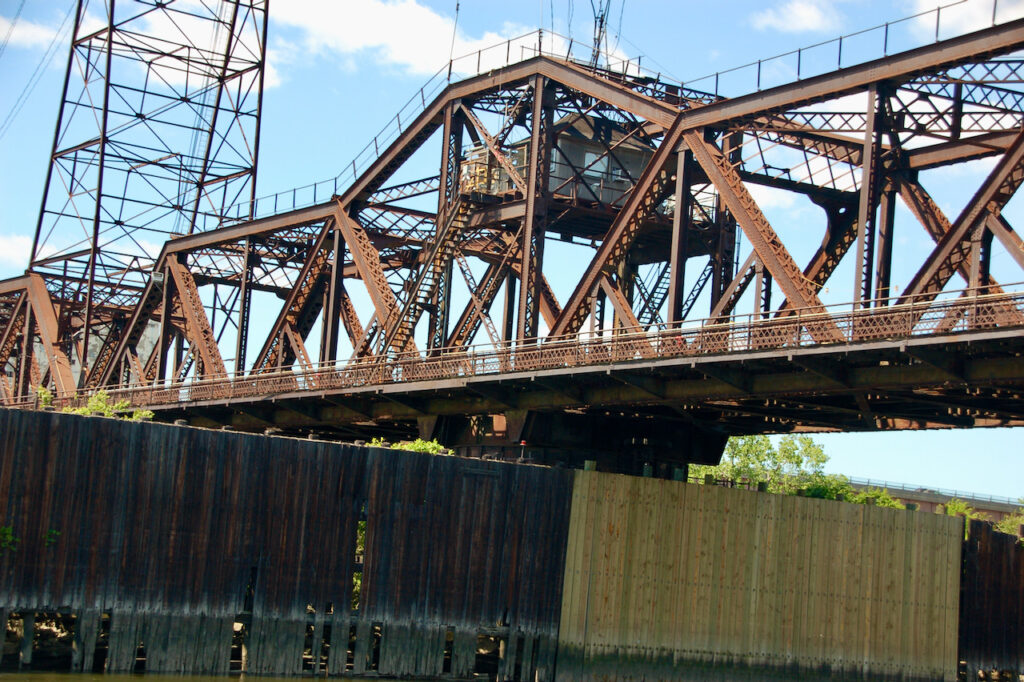


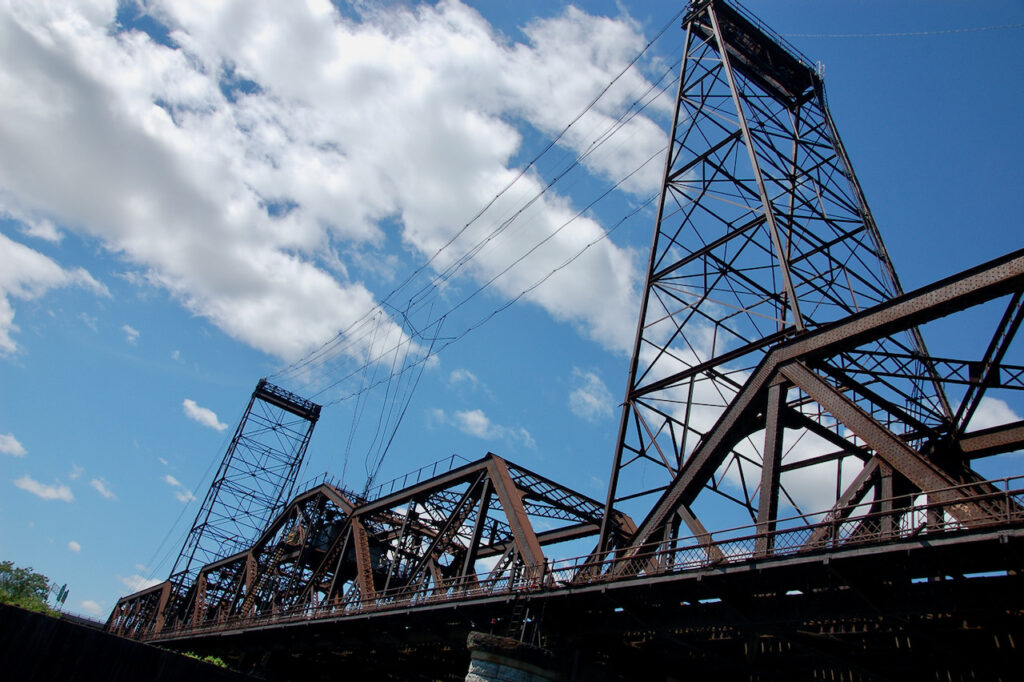
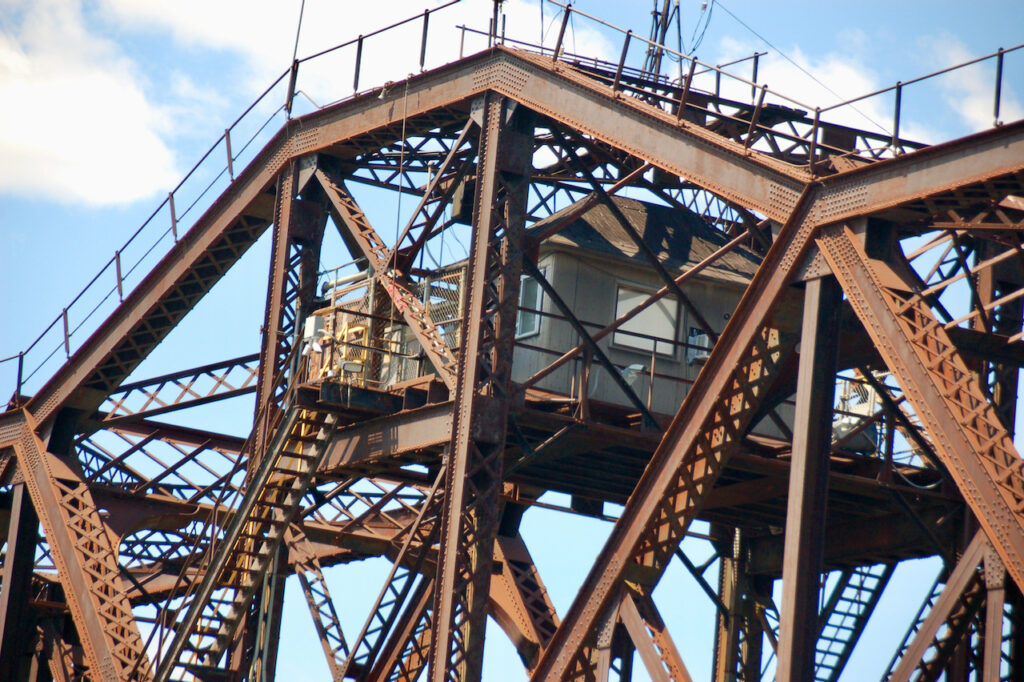

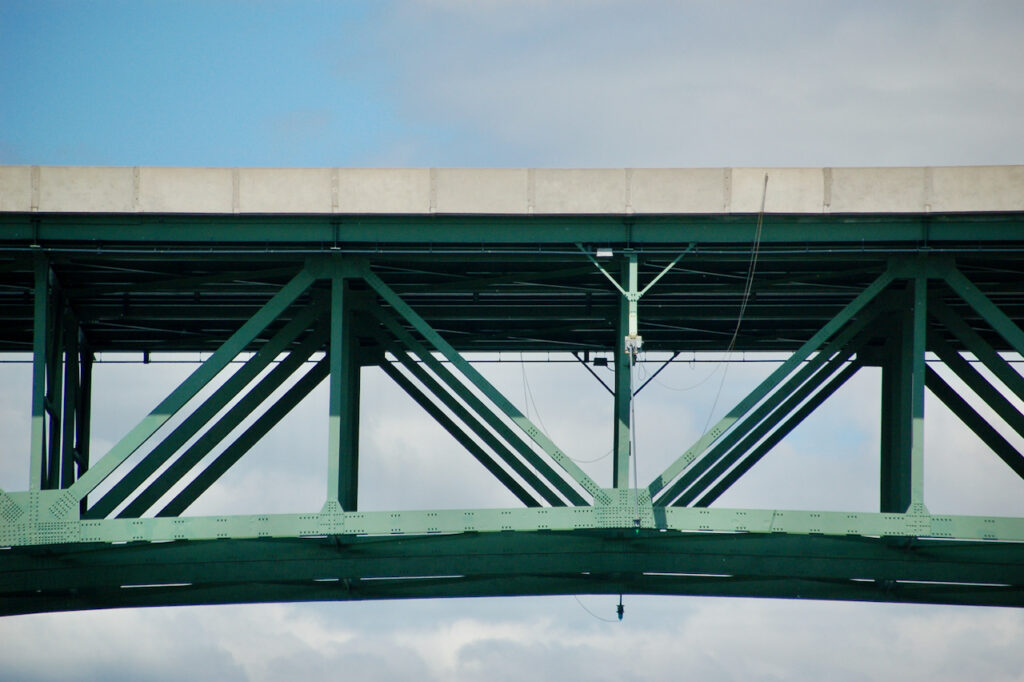

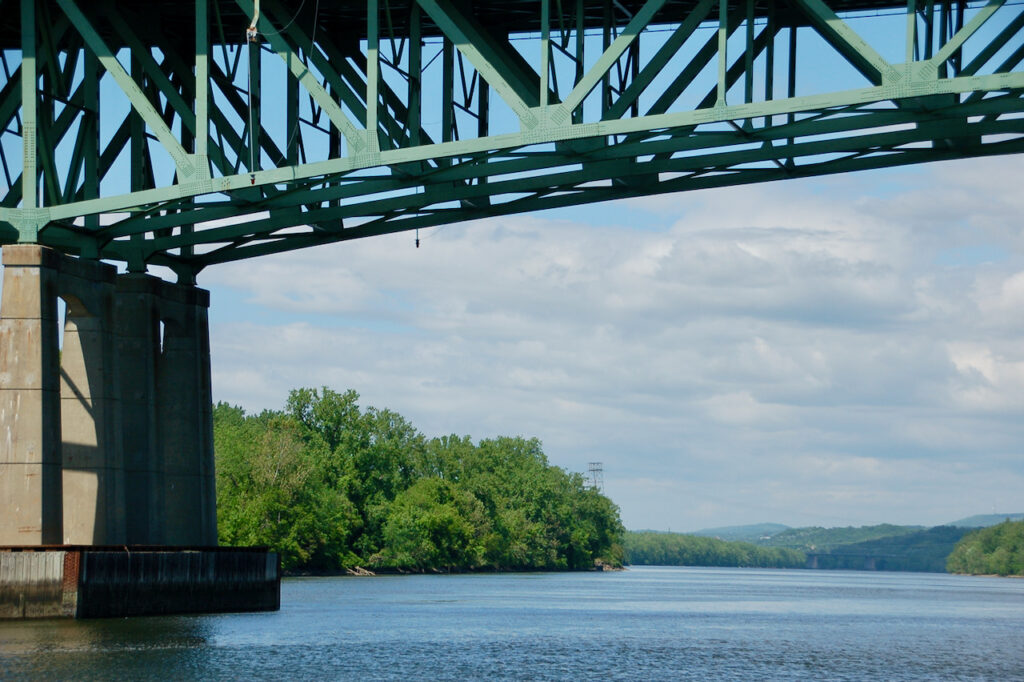
Loving the photos, especially of NYC. You guys have a great eye for capturing the sights. I’ll keep rooting for good weather for you! Safe travels!
Thoroughly enjoying your blog! I worked for a bridge building contractor for 5 years and have had cats for 30 so this post was particularly entertaining. Hoping the rest of your trip is as enjoyable for you both as it is for me. (PS: we’re new to D dock at your marina and met you guys the day of your sailing away bash.)
Thoroughly love all of the pictures. As a New Englander, I have travelled to many of these destinations but by car, of course. The view you have by water is just so different. Love it! Safe travels!
AMAZING!!! Thank you for the beautiful pictures and rich history!!! 🙂
Love all the bridges. You take fantastic pictures